feminist movement
description: series of political campaigns for reforms on feminist issues
213 results

Revolution at Point Zero: Housework, Reproduction, and Feminist Struggle
by
Silvia Federici
Published 4 Oct 2012
Women’s Struggle and the International Feminist Movement What are the implications of this situation for the international feminist movements? The immediate answer is that feminists should not only support the cancellation of the “Third World debt” but engage in a campaign for a policy of reparations, returning to communities devastated by “adjustment” the resources taken away from them. In the long run, feminists must recognize that we cannot expect any betterment of our lives from capitalism. For we have seen that, as soon as the anticolonial, the civil rights, and the feminist movements forced the system to make concessions, it reacted with the equivalent of a nuclear war.
…
From it we also learned to seek the protagonists of class struggle not only among the male industrial proletariat but, most importantly, among the enslaved, the colonized, the world of wageless workers marginalized by the annals of the communist tradition to whom we could now add the figure of the proletarian housewife, reconceptualized as the subject of the (re)production of the workforce. The social/political context in which the feminist movement developed facilitated this identification. Since at least the nineteenth century, it has been a constant in American history that the rise of feminist activism has followed in the footsteps of the rise of Black liberation. The feminist movement in the second half of the twentieth century was no exception. I have long believed that the first example of feminism in the ‘60s in the United States, was the struggle of welfare mothers who, led by African American women inspired by the Civil Rights Movement, mobilized to demand a wage from the state for the work of raising their children, laying the groundwork on which organizations like Wages for Housework could grow.
…
Indeed, even more than the experience of self-reliance that the war bestowed on many women—symbolized in the United States by the iconic image of Rosie the Riveter—what shaped our relation to reproduction in the postwar period, especially in Europe, was the memory of the carnage into which we had been born. This is a chapter in the history of the international feminist movement still to be written.1 Yet, in recalling the visits that as school children in Italy we made to exhibits on the concentration camps, and the tales told around the dinner table of the many times we barely escaped being killed by bombs, running through the night searching for safety under a blazing sky, I cannot help wondering how much those experiences weighed on my and other women’s decisions not to have children and not to become housewives.

Flowers of Fire: The Inside Story of South Korea's Feminist Movement and What It Means for Women's Rights Worldwide
by
Hawon Jung
Published 21 Mar 2023
seqNo=1081 188Hankook Research, ( 140-3) [Hankook Research weekly report (volume 143-3)], July 28, 2021, https://hrcopinion.co.kr/wp-content/uploads/2021/07/140-3-%EB%B3%B4%EA%B3%A0%EC%84%9C_%ED%95%9C%EA%B5%AD%EB%A6%AC%EC%84%9C%EC%B9%98-%EC%A3%BC%EA%B0%84%EB%A6%AC%ED%8F%AC%ED%8A%B8_%EC%97%AC%EB%A1%A0%EC%86%8D%EC%9D%98%EC%97%AC%EB%A1%A0-%EC%A0%9C140-3%ED%98%B82021%EB%85%84-7%EC%9B%94-28%EC%9D%BC_%EC%84%B1%EC%86%8C%EC%88%98%EC%9E%90%EC%97%90-%EB%8C%80%ED%95%9C-%EC%9D%B8%EC%8B%9D_2.pdf CONCLUSION 1Meaghan Beatley, “Betting on Anti-feminism as a Winning Political Strategy,” The Atlantic, April 24, 2019, https://www.theatlantic.com/international/archive/2019/04/spain-vox-feminism/587824/ Adrien Vincente,”Spanish Feminist movement faces far-right backlash,” AFP, January 11, 2019, https://sg.news.yahoo.com/spanish-feminist-movement-faces-far-backlash-035348625.html 2Leta Hong Fincher, “Why Peng Shuai Has China’s Leaders Spooked,” The New York Times, December 2, 2021, https://www.nytimes.com/2021/12/02/opinion/peng-shuai-china-leaders.html 3Agnieszka Wisniewska, “The Black Protests have changed Poland,” FES Connect, March 18, 2018, https://connect.fes.de/reading-picks/the-black-protests-have-changed-poland/ Alicja Rajpert, “Black Protests in Poland: Women’s Strike or Objection Towards the Government?”
…
But South Korea’s reality also represents a unique case wherein a well-run nation that has achieved great economic, technological, and political advances has seen its patriarchal values changing at a surprisingly slow pace, challenging the widely held belief that women’s overall status in society tends to improve in tandem with such progresses. Yet over the past few years, South Korean women have pushed back like never before. Inspired by the #MeToo campaign in the United States and a surge of feminist movements at home, South Korea’s #MeToo story is one of the most successful in Asia and beyond. Women like Kim and Na-Young have fought to bring down countless men accused of sexual misconduct, including a powerful presidential contender; put the country on the forefront of the global battle against tech-based sexual abuse; ushered in a rare victory in women’s rights to access abortion; and launched a homegrown movement against the impossible beauty standards imposed on them.
…
While global studies have shown that false reports are a very small percentage of the already small percentage of cases that get reported at all, Yoon’s pledge was a nod to the popular rallying cries among the young men’s-rights activists who subsequently became his ardent supporters. Meanwhile, the challenges faced by South Korean feminists not only came from outside the movement but also from within: lack of resources, burnout, and endless online squabbles over who qualifies as “real” feminists. And like many feminist movements elsewhere, past and present—or grassroots social movements of any kind—South Korean women and their activism are far from perfect; they can be smart, strong, courageous, calculating, dogmatic, and self-righteous, and their activism inspiring, powerful, chaotic, and fractured. The fact is that women around the world still face an enormous amount of work to be done—and, more than ever before, need new inspiration to keep fighting.

The Undoing Project: A Friendship That Changed Our Minds
by
Michael Lewis
Published 6 Dec 2016
One of the groups had “Linda is a bank teller” on its list; the other got “Linda is a bank teller and is active in the feminist movement.” Those were the only two descriptions that mattered, though of course the students didn’t know that. The group given “Linda is a bank teller and is active in the feminist movement” judged it more likely than the group assigned “Linda is a bank teller.” That result was all that Danny and Amos needed to make their big point: The rules of thumb people used to evaluate probability led to misjudgments. “Linda is a bank teller and is active in the feminist movement” could never be more probable than “Linda is a bank teller.”
…
Danny and Amos asked: To what degree does Linda resemble the typical member of each of the following classes? 1) Linda is a teacher in elementary school. 2) Linda works in a bookstore and takes Yoga classes. 3) Linda is active in the feminist movement. 4) Linda is a psychiatric social worker. 5) Linda is a member of the League of Women voters. 6) Linda is a bank teller. 7) Linda is an insurance salesperson. 8) Linda is a bank teller and is active in the feminist movement. Danny passed out the Linda vignette to students at the University of British Columbia. In this first experiment, two different groups of students were given four of the eight descriptions and asked to judge the odds that they were true.
…
“Linda is a bank teller and is active in the feminist movement” could never be more probable than “Linda is a bank teller.” “Linda is a bank teller and active in the feminist movement” was just a special case of “Linda is a bank teller.” “Linda is a bank teller” included “Linda is a bank teller and activist in the feminist movement” along with “Linda is a bank teller and likes to walk naked through Serbian forests” and all other bank-telling Lindas. One description was entirely contained by the other. People were blind to logic when it was embedded in a story. Describe a very sick old man and ask people: Which is more probable, that he will die within a week or die within a year? More often than not, they will say, “He’ll die within a week.”

The Drunkard's Walk: How Randomness Rules Our Lives
by
Leonard Mlodinow
Published 12 May 2008
This is the order in which 85 percent of the respondents ranked the three possibilities: Statement Average Probability Rank Linda is active in the feminist movement. 2.1 Linda is a bank teller and is active in the feminist movement. 4.1 Linda is a bank teller. 6.2 If nothing about this looks strange, then Kahneman and Tversky have fooled you, for if the chance that Linda is a bank teller and is active in the feminist movement were greater than the chance that Linda is a bank teller, there would be a violation of our first law of probability, which is one of the most basic of all: The probability that two events will both occur can never be greater than the probability that each will occur individually.
…
Kahneman and Tversky were not surprised by the result because they had given their subjects a large number of possibilities, and the connections among the three scenarios could easily have gotten lost in the shuffle. And so they presented the description of Linda to another group, but this time they presented only these possibilities: Linda is active in the feminist movement. Linda is a bank teller and is active in the feminist movement. Linda is a bank teller. To their surprise, 87 percent of the subjects in this trial also ranked the probability that Linda is a bank teller and is active in the feminist movement higher than the probability that Linda is a bank teller. And so the researchers pushed further: they explicitly asked a group of thirty-six fairly sophisticated graduate students to consider their answers in light of our first law of probability.
…
Tversky and Kahneman presented this description to a group of eighty-eight subjects and asked them to rank the following statements on a scale of 1 to 8 according to their probability, with 1 representing the most probable and 8 the least. Here are the results, in order from most to least probable: Statement Average Probability Rank Linda is active in the feminist movement. 2.1 Linda is a psychiatric social worker. 3.1 Linda works in a bookstore and takes yoga classes. 3.3 Linda is a bank teller and is active in the feminist movement. 4.1 Linda is a teacher in an elementary school. 5.2 Linda is a member of the League of Women Voters. 5.4 Linda is a bank teller. 6.2 Linda is an insurance salesperson. 6.4 At first glance there may appear to be nothing unusual in these results: the description was in fact designed to be representative of an active feminist and unrepresentative of a bank teller or an insurance salesperson.

Capitalism: A Ghost Story
by
Arundhati Roy
Published 5 May 2014
Another conceptual coup has to do with foundations’ involvement with the feminist movement. Why do most “official” feminists and women’s organizations in India keep a safe distance between themselves and organizations like say the ninety-thousand-member Krantikari Adivasi Mahila Sanghatan (Revolutionary Adivasi Women’s Association) that is fighting patriarchy in its own communities and displacement by mining corporations in the Dandakaranya forest? Why is it that the dispossession and eviction of millions of women from land that they owned and worked is not seen as a feminist problem? The hiving off of the liberal feminist movement from grassroots anti-imperialist and anticapitalist peoples’ movements did not begin with the evil designs of foundations.
…
Intelligent, angry, and disillusioned women began to move away and look for other means of support and sustenance. As a result, by the late 1980s, around the time when the Indian markets were opened up, the liberal feminist movement in India had become inordinately NGO-ized. Many of these NGOs have done seminal work on queer rights, domestic violence, AIDS, and the rights of sex workers. But significantly, the liberal feminist movement has not been at the forefront of challenging the New Economic Policies, even though women have been the greatest sufferers. By manipulating the disbursement of the funds, the foundations have largely succeeded in circumscribing the range of what “political” activity should be.
…
In a country like India, the schism also ran along the rural-urban divide. Most radical, anticapitalist movements were located in the countryside, where patriarchy continued to rule the lives of women. Urban women activists who joined these movements (like the Naxalite movement) had been influenced and inspired by the Western feminist movement, and their own journeys toward liberation were often at odds with what their male leaders considered to be their duty: To fit in with “the masses.” Many women activists were not willing to wait any longer for the “revolution” in order to end the daily oppression and discrimination in their lives, including from their own comrades.

Kill All Normies: Online Culture Wars From 4Chan and Tumblr to Trump and the Alt-Right
by
Angela Nagle
Published 6 Jun 2017
So it is worth saying first that my descriptions here are, like my descriptions of the worst of Tumblr-liberalism, 4chan and others, not representative of what you might call ‘the men’s movement’ in general but of the darker online underbelly that has flourished online. This crop of forum dwelling-obsessives would be horrified to learn that the original men’s movement grew out of and alongside the feminist movement and the sexual liberation movement as a critique of rigid traditional sex roles, according to masculinities scholar Michael Kimmel. Men’s liberation later grew apart from the feminist movement as second-wave feminism became increasingly antagonistic towards men, criticizing men as a whole in its rhetoric around rape and domestic violence. Splits and tendencies developed as the question of men’s experience of their societal role took different thinkers and factions in radically different directions.
…
Somewhere in the mix with the polite and light-hearted Sommers were also apolitical gamers, South Park conservatives, 4channers, hardline anti-feminists, and young people in the process of moving to the political far right without any of the moral baggage of conservatism. It also made Milo’s ill-fated career, as he used it to shoot to mainstream celebrity status. Ultimately, the gamergaters were correct in their perception that a revived feminist movement was trying to change the culture and this was the front, their beloved games, that they chose to fight back on. The battle has since moved on to different issues with increasingly higher stakes, but this was the galvanizing issue that drew up the battle lines of the culture wars for a younger online generation.
…
Author Susan Suleiman wrote that: The founding desire behind Sadeian fantasy is the active negation of the mother. The Sadeian hero’s anti-naturalism goes hand in hand with his hatred of mothers, identified as the “natural” source of life. That the transgressive values of de Sade could be taken up by a culture of misogyny and characterized an online anti-feminist movement that rejected traditional church-going conservatism should also not be a surprise. The Blakean motto adopted by the Surrealists, ‘Sooner murder an infant in its cradle than nurse unacted desires’, dominance as sexual ‘sovereignty’ and the freeing of the id from the constraints of the conscience have all descended from this transgressive tradition.

Generations: The Real Differences Between Gen Z, Millennials, Gen X, Boomers, and Silents—and What They Mean for America's Future
by
Jean M. Twenge
Published 25 Apr 2023
LGB family-building is also directly impacted by technology, with assisted reproductive technology enabling gay and lesbian couples to have genetic children via intrauterine insemination, egg donation, and surrogacy. Individualism also promotes equal treatment on the basis of gender, race, ethnicity, and transgender status. Individualism is at the root of the civil rights movement, of Black Lives Matter, of the feminist movement, of the gay rights movement, and of the transgender rights movement. It says: You are who you are, and you should be treated equally. The charming novel Nine Ladies, by Heather Moll, imagines the aristocratic Mr. Darcy from Jane Austen’s Pride and Prejudice time-traveling from 1812, when race, gender, and class were destiny, to 2012.
…
Even if Ethan does find a young woman who wants to get married at 22 and have children at 23, the couple will probably be the only people in their peer group who have kids, making their experience different from young couples in the 1950s, who were surrounded by like-minded peers. The social equality movements of the last seventy years are another example. The feminist movement didn’t just bring more opportunities for women who marched or filed court cases—it changed the lives of women and men in future generations, most of whom did not consider themselves feminists but who work and parent very differently than their parents and grandparents did. Second, our interconnected relationships mean the causes of generational changes aren’t centered just on individual behaviors but on group-level dynamics.
…
Martin Luther King Jr. (b. 1929) and Supreme Court justice Ruth Bader Ginsburg (b. 1933). Much of the social change we associate with Boomers and the 1960s instead originated with Silents. The events during their young to middle adulthood were far from quiet, including the civil rights movement, the feminist movement, and the ’60s counterculture. Even Bob Dylan (b. 1941) is a Silent. So is Joni Mitchell (b. 1943). Still, Silents are often overshadowed and forgotten, wedged between the Greatest generation (born 1901–1924), who were celebrated for winning World War II, and the Boomers, who continued the social upheavals that Silents debuted.

Men Who Hate Women: From Incels to Pickup Artists, the Truth About Extreme Misogyny and How It Affects Us All
by
Laura Bates
Published 2 Sep 2020
Alana would later tell a Guardian journalist: ‘It feels like being the scientist who figured out nuclear fission and then discovers it’s being used as a weapon for war.’1 Now known as ‘incels’, the community consists of a sprawling network of websites, blogs, forums, podcasts, YouTube channels and chatrooms. The growth of the movement has, in part, coincided with the widespread adoption of the internet, but it has also seen a marked expansion over the past five to ten years, alongside a similar increase in the popularity and visibility of a progressive feminist movement, particularly in Europe and North America. Almost cultish in its development of a vehemently misogynistic ideology, this hydra-like incel subculture has spawned a detailed, often delusional and violently anti-feminist worldview. New recruits find the incel community in a variety of ways. Some stumble across it while looking for answers to life problems or loneliness.
…
That lying bitch is part of a much bigger attack on you and other men like you. Angry that you don’t seem to be lucky in love? It’s not you, it’s her. Every single ‘her’, in fact. Some of these are individual complaints, but many of them tap into wider forms of malaise that particularly affect men and boys. The burgeoning feminist movement is often seen as a threat. Our recent societal focus on equality is deliberately interpreted and framed by anti-feminists as a criticism of all men, and the communities explored in this book spread the idea that there is no acceptable way to be masculine any more. For many ‘good’ men and boys, this can create a sense of injustice and attack, prompting a defensive knee-jerk reaction.
…
The movement gained steam, with a slew of books, including Marc Feigen Fasteau’s The Male Machine and Jack Nichols’ Men’s Liberation, adding a more theoretical framework in the mid-1970s. So there began, as far back as the 1970s, a genuine movement – led by, and concerned with, men – that was able to tackle the problems men faced without demonising and attacking women in the process. It was, in other words, a male feminist movement. But there was a devastating schism to come. In the late 1960s, a doctoral student named Warren Farrell was fast becoming a rising star of the men’s liberation movement. Increasingly involved in feminist circles, Farrell joined the board of the New York City chapter of the National Organization for Women and was tasked with setting up a nationwide network of men’s consciousness groups.

The Smartphone Society
by
Nicole Aschoff
In the most obvious sense, our attachment to our phones and social media has made it normal now for the president to address the nation by dashing off a tweet (or likely having Dan Scavino, the White House director of social media, do it), and for people to read this message while sitting on the can or in the car, and to post a reply if they wish. But more than just catalyzing a shift in how people absorb or express political sentiments, our smartphones are at the heart of a new political moment. The Political Is Personal One of the most famous rallying slogans to come out of the late 1960s feminist movement was “The personal is political.” The phrase had divergent interpretations, but it broadly emphasized the connection between women’s personal trials and tribulations (controlling partners, domestic drudgery) and the broader political structures and processes of a for-profit system rooted in sexism, racism, and the oppression of working people.
…
There is a sense that we are also, or can be, a part of a movement, and that the things happening in our own lives and communities are part of this movement. This feeling was present in past social movements in the United States, to be sure. The Depression-era sit-down strikes, the civil rights movement, the feminist movement, the antiwar and environmental movements, were all movements that drew people into a collective vision. Today we’re witnessing the evolution of movement building. Our phones connect us to movements that feel like a living thing, changing and evolving by the second. At the same time, BLM exemplifies the decentralized nature of the movements that have emerged amid the broader legitimacy crisis of neoliberal capitalism.
…
This surge of angry white men—or boys, if we follow McInnes’s nomenclature—demanding the restoration of their right to absolute power has been matched by a surge of angry women. The election of a man who boasted about the pussy-grabbing rights conferred to him as a result of his power and wealth threw a fat log on a growing fire of feminist fury in the United States and around the world. The feminist movement never goes away, but it waxes and wanes. Since 2010, feminism, like many other social movements, has been on an upswing. Women have begun using the “F” word again. In a 2013 Rolling Stone interview, Beyoncé called herself a “modern-day feminist” and Sheryl Sandberg published Lean In, a runaway hit in which she implored women to take off their tiaras and take the corner office.51 Sandberg’s vision of feminism—that women are on the cusp of achieving equality if only they’d “put their foot on the gas rather than the brake” in their work lives—became a dominant frame for women’s liberation.
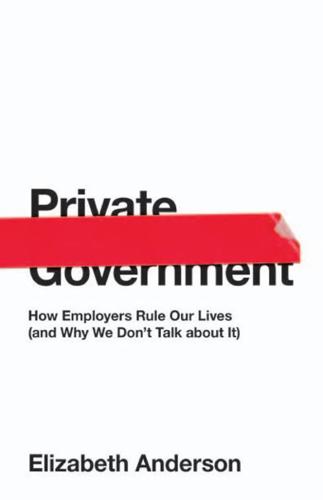
Private Government: How Employers Rule Our Lives (And Why We Don't Talk About It)
by
Elizabeth S. Anderson
Published 22 May 2017
Notwithstanding the amendment, husbands retained property in their wives’ labor.92 This was a contradiction inherent in the free labor ideal, as the independence of men depended on their command over their wives’ labor.93 Hidden in the ostensible universalism and hyperindividualism of the ideal was a presumption of male governance over their wives’—and children’s—labor. The feminist movement, which arose from the abolitionist movement, was to highlight this contradiction, as women came to demand independent and equal standing in the workplace and at home. Second, the Civil War, which ended slavery in the name of independent labor, ironically propelled the very forces that put the universalization of that ideal further out of reach, even for the class of white men.
…
So the Levellers supported the “free miners” of Derbyshire who claimed the right, by ancient custom, to mine for lead wherever it was found against the increasing protests of landowners who claimed sole and absolute ownership of the surface land and all that was found beneath it; and they offered help to the small proprietors in the fens whose complex livelihoods of fishing, crafts, and farming were being destroyed by drainage projects.21 All this may complicate but perhaps enrich the ways in which we look to the Levellers for experiments in egalitarianism and activism. Third, and much more schematically than I would like, I want to raise some qualifications to the picture of the Levellers as a feminist movement. As Professor Anderson has shown, women were active Levellers; among individuals we can highlight Elizabeth Lilburne, Mary Overton, and Ellen Larner, and the radical religious separatist and author Katherine Chidley. The attack on a monarch whose rule was legitimated partly through patriarchalism had implications for gender hierarchies within the household, although most parliamentarians and republicans were very careful to limit these implications, most often through various versions of a separation between public or civil authority from the private world of the household.
…
See also English Civil War; Parliament English Civil War, 7, 76; central religious conflict of, 12 equality, 99, 105–6; democratic equality, 94; distinction between market equality and political power, 94; social relations of, 100 European Union (EU), 159n23 exile, as a sanctioning power, 38, 39, 55, 107; minimizing the costs of, 171–72n9 Facebook, offensive postings on by workers, xvi, 112 Fell, Margaret, 12 feminism/the feminist movement, 12–13, 32, 125; and the Levellers, 86–88; and the undermining of monarchy, 13 feudalism: as based on “hospitality,” 18–19; transition from feudalism to a market society, 17–18 Fifth Monarchists, 10; as advocates of women’s suffrage, 13 Ford Motor Company, 49 Fox, George, 12 free market progressivism, vii free market society, 35–36; change in the egalitarian assessment of, 3–5; early modern market relationships, 85; as a “free society of equals,” viii, 1–2; and the “left,” 1, 89, 146n1; as a portal into relations of domination and subordination, 2–3 free markets: and egalitarianism, ix–x, 3–5; and private-sector workers, vii–viii; support of the Levellers for, 84–85; triumph of since the end of the Cold War, 62 free trade: and the advancement of equality, 15; as a natural right, 84 freedom.

The Problem With Work: Feminism, Marxism, Antiwork Politics, and Postwork Imaginaries
by
Kathi Weeks
Published 8 Sep 2011
The demand for wages for housework thus possessed a dual character: it was a reformist project with revolutionary aspirations. It is important to remember that in her foundational essay, Dalla Costa only endorses the demand for wages in a footnote added after the essay was first drafted in June 1971, after the demand had gained a certain currency within feminist movements in Italy and elsewhere. It was only once the demand began to be advanced with increasing “strength and confidence” that it could be imagined as a viable locus of feminist and anticapitalist organizing (Dalla Costa and James 1973, 52, n. 16). Unfortunately, what Dalla Costa, James, and others support in these texts as a tactic was sometimes conceived, as Malos observes, as a total strategy (1995a, 20); and the movement for wages for housework continued long after it ceased to garner support from and inspire the imagination of feminists beyond those who had already enlisted.
…
Considering the demand for shorter hours also in these terms, I want to take into account the ways in which it could provide a vocabulary and conceptual framework for new ways of thinking about the nature, value, and meaning of work relative to other practices. With this in mind, in the pages that follow I will build an argument about what a contemporary feminist movement for shorter hours in the United States could accomplish, and how it might most fruitfully be conceived. The discussion will be organized around three different cases for shorter hours that have recently been advanced: one that demands shorter hours as a means of securing more time for family, and two others that de-emphasize—albeit in different ways—the family as the primary rationale for reducing work.
…
The point is that any account of working time must include an account of socially necessary unwaged labor, and any movement for reduced working time must include a challenge to its present organization and distribution.4 Where earlier movements for shorter hours took for granted the gender division of privatized reproductive labor at the heart of the modern family ideal, it seems to me that a feminist movement for shorter hours today must confront and actively contest both the dearth of social support for and the gender division of that labor. This inattention to the whole of the working day also hampers the effort to contest not just work schedules but work ethics. As was the case with the family-centered approach, this effort to challenge the moralization of waged work will be at best constrained and at worst undercut if it does not extend the critique of productivist values to nonwaged household work, because the moralization of this work—defining it as that to which we should devote our lives—remains uncontested.

The Idea of Israel: A History of Power and Knowledge
by
Ilan Pappe
Published 30 Apr 2012
In the case of post-Zionism, however, it opened up constructive and crucial vistas of research and commitment for local scholars. As a result, during the late 1970s, under the strong influence of gender studies, feminist activism, and politics, a feminist movement emerged in Israel as well. The feminist movement grew in parallel to the American feminist movement and was greatly influenced by it. One of the main propellants was an American Jewish activist, Marcia Freedman. She was born in the United States in 1938, emigrated to Israel in 1967, and immediately became involved in left Zionist politics.
…
In 1991, Al-Fanar, the Palestinian feminist organisation in Israel, was established; shortly afterwards, Achoti (Sister) for Women in Israel left the overall feminist movement to represent more faithfully the particular agenda of Mizrachi women. This was a local conversation that reflected a more general one, in the Middle East as a whole, between Islamic or Muslim feminism and Western feminism. In addition, the unwillingness of Israel, the state and the society alike, to be integrated into the region – its insistence of being an integral part of the West – affected issues of gender as well. Thus, a feminism that could have been regional, could have built bridges with feminist movements in the Arab world, failed to connect with a feminism that strove to grant equal rights to young women in the army, so that they could serve as fighter pilots or commando troops, and as a result, become unacceptable to the Arab world.
…
Israeli fighter pilots and commando troops are prepared for one mission: to brutally police the occupied West Bank and the Gaza Strip, or to punish southern Lebanon. Despite these rifts, feminist activism and cooperation flourished through organisations such as Isha L’Isha (Woman to Woman), Achoti, and Al-Fanar. This does not mean that the feminist movement in Israel, whether we speak of its academic wing or its political/activist wing, did not have an impressive list of achievements. It is mainly in the sphere of legislation and changes in attitudes that these achievements are visible. However, as with so many other aspects of life in Israel, the formal and official façade covers up a far more depressing reality: a high rate of women being murdered (both in Arab and Jewish societies), occupational inequality, the growing influence of ultra-religious forces.
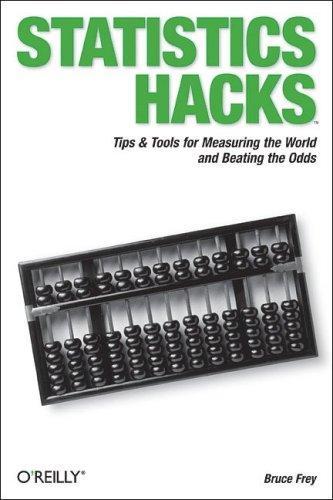
Statistics hacks
by
Bruce Frey
Published 9 May 2006
Subjects were asked to rank these statements based on high likely they were to be true: Linda is a teacher in elementary school. Linda works in a bookstore and takes Yoga classes. Linda is active in the feminist movement. Linda is a psychiatric social worker. Linda is a member of the League of Women Voters. Linda is a bank teller. Linda is an insurance salesperson. Linda is a bank teller and is active in the feminist movement. Kahneman and Tversky (and many others who have since replicated their work) found that people consistently ranked option 8 (a bank teller active in the feminist movement) as being more likely than option 6 (a bank teller). This is because option 8 provides more information, which seems to be more representative of Linda.
…
Because we expect her to be politically active, but we don't expect her to be a bank teller, it seems as though the only way she could be a bank teller is if she is also politically active. However, we know that 8 can never be more likely than options 3 or 6, because if we imagine all people active in the feminist movement, a subset of them (perhaps a small subset) will be bank tellers. Likewise, if we imagine all of the bank tellers in the world, a subset (again, perhaps a small one) will be active in the feminist movement. Thus, the likelihood of being a bank teller must be greater than the likelihood of being a bank teller who is active in the feminist movement. Makes sense, right? But your mind doesn't want to work that way. The rule that states that the probability of two events occurring together cannot be greater than the probability of either one of them occurring alone is called the conjunction rule.

Media Control: The Spectacular Achievements of Propaganda
by
Noam Chomsky
Published 1 Jan 1974
There was no protest against the Indochina war until years after the United States had started bombing South Vietnam. When it did grow it was a very narrow dissident movement, mostly students and young people. By the 1970s that had changed considerably. Major popular movements had developed: the environmental movement, the feminist movement, the anti-nuclear movement, and others. In the 1980s there was an even greater expansion to the solidarity movements, which is something very new and important in the history of at least American, and maybe even world dissidence. These were movements that not only protested but actually involved themselves, often intimately, in the lives of suffering people elsewhere.
…
The sickly inhibitions have increased all across the board. But meanwhile a gap has been growing, and by now it's a very substantial gap. According to polls, it's something like twenty-five percent. What has happened? What has happened is that there is some form of at least semiorganized popular movement that women are involved in-the feminist movement. Organization has its effects. It means that you discover that you're not alone. Others have the same thoughts that you do. You can reinforce your thoughts and learn more about what you think and believe. These are very informal movements, not like a member ship organizations, just a mood that involves interactions among people.

The Science of Fear: How the Culture of Fear Manipulates Your Brain
by
Daniel Gardner
Published 23 Jun 2009
As a student, she was deeply concerned with issues of discrimination and social justice, and also participated in anti-nuclear demonstrations. How likely is it that Linda • is a teacher in elementary school? • works in a bookstore and takes yoga classes? • is active in the feminist movement? • is a psychiatric social worker? • is a member of the League of Women Voters? • is a bank teller? • is an insurance salesperson? • is a bank teller and is active in the feminist movement? Now, please rank these descriptions from most to least likely. This is one of the most famous quizzes in psychology. When Kahneman and Tversky wrote the profile of “Linda” almost forty years ago, they intended to make it strongly match people’s image of an active feminist (an image that likely stood out a little more strongly at the time).
…
Yes, that fits. So it’s very likely true and it will certainly be at or near the top of the list. Active in the feminist movement? Absolutely. It will also rank highly. But an insurance salesperson? A bank teller? There’s nothing in the profile of Linda that specifically suggests either of these is correct, so people taking this quiz rank them at or near the bottom of the list. That’s simple enough, but what about the final description of Linda as a bank teller who is also active in the feminist movement? Almost everyone who takes this quiz feels that, yes, this seems at least somewhat likely— certainly more likely than Linda being an insurance salesperson or a bank teller.
…
Almost everyone who takes this quiz feels that, yes, this seems at least somewhat likely— certainly more likely than Linda being an insurance salesperson or a bank teller. When Kahneman and Tversky gave this quiz to undergraduate students, 89 percent decided it was more likely that Linda is a bank teller who is active in the feminist movement than that she is a bank teller alone. But if you stop and think about it, that makes no sense. How can it be more likely that Linda is a bank teller and a feminist than that she is solely a bank teller? If it turns out to be true that she is a bank teller and a feminist, then she is a bank teller—so the two descriptions have to be, at a minimum, equally likely.

1968: The Year That Rocked the World
by
Mark Kurlansky
Published 30 Dec 2003
In France, land of de Beauvoir, the feminist movement is also said to have been born in 1968. Yet de Beauvoir’s The Second Sex was first published in France in 1949 and by 1968 had influenced a large part of an entire generation of women whose daughters were now reading it. The year 1968 was when activists formed groups pressuring the government to legalize abortion and widen access to the pill, which was available only by prescription. Women were refused prescriptions by doctors for a variety of reasons, including the arbitrary verdict that they were too young. In Germany, too, the feminist movement can be traced to 1968, to a Frankfurt conference of the German SDS, when Helke Sander declared the equality of the sexes and demanded that future planning take into account the concerns of women.
…
In 1969, when a federal grand jury indicted eight activists in connection with the demonstrations in Chicago in 1968, Abbie Hoffman, one of the eight, said about the group, “We couldn’t agree on lunch.” And though rebellion was everywhere, rarely did these forces come together, or when they did, as with the civil rights, antiwar, and feminist movements in the United States, or the labor and student movements in France and Italy, it was an alliance of temporary convenience, quickly dissolved. Four historic factors merged to create 1968: the example of the civil rights movement, which at the time was so new and original; a generation that felt so different and so alienated that it rejected all forms of authority; a war that was hated so universally around the world that it provided a cause for all the rebels seeking one; and all of this occurring at the moment that television was coming of age but was still new enough not to have yet become controlled, distilled, and packaged the way it is today.
…
In a 1956 special issue of Life magazine on women, Cornelia Otis Skinner said of feminism, “We have won our case, but for heaven’s sake let’s stop trying to prove it over and over again.” This idea was so entrenched that in 1968, when the press and the public realized that there was a growing contemporary feminist movement, they often referred to it as “the second wave.” One of the first surprises of the second wave was when The Feminine Mystique, a book by Betty Friedan, a suburban mother of three and graduate fellow in psychology, became one of the most read books of the early 1960s. Friedan was a graduate of Smith College class of 1942, and at the beginning of the sixties the college had asked her to conduct a survey of her classmates.
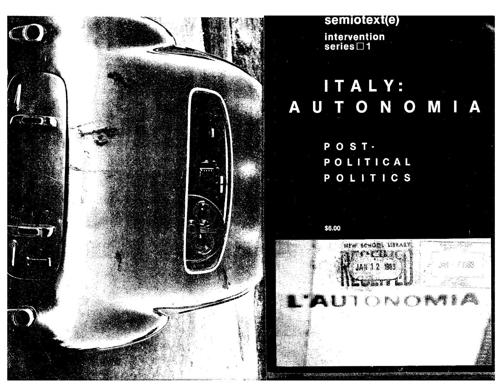
Autonomia: Post-Political Politics 2007
by
Sylvere Lotringer, Christian Marazzi
Published 2 Aug 2005
This immediately posed a question 01 hegemony over the whole social fabric, hence was analogo~~ in its dimensions and its claims to the hegemony of the mass worker. ~he speCIfic, autonomous interests of women, organised by wo~en, not only directly challenge family relations of produc\iol; they also, by laking an autonomous political form as an independent feminist movement, involved a radical separation from the mediations of the "party system", and from Trade Union representation, but also above all from the revolutionary Left groups themselves. With women's self-rediscovery and claim to control Illeir bodies, their own .needs and. ?esireS, tlleir subjectivity, we see the beginnings of a new critJque of alIenated mIlitancy - one of the key themes of the movement In the second phase - but also, and more fundamentally, the starting paint for the general thematic of needs within Ille movement.
…
Paolo Virna, a member of Metropoli, was arrested In June, 1979. The pratices and the languages adopted by the Movement seem to suggest an alternate type of socialization, different than that based on the exchange of equivalent values. The "technical-scientific intellect", "off·the·books" labor, the feminist movement, young proletarians, etc. may be seen as parts-not reducible to any whole-of a composite praxis In which production and emancipation are intertwined. This praxis cannot be understood through an identity principle founded on categories of commodity, As far as social change Is concerned, what counts more and more is not the commonly accepted definition of labor force, but rather all the aspects of the activity of these Individuals who find themselves !
…
am realized, fulfilled, if I correspond to what [ think I should be_ [ am not any more at the planning stage. Not an abstract identity, but eXistence, not a focusing but a diffusion. Everything within everything else, everywhere, always at the same Ume. Comblement is not planned any more, it is not a goa! to reach, it is an excess, an extra." (Alessandra) TO GEORGIANA In Ro~e the Feminist Movement has always been given a pOlitical label, appropnately so for a Movement that negotiates for women. Rome has been the place of the great demonstrations, of the occupation of the Women's House, of the organized struggle in the hospitals to guarantee the right to abort. The debates within the Movement have always taken Into account the problem of the "outside," the "outside" meaning the "institutions," "male politics," "the reiation. ship with the other oppressed."

Wordslut: A Feminist Guide to Taking Back the English Language
by
Amanda Montell
Published 27 May 2019
This is because for the first time in history we have both the concrete linguistic data and the emotional momentum to inspire tangible differences in how we talk about gender and how we perceive the speech of men, women, and everyone in between. Compared to the centuries-old studies of physics or geology, the study of language and gender is brand-spanking new: before the 1970s, there was simply no canon of empirical data on the subject. The dawn of this field of study coincided with the second-wave feminist movement, when there was a larger political need to understand the hidden sexism in English. Anyone who was anyone in the field of sociolinguistics at the time wanted to talk about how people use language every day to create and reflect their gender. But these ideas hadn’t been formally analyzed before, and linguists got a lot of things wrong.
…
In a language that assigns masculinity to the word doctor and femininity to the word nurse, its speakers might subconsciously start to think of those professions in a fundamentally gendered way. Grammar, Romaine argues, is a feminist concern, and there’s a reason why suffixes and noun agreement have been at the center of the French feminist movement in a way that they haven’t in the United States. That’s because, in languages with grammatical gender, the sexist implications are out in the open, jumping up and down across every part of speech. In English, however, they’re harder to catch. But in both types of languages, they can be overcome.
…
Women never do, unless they’re invalids, or Lesbians, or something.”) Women like Elgin and Spender also accurately deduced that language is an enormous part of social reform. It’s no coincidence that Native Tongue, the Wickedary, and Robin Lakoff’s Language and Woman’s Place were published during the second-wave feminist movement. During that highly political era, social empowerment inspired linguistic empowerment. But interest in gender and language reform ebbs and flows. Zimman says that in the early 2000s, when he was applying to grad school and wanted to talk about transgender identity and linguistics, nobody cared.

Future Sex
by
Emily Witt
Published 10 Oct 2016
If pornography was inherently masculine, “an act of sex discrimination,” were the sexual desires of “women” therefore impossible to visualize? Did they resist representation and articulation? Soon another wing of the feminist movement, grouped under the label of “pro-sex” or “sex positive” feminism, emerged to address some of these questions. “When I first heard there was a feminist movement against pornography, I twitched,” wrote Ellen Willis in her 1979 Village Voice essay “Feminism, Moralism, and Pornography”: For obvious political and cultural reasons, nearly all porn is sexist in that it is the product of a male imagination and aimed at a male market; women are less likely to be consciously interested in pornography, or to indulge that interest, or find porn that turns them on.
…
She concluded that Deep Throat was symptomatic of “a culture which sucks emotion out of sex and sensuality out of our bodies and turns the whole business into a hot-dog stuffed in a Wonder Bread bun.” And soon a new kind of moral objection to porn found articulation: the feminist one. The anti-porn feminist movement began with protests of depictions of violence against women. The movement was galvanized in 1975 by a slasher film called Snuff, which claimed (falsely) to show the real rape and dismemberment of a woman. A year later, more women protested when a Rolling Stones billboard on Sunset Boulevard in Los Angeles showed a bruised woman tied up in a chair next to the words “I’m ‘Black and Blue’ from the Rolling Stones—and I love it.”

The Pursuit of Power: Europe, 1815-1914
by
Richard J. Evans
Published 31 Aug 2016
Fashions such as these were only available to the well off, though with the spread of the department store it became easier for women of the lower middle class to acquire stylish dresses as well. The rise of the beard from mid-century onwards can perhaps be best understood as a reaction to the emergence in many European countries of a new feminist movement, which began to bring women into the public sphere as campaigners for the recognition of equal rights in many areas of life. In the early decades of the nineteenth century, the characterization of men as rational and women as emotional was expressed in the law’s placing of women in the same category as children, their rights exercised by their husband, or by their father if they were unmarried.
…
Brought before the magistrates, the husband claimed that he had not lived with her for some time, ‘and that she had lived in open adultery with the man Bradley, by whom she had been purchased’. The authorities stamped this practice out by the First World War; but it indicated a widespread lack of sentimentality about marital relations in rural society that shocked the urban middle classes. The focus of the feminist movement on property, educational improvement and marital rights did not really apply to the great mass of working-class women either, whose lives were taken up by hard work, childbearing and the struggle to survive. Nevertheless, what the feminists achieved paved the way for the extension of meaningful rights to all women.
…
The feminist Helene Stöcker (1869–1943), an admirer of Nietzsche’s doctrines of personal liberation from the constraints of convention, advocated legal equality for unmarried mothers and illegitimate children, the free distribution of contraceptives, the legalizing of abortion and other measures which shocked bourgeois moral convention. This was too much for the moderate wing of the feminist movement, which took advantage of the legalization of women’s participation in political activities in 1908 to pack the Federation with right-wing Protestant organizations and reject the proposal to legalize abortion. Stritt resigned in protest, to be replaced by a much more conservative figure, the historical novelist and journalist Gertrud Bäumer (1873–1954).

Infotopia: How Many Minds Produce Knowledge
by
Cass R. Sunstein
Published 23 Aug 2006
Six of these were fillers (psychiatric social worker, elementary school teacher); the two crucial ones were “bank teller” and “bank teller and active in the feminist movement.” In many experiments, many people said that Linda is less likely to be a bank teller than to be both a bank teller and active in the feminist movement. This is a palpable (though common!) error of logic;7 it simply cannot be the case that A (bank teller) is less likely than A and B together (bank teller and active in the feminist movement). The representativeness heuristic often works Four Big Problems / 77 well because it frequently points in the right direction; but it can also lead to severe blunders.
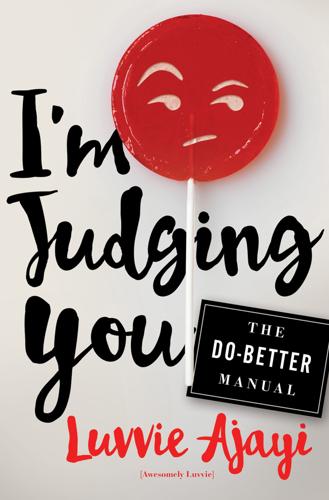
I'm Judging You: The Do-Better Manual
by
Luvvie Ajayi
Published 12 Sep 2016
Feminism has a bad rap (worse than Vanilla Ice’s) both fairly and unfairly earned, and in all its misunderstandings, it has become more divisive than it should be. It’s like the angst-ridden teenager of activism, and people just don’t get its struggles. Why is that? Because it is becoming synonymous with white women and that insidious white privilege we talked about before. The feminist movement is supposed to fight for the freedom of all women from oppression, ensuring that we’re all getting the same access to care, jobs, money, and positions of power as men. But let’s be real: feminism has mostly worked hard for those things for white women, and that is one of the main reasons why it gets its wig snatched so often.
…
Are they fighting along with us as we endure feeling ignored, unconsidered, and exhausted from shouldering the weight of not just patriarchy but a racist patriarchy? Or are white women adding to our burdens by ostracizing us, too? What is even more ridiculous is that women of color were pioneers in the feminist movement. An early movement symbol was of a fist in a female gender icon; the fist is clearly an homage to the Black Power fist. Feminism is standing on the shoulders of giants who were Black and brown women, so for it to have evolved into something that excludes us adds insult to injury. We are rendered invisible, like we didn’t pitch the tent on the feminism lawn and start the campfire our damb selves.
…
And those very white women who quickly come to the defense of those who look like them are often nowhere to be found when Black and brown women are being treated like wretches. This ego-driven fragility is why some people have reduced feminism to a puddle of white women’s tears, and yet they will scream, “Aren’t we all feminists?” The feminist movement has sucked at being truly intersectional. It has neglected to address the struggles of women who are not straight, white, Christian (or sometimes Jewish), and cisgender (identifying as the gender that corresponds to the body you were born with). A woman who is Black, trans, or Muslim won’t be represented fairly and completely in the fight for equality.

When to Rob a Bank: ...And 131 More Warped Suggestions and Well-Intended Rants
by
Steven D. Levitt
and
Stephen J. Dubner
Published 4 May 2015
The only notable exception to the pattern is black women, who are happier today than they were three decades ago. There are a number of alternative explanations for these findings. Below is my list, which differs somewhat from the list that Stevenson and Wolfers present: 1. Female happiness was artificially inflated in the 1970s because of the feminist movement and the optimism it engendered. Yes, things have gotten better for women over the last few decades, but maybe change has happened a lot more slowly than anticipated. Thus, relative to these lofty expectations, things have been a disappointment. 2. Women’s lives have become more like men’s over the last thirty-five years.
…
.: and bin Laden bounty, 57–59 and IRS, 12–14 tax code written by, 158–60 conspicuous consumption, 184–85 contests, 91 addictions, 92–94 motto for U.S., 96–99 rigged, 136 Twitter, 94–96 Cook, Phil, 246 Cope, Myron, 215, 216 corporate sponsorships, 81 cover-ups, 121, 157 Cowen, Tyler, 329, 331–33 Cowher, Bill, 218 Craig, Larry, 45 crime: and abortion, 288 bank robberies, 223–26 “broken windows” theory of, 163 burglary, 242 child abduction, 133 in China, 226–28 gun deaths, 245–51 and gun laws, 243–45 intruders, 241–43 priming criminals, 228–29 prison sentences, 128, 224, 242, 245, 248, 260 street gangs, 229–36, 246–47, 248–49 and The Wire, 229–33 volatile rates of, 244 Cuban, Mark, 329, 333 cyclists, Tour de France, 151–53 Cyrus, Miley, 306 Daily Show, The, 273–74 Dal Bó, Ernesto, 33–34 Daly, John, 277 dangerous activities: horseback riding, 101–3 obesity as result of, 116–19 walking drunk, 101 Daschle, Tom, 158, 160 Dawkins, Richard, 286 decision making, 120–21, 208–9 democracy, alternative to, 29–31 Dennett, Daniel, 286 dental wisdom, 275–76 diapers, cloth vs. disposable, 167 diminishing marginal returns, 203 disasters, and charitable giving, 324–28 discrimination, statistical, 321–22 divorce, statistics on, 345 Dohmen, Thomas, 212 Doleac, Jennifer, 320–21 Donohue, John, 288 doomsday prophets, 109–10 doping, in Tour de France, 151–53 driving: and the environment, 166–67 incivility in, 161–64 drugs, prescription, prices of, 51–54 Duke, Annie, 188 Duncan, Arne, 103–4 Duskiewicz, Bernie, 348–49 ecological invalidity, 335 economics: behavioral, 120, 122, 206, 308–9 invisible hand in, 315 morality vs., 288 visible hand in, 319–22 writing about, 287–88 Edlin, Aaron, 88 Ehrenreich, Barbara, 329, 333–34 Ehrlich, Paul, 109, 114 Eikenberry (funeral director), 46 Endangered Species Act, 165–66 Engelberger, Perfect, 40 environment: cloth vs. disposable diapers, 167 and conspicuous consumption, 184–85 and driving, 166–67 eating meat, 179–84 Endangered Species Act, 165–66 global warming, 87–89, 179–84 greenhouse gas (GHG) emissions, 171–72, 177, 180 locavores, 168–72 and packaging, 175–78 paper vs. plastic bags, 167 petroleum extraction, 109–16 Prius “green halo,” 185 and profitability, 172–74 saving the rain forest, 174–75 veganism, 179–84 Ericsson, Anders, 199, 201 escort (high-end call girl), 261–67 evaluation function (EV), 197 experts, ten thousand hours of practice, 199, 201–2 Fanning, Dakota, 305 fear of strangers, 130–33 Feinstein, Dianne, 53 Feldman, Paul, 69 feminist movement, 346–47 Ferraz, Claudio, 33 films, animated, 305–7 Finan, Frederico, 33 first-grade data hound, 219–20 fishing, 348–49 flight attendants, 19–20 food: chicken wings, 75–77 decayed, 177 deliciousness of, 170 kiwifruits, 77–80 locavores, 168–72 nutritional value of, 170 and obesity, 116–18 packaging of, 175–78 poor service, 272–73 rancid chicken, 307–11 shrimp, 341–44 transportation inefficiencies of, 170–72 wasting, 177–78 football: Immaculate Reception, 216 loss aversion, 206–9 Pittsburgh Steelers, 212–19 rookie symposium, 239–41 Fox, Kevin, 253 Frakes, Michael, 117 Frankfurt, Harry, 276 Freakonomics (Levitt & Dubner), 1–2, 37, 40, 54, 69, 101, 105, 135, 160, 223, 253–4, 261, 274, 277, 280, 297–98, 305, 322, 351 Freakonomics.com, 1–4, 8, 233 Freakonomics radio, 268–69 Frederick, Shane, 341–43 Freed, Pam, 342 Friedman, Milton, 23 Frost, Robert, 218 Fryar, Irving, 239–40 Fryer, Roland, 228, 288, 328–29, 337, 339 Fuller, Thomas, 194–95 Gacy, John Wayne Jr., 39 Gagné, Éric, 149 gambling: on athletes, 73 backgammon, 195–98 blackjack, 189–91 on horse racing, 191, 220–22 how not to cheat, 153–55 Internet poker, 127–30, 157 on newspaper circulation, 233 one card away from final table, 192–95 Rochambeau (Rock, Paper, Scissors), 188–89 on teams, 125–26 unbreakable record, 192 World Series of Poker, 187–88, 192–95 GAME (Gang Awareness Through Mentoring and Education), 248–49 gas, moratorium on, 311–14 gas prices, 86–90 Gates, Bill, 16 Geiger, Bernice, 224 Geithner, Tim, 158 gender identity, 228 Gladstone, Bernard, 258, 259 global warming, 88–89, 179–84 Gly-Oxide, 275–76 God, in book titles, 285–87 Goeree, Jacob, 31 Goldstein, Dan, 335 golf, 198–206 Goodall, Chris, 167 Good to Great (Collins), 283–84, 285 Goolsbee, Austan, 160 Gordon, Phil, 187–89, 192, 193 Goss, Pat, 200–201 government: and gambling income, 129 paying politicians, 32–36 voting mechanisms, 29–31 Greatest Good, 28, 300–301 Greene, Mean Joe, 216 greenhouse gas (GHG) emissions, 171–72, 177 Grossman, Michael, 116 Gruber, Jonathan, 117 Grzelak, Mandi, 268–69 guns: anonymous tips about, 247 athletes carrying concealed weapons, 240–41 concealed weapons laws, 242 D.C. ban on, 243–45 deaths from, 245–51 illegal use of, 245 ownership of, 245 shooting intruders with, 241–43 Hagen, Ryan, 314–19 happiness, 122–23, 344–47 Harold’s Chicken Shack, 75–77 Harris, Franco, 216 Hatcher, Teri, 305 hate mail, cost of, 49–51 health care: British National Health Service, 26–29 decisions in, 122 Hemenway, David, 249–50 Henderson, Kaya, 160 herd mentality, 143–46 Hitchens, Christopher, 286 hoaxes, 282–83 Holmes, Santonio, 214–16 home, building your own, 170 home field advantage, 209–12 homelessness, 330–31 horseback riding, 101–3 horse racing, 220–22 housing prices, 67–69 Hurricane Katrina, 42–43, 325–28 Hussein, Saddam, 58 identity, concept of, 162–63 Immaculate Reception, 216 impure altruism, 328 incentives, 17, 32–36, 65, 95–96, 110, 113, 122, 136, 166, 337–40 inefficiencies, transportation, 170–72 INS (Immigration and Naturalization Service), Form N-400, 237–38 In Search of Excellence (Peters and Waterman), 284 Internet poker, 127–30, 157 iPad, 124–25 Irfan, Atif, 130–32 irrational decisions, 120–21 IRS, 11–14, 159–60, 257 Jackson, Vincent, 215 Jacob, Brian, 160 Jagger, Mick, 74 Jarden Zinc, 63 J.F.K. airport, 21–22 Jines, Linda Levitt: brother’s eulogy for, 297–301 father’s interventions, 289–97 and Freakonomics, 277, 297–98 Jingjing Zhang, 31 Johnson, Larry, 207 Johnston, David Cay, 11–12 Kaczynski, Ted (Unabomber), 287 Kahneman, Daniel, 3, 119–24, 206 Katrina (popular name), 42–43 Kennedy, Bobby, 279 Kentucky Derby, 220–22 Keyes, Alan, 279 KFC, 272–73 Killefer, Nancy, 158 kiwifruits, 77–80 Kormendy, Amy, 169 Kranton, Rachel, 162 Kulkarni, Ganesh, 140–41 Laffer curve, 72 LaGuardia Airport, 21–23 LaHood, Ray, 21, 103–6 Lake George, boat accident on, 118–19 Lancaster, Barbara, 219 Landsburg, Steven, 259 Lane, Mary MacPherson, 173 Las Vegas: blackjack, 189–91 poker, 127–30, 153–58, 187–89, 192–95 risk aversion in, 126–27 Lee, Jennifer 8., 41 Lee Hsien Loong, 32 Leeson, Peter, 314–19 Levitt, Michael, “When a Daughter Dies,” 289–97 libraries, public, 14–16 lies of reputation, 137–40 Limberhand (masturbator), 45–46 List, John, 125, 165, 228, 327–28, 338 lobbyists, 62–63 locavores, 168–72 loss aversion, 206–9 Loveman, Gary, 127 ludicity (ludic fallacy), 335 Ludwig, Jens, 246–48 Maass, Peter, 109, 114 Madoff, Bernie, 133 Malthus, Rev.
…
R., 38–39 stock markets, capitalization of, 67 strangers, fear of, 130–33 street gangs, 229–36, 246–47, 248–49 street handouts, 328–37 Stubbs, Bob, 46 subjectivity, 170 Sullenberger, Chesley “Sully,” 82–83 SuperFreakonomics (Levitt & Dubner), 54, 101, 105, 119, 121, 261 supply and demand, 78–80, 110, 112, 115, 128, 341–44 Swift, Jonathan, 258–59 Taleb, Nassim Nicholas, 329, 334–37 tax code, 159–60 taxes: on athletes’ incomes, 72–74 cheating on, 158–60 on sex, 256–59 war on, 11–14 Taylor, Brian, 253 Taylor, Sean, 241 teachers, cheating by, 103–4, 160–61 Tejada, Miguel, 149 tenure, 16–19 Terrible Towel, 215 terrorism, 5–11, 108–9, 252 Thaler, Richard, 68, 308–9 Think Like a Freak (Levitt & Dubner), 26, 27 350.org, 178–84 ticketless travel, 141 Tierney, John, 114–16 Tinker, David, 40 tipping, and flight attendants, 19–20 Tomlin, Mike, 218 tooth decay, 275–76 Tour de France, 151–52 Travolta, John, 306 Tropicana, 174–75 TSA, 5–6, 11, 108–9, 251–53 Tversky, Amos, 206 TV viewing habits, 322–24 Twitter contest, 94–96 umbrellas, dangers of, 108–9 United States, six-word motto for, 96–99 Unlawful Internet Gambling Enforcement Act (UIGEA), 129–30 US Airways flight 1549, 82–83 Veblen, Thorstein, 184 veganism, 179–84 Velde, François, 62 Venkatesh, Sudhir, 229–36, 246–47 Vermeil, Dick, 207–8 Virgin Mobile, 63–64 voting mechanisms, 29–31 wages: and markets, 24, 25 of politicians, 32–36 and quality of applicants, 34 walking drunk, 101 Wayne (middle name), 38–40 Weber, Christopher L., 171, 172 Weller, Mark, 62–63 Werner, James, 40 Wertheim, Jon, 209–12 Weyl, Glen, 30–31 White, Byron “Whizzer,” 214 Williams, Tom, 148–49 Wilson, A.N., 282 Winfrey, Oprah, 51 Wire, The, 229–33 Witt, Robert, 225–26 Wolf, Cyril, 51–53 Wolfers, Justin, 344–47 women: feminist movement, 346–47 and happiness, 344–47 work: incentives in, 339–40 leisure vs., 168 World Preservation Foundation, 179–82, 192–95 World Series of Poker, 187–88, 192–95 Worthy, Paige, 44–45 Zelinsky, Aaron, 152–53 About the Authors STEVEN D. LEVITT, a professor of economics at the University of Chicago, was awarded the John Bates Clark medal, given to the most influential American economist under forty.
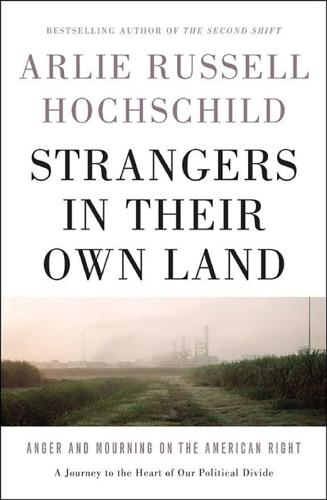
Strangers in Their Own Land: Anger and Mourning on the American Right
by
Arlie Russell Hochschild
Published 5 Sep 2016
This was followed by an executive order for government contractors instituting affirmative action for minorities in employment. In 1968, Johnson banned discrimination in housing. And so it went—the federal government aiding a social movement of a people to take their rightful place in line for the American Dream. The feminist movement followed the civil rights movement, picking up from earlier struggles for the right to vote, hold office, and own property in a one’s own name. A series of legal decisions strengthening the equal protection clause of the Fourteenth Amendment were now applied in places of work that received any money from the federal government.
…
See Environmental Protection Agency Equal Rights Amendment, 7 ethane cracker, 238–39, 284n86 ethylene dichloride (EDC), 45–46, 102, 271n31 chemical leak of, 96–97, 122, 129, 184–91 I-10 bridge and, 184–91 evangelical church, 123, 294n123 Evans-Pritchard, Edward Evan, 51–52 exploratory research, 247 Exxon, 282n76 fact-checking, 255–61 Falwell, Jerry, 123 federal employees, 161–62 federal policies, 109–10, 290n109, 291n109 feeling rules, 15–16, 178, 227–28 See also emotion feminist movement, 214 fertility, 188, 300n188, 312n257 Filipino workers, 74, 280n74 financial crisis, 231–32 fish consumption safety, 110–11 kill, in Bayou d’Inde, 31–34 marine mortality and, 277n65 -related jobs, 32, 211, 271n32 Seafood Advisory on, 31–34, 271n31 Fleming, John, 26, 37, 239 flooding, 200 Florida, Richard, 233 focus groups, 247–48 Ford, Henry, 7 foreign policy, 90 forgetting, 49–52, 108, 198–99 formaldehyde, 48 Fox News, 126–28, 295n128 Great Recession, 2008 and, 268n15 fracking, 241–42, 260, 285n90, 286n91 boom, 90–92 economic growth from, 90 foreign policy and, 90 history of, 89–90 industrial pollution relating to, 90–91 jobs in, 74, 90 in Lake Charles, 21 Frank, Thomas, 8, 14, 228, 268n14 Frankland, Peggy, 32–33 free collective bargaining, 7 freedom Honoré on, 62–71 regulation and, 67–69 Freedom of Information Act, 187 Freedom Riders, 209 Freedom Summer, 212–13 free-market, 9–10 class, deep story, and, 148–51 community and, 112 environment and, 201–2 global capitalism and, 236–37 insurance companies and, 201 Jindal on, 112 Trump and, 228 French Catholic Acadians (Cajuns), 41, 56, 269n16 French language, 42, 271n42 funding for education, 95 incentive money, 73–74, 92, 94, 259 under Jindal, 231 for Louisiana, 9, 265n9 in red states, 9–10 Galicia, Sharon, 229, 237 Gallup polls, 249 gender.
…
See also specific candidates political contributions by affluent, 267n13 from oil industry, 267n13 for purchased influence, 13–24 political cooperation, 233–34 political culture, 207 “Political Difficulties Facing Waste-to-Energy Conversion Plant Siting” (Powell), 80–81 political divide, 5–7 both sides of, 233–37 case study visits on, 16–20 geography relating to, 14–15 Great Paradox and, 8–16 keyhole issue in, 21–23 Republicans relating to, 7–8 political influence, 13–14 political movements civil rights, 209, 212–14 of 1860s, 208–10 feminist movement, 214 honor relating to, 214–18 of 1960s and 1970s, 211–17 Tea Party relating to, 207–8, 214–18 political views climate change relating to, 264n7 of Hardey, 92–93, 97 industrial pollution relating to, 79–80 of Sherman, 34–35 politically correct speech and ideas, 128, 158 Trump on, 227–28 poverty common impressions on, 256–57 oil and, 77, 282n77 Templet on, 77 working-poor rates, 311n256 Powell, Stephen J., 80–81 power, 52–53 PPG.

Work Won't Love You Back: How Devotion to Our Jobs Keeps Us Exploited, Exhausted, and Alone
by
Sarah Jaffe
Published 26 Jan 2021
Some of it could be done from the home, but most of it required them to go outside, to investigate the conditions they found so offensive, from those of enslaved people laboring on plantations to the working conditions in factories to slum housing to prisons. Women reformers spoke at meetings, gathered signatures on petitions, taught one another, and challenged the ideas of men—and such work, though inspired by their gendered roles, taught many of them to think about their own social position. The early feminist movement drew many of its leaders from the abolitionist ranks. Susan B. Anthony and others turned their attention to the limits placed on their own movement as they fought to break the chains of others. 12 In this movement, though, we can see some of the contradictions that remain in today’s nonprofits.
…
The desires of foundation heads to tamp down social unrest in the years after the wars—particularly in the 1960s, and particularly in the civil rights moment—sometimes clashed with the genuine wishes of lower-level nonprofit workers, who could find themselves squeezed between their political goals and the threat of lost funding. This pattern continues today. 23 PLANNED PARENTHOOD HAD ITS ROOTS IN THE FEMINIST MOVEMENT OF the early twentieth century. Margaret Sanger founded the United States’ first birth control clinic in Brownsville, Brooklyn, in 1916, and was arrested for it shortly after. Charged with obscenity, Sanger spent time in jail and her clinic was closed, but after her release she began to travel the country as a public speaker, advocating for family planning.
…
The movement was then a fighting, forward, no fooling movement, battling for the freedom of the poorest parents and for women’s biological freedom and development.” 24 As the organization had grown, Sanger felt it had left its original ideals behind to conciliate potential supporters. It was, after all, reliant on private funding to keep its clinics open. In the 1960s as the feminist movement and the Great Society moved forward, they brought public support for its health clinics, but the organization itself became a lightning rod—a fact that would affect the working conditions of women like Ashley Brink. Historian Jill Lepore wrote, “The fury over Planned Parenthood is two political passions—opposition to abortion and opposition to government programs for the poor—acting as one.” 25 The 1960s were a boom time for foundations.

A People's History of the United States
by
Howard Zinn
Published 2 Jan 1977
Literacy among women doubled between 1780 and 1840. Women became health reformers. They formed movements against double standards in sexual behavior and the victimization of prostitutes. They joined in religious organizations. Some of the most powerful of them joined the antislavery movement. So, by the time a clear feminist movement emerged in the 1840s, women had become practiced organizers, agitators, speakers. When Emma Willard addressed the New York legislature in 1819 on the subject of education for women, she was contradicting the statement made just the year before by Thomas Jefferson (in a letter) in which he suggested women should not read novels “as a mass of trash” with few exceptions.
…
When she refused to pay taxes because she was not represented in the government, officials took all her household goods in payment, even her baby’s cradle. After Amelia Bloomer, a postmistress in a small town in New York State, developed the bloomer, women activists adopted it in place of the old whale-boned bodice, the corsets and petticoats. Elizabeth Cady Stanton, who was one of the leaders of the feminist movement in this period, told of how she first saw a cousin of hers wearing bloomers: To see my cousin with a lamp in one hand and a baby in the other, walk upstairs, with ease and grace while, with flowing robes, I pulled myself up with difficulty, lamp and baby out of the question, readily convinced me that there was sore need of a reform in woman’s dress and I promptly donned a similar costume.
…
The editor of Socialist Woman, Josephine Conger-Kaneko, insisted on the importance of separate groups for women: In the separate organization the most unsophisticated little woman may soon learn to preside over a meeting, to make motions, and to defend her stand with a little “speech”. After a year or two of this sort of practice she is ready to work with the men. And there is a mighty difference between working with the men, and simply sitting in obedient reverence under the shadow of their aggressive power. Socialist women were active in the feminist movement of the early 1900s. According to Kate Richards O’Hare, the Socialist leader from Oklahoma, New York women socialists were superbly organized. During the 1915 campaign in New York for a referendum on women’s suffrage, in one day at the climax of the campaign, they distributed 60,000 English leaflets, 50,000 Yiddish leaflets, sold 2,500 one-cent books and 1,500 five-cent books, put up 40,000 stickers, and held 100 meetings.
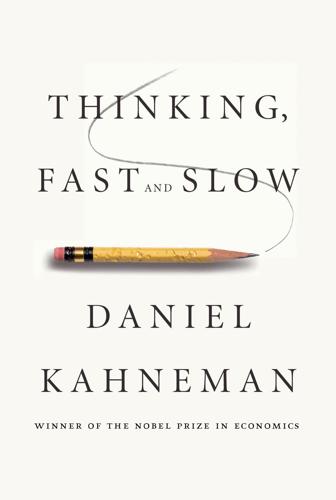
Thinking, Fast and Slow
by
Daniel Kahneman
Published 24 Oct 2011
Linda is a teacher in elementary school. Linda works in a bookstore and takes yoga classes. Linda is active in the feminist movement. Linda is a psychiatric social worker. Linda is a member of the League of Women Voters. Linda is a bank teller. Linda is an insurance salesperson. Linda is a bank teller and is active in the feminist movement. The problem shows its age in several ways. The League of Women Voters is no longer as prominent as it was, and the idea of a feminist “movement” sounds quaint, a testimonial to the change in the status of women over the last thirty years. Even in the Facebook era, however, it is still easy to guess the almost perfect consensus of judgments: Linda is a very good fit for an active feminist, a fairly good fit for someone who works in a bookstore and takes yoga classes—and a very poor fit for a bank teller or an insurance salesperson.
…
Even in the Facebook era, however, it is still easy to guess the almost perfect consensus of judgments: Linda is a very good fit for an active feminist, a fairly good fit for someone who works in a bookstore and takes yoga classes—and a very poor fit for a bank teller or an insurance salesperson. Now focus on the critical items in the list: Does Linda look more like a bank teller, or more like a bank teller who is active in the feminist movement? Everyone agrees that Linda fits the idea of a “feminist bank teller” better than she fits the stereotype of bank tellers. The stereotypical bank teller is not a feminist activist, and adding that detail to the description makes for a more coherent story. The twist comes in the judgments of likelihood, because there is a logical relation between the two scenarios.
…
We were surprised again: 85% of these respondents also ranked “feminist bank teller” as more likely than “bank teller.” In what we later described as “increasingly desperate” attempts to eliminate the error, we introduced large groups of people to Linda and asked them this simple question: Which alternative is more probable? Linda is a bank teller. Linda is a bank teller and is active in the feminist movement. This stark version of the problem made Linda famous in some circles, and it earned us years of controversy. About 85% to 90% of undergraduates at several major universities chose the second option, contrary to logic. Remarkably, the sinners seemed to have no shame. When I asked my large undergraduatnite class in some indignation, “Do you realize that you have violated an elementary logical rule?”

The Bomber Mafia: A Dream, a Temptation, and the Longest Night of the Second World War
by
Malcolm Gladwell
Published 26 Apr 2021
Instead, Pissarro and Degas enrolled in the École des Beaux-Arts at the same time; then, Pissarro met Monet and, later, Cézanne at the Académie Suisse; Manet met Degas at the Louvre; Monet befriended Renoir at Charles Gleyre’s studio; and Renoir, in turn, met Pissarro and Cézanne; and soon enough everyone was hanging out at the Café Guerbois, trading ideas and egging each other on, and sharing and competing and dreaming, all together, until something radical and entirely new emerged. This happens all the time. Gloria Steinem was the most famous face of the feminist movement in the early 1970s. But what was it that led to a doubling of the number of women elected to office in the United States? Gloria Steinem plus Shirley Chisholm, Bella Abzug, and Tanya Melich coming together to create the National Women’s Political Caucus. Revolutions are birthed in conversation, argument, validation, proximity, and the look in your listener’s eye that tells you you’re on to something.
…
“I solemnly swear…life itself”: Bombs Away, yearbook of the bombardier training school, class of 1944–46, Victorville Army Air Field, Victorville, CA, 16, available at http://www.militarymuseum.org/Victorville%20AAF%2044-6.pdf. Chapter Two: “We make progress unhindered by custom.” For information about the feminist movement in the 1970s, see Jill Lepore, These Truths: A History of the United States (New York: W. W. Norton, 2018), 652. “can of its own…the future” and “If success…other combat arms”: General John J. Pershing to General Charles T. Menoher, January 12, 1920, quoted in Report of the Director of Air Service to the Secretary of War (Washington, DC: Government Printing Office, 1920), 11.

Nudge: Improving Decisions About Health, Wealth, and Happiness
by
Richard H. Thaler
and
Cass R. Sunstein
Published 7 Apr 2008
The two crucial answers were “bank teller” and “bank teller and active in the feminist movement.” Most people said that Linda was less likely to be a bank teller than to be a bank teller and active in the feminist movement. This is an obvious logical mistake. It is, of course, not logically possible for any two events to be more likely than one of them alone. It just has to be the case that Linda is more likely to be a bank teller than a feminist bank teller, because all feminist bank tellers are bank tellers. The error stems from the use of the representativeness heuristic: Linda’s description seems to match “bank teller and active in the feminist movement” far better than “bank teller.”
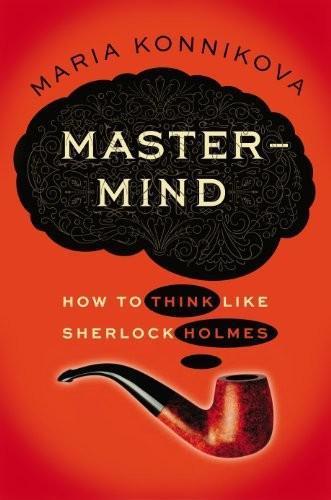
Mastermind: How to Think Like Sherlock Holmes
by
Maria Konnikova
Published 3 Jan 2013
Linda works in a bookstore and takes yoga classes. Linda is active in the feminist movement. Linda is a psychiatric social worker. Linda is a member of the League of Women Voters. Linda is a bank teller. Linda is an insurance salesperson. Linda is a bank teller and is active in the feminist movement. After you’ve made your ranking, take a look at two pairs of statements in particular: Bill plays jazz for a hobby and Bill is an accountant who plays jazz for a hobby, and Linda is a bank teller and Linda is a bank teller and is active in the feminist movement. Which of the two statements have you ranked as more likely in each pair?

On Anarchism
by
Noam Chomsky
Published 4 Nov 2013
They bring together poor people, working people, enable them to learn from one another, to have their own sources of information, and to act collectively. That’s how everything is changed—the civil rights movement, the feminist movement, the solidarity movements, the workers’ movements. The reason we don’t live in a dungeon is because people have joined together to change things. And there’s nothing different now from before. In fact, just in the last forty years, we’ve seen remarkable changes in this respect. Go back to ’62, there was no feminist movement, there was a very limited human rights movement. There was no environmental movement, meaning rights of our grandchildren. There were no Third World solidarity movements.

American Girls: Social Media and the Secret Lives of Teenagers
by
Nancy Jo Sales
Published 23 Feb 2016
Whether a woman who makes her living showing other women how to get “perfect brows” and plump their lips is actually engaging in an antifeminist enterprise does not seem to be a consideration, especially if it makes her rich and famous. Feminists who bemoan the pressures of media standards of beauty also defend the desire of women to try to improve and perfect themselves through the use of makeup, plastic surgery, or whatever means they choose. This is a change from the early days of the feminist movement, when feminists were more skeptical about beauty as an empowering goal. In 1968, hundreds of feminists traveled on buses to Atlantic City to protest the Miss America pageant, which they saw as ground zero for looks-based sexism. “This was a completely outrageous event and marked a watershed in American history, a watershed virtually ignored in retrospectives of the 1960s in general and 1968 in particular,” wrote Susan J.
…
In pop culture, Sassy magazine gave girls a feminist alternative to Seventeen. The entertainment industry responded with an avalanche of TV shows featuring strong female characters: Buffy the Vampire Slayer, Xena: Warrior Princess, My So-Called Life, Moesha, and more. But as Susan Faludi noted in Backlash, feminist movements and moments are typically met with resistance. The backlash to “girl power” was a media wave announcing “girls are mean.” Rachel Simmons’s best-selling Odd Girl Out: The Hidden Culture of Aggression in Girls, published in 2002, declared it was time to expose the “hidden culture of girls’ aggression in which bullying is epidemic, distinctive, and destructive.”
…
It’s caused by sexism—but then people try to turn it back on women and use it as a reason to not support feminism. In a world where there is such sexualization of women and oppression of women, it just feels like it’s too easy to blame girls for meanness. And it’s such a clever attempt to create a diversion. Why is it that everybody loves to talk about ‘mean girls’? It’s another attempt to stymie the feminist movement.” Jamestown, Virginia Sierra had tried to kill herself more than once with pills she found in the bathroom cabinets at home. She said, “I’m not even sure what they were.” Something “bad” would happen and she would feel that she just wanted to “stop it,” and so she would gather up all the pills she could find and, as she had seen people do in the movies, swallow a handful.

Autistic Community and the Neurodiversity Movement: Stories From the Frontline
by
Steven K. Kapp
Published 19 Nov 2019
The issue with this is common to all identity politics and best explained by alluding to another movement—the feminist movement. The argument made is that it is fine to be pejorative about, or insulting to, people that profit from the status quo. But this is the same as a feminist saying pejorative things about men e.g. “all men are <insert pejorative/offensive word here>”: a blanket dismissal of all men. Clearly, there are some men who are feminists and sympathetic to the aims of the feminist movement. Plus, many men have characteristics that mean they too are discriminated against: gay men, disabled men, migrants, and so on.
…
Giwa Onaiwu opted for this approach, “to accept the validity of people’s selfidentification as stated,” when compiling her intersectional anthology (see Chapter 18). Self-definition certainly avoids the problems listed above, but has caused huge divisions in other areas of identity politics. Arguments between radicals in the feminist movement and the transgender activists again provide an example. Some radical feminists have argued that being a woman should be defined by biological sex and being bought up female from birth, whereas the transgender activists have argued that anyone who self-identifies as female is female. The trans-excluding radical feminists assert that decades of rights they have fought for to have women-only safe spaces are now being undermined, if (wo)men who self-identify as women are now allowed into them.
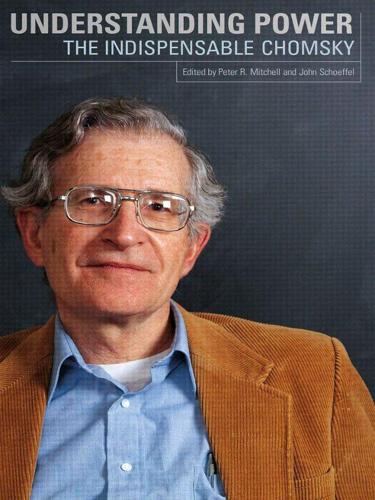
Understanding Power
by
Noam Chomsky
Published 26 Jul 2010
So, yeah, people aren’t out revolting in the streets, that’s for sure. But I think there’s plenty of potential, I mean, the environmental movement is big, and remember, it’s a movement of the Seventies, not the Sixties. The Third World solidarity movements are movements of the Eighties. The anti-nuclear movement is a movement of the Eighties. The feminist movement is Seventies and Eighties. And it’s way beyond movements—there are all kinds of people who are just cynical: they don’t have any faith in institutions, they don’t trust anybody, they hate the government, they assume they’re being manipulated and controlled and that something’s going on which they don’t know about.
…
We know how to do that stuff; it’s not very hard. I mean, there are no big secrets about any of this: there are very few lessons to transmit, so far as I know. Look, people have been involved in very successful organizing in the United States: the Civil Rights Movement, the anti-war movement, the ecological movement, the feminist movement, all of these things have been very successful developments. MAN: What about all the West European social-welfare policies, though? It’s true, they have a lot of social-welfare programs we don’t have—but that’s true of Canada too, you don’t even have to go all the way to Europe. For instance, they have a functioning public health insurance program in Canada, which we don’t have here in the United States.
…
And when you’re talking about other issues, like large-scale social change, well, it’s still like 1964 in that respect. But things can change—and sometimes they change very fast. Take the Civil Rights Movement in the United States: over a ten-year period, it was just a sea-change. Or take the feminist movement, which a lot of you are involved in: the changes came very fast. It went from being virtually nothing, a little nit-picking about activist groups having the women licking the stamps, and within a couple years it was a major movement, swept the country. When the time is right, things happen fast.

Empire
by
Michael Hardt
and
Antonio Negri
Published 9 Mar 2000
Just when the United States was most deeply embroiled in an imperialist venture abroad, when it had strayed farthest from its original constitutional project, that constituent spirit bloomed most strongly at home—not only in the antiwar movements themselves, but also in the civil rights and Black Power movements, the student movements, and eventually the second-wave feminist movements. The emergence ofthe various components ofthe New Left was an enormous and powerful affirmation of the principle of constituent power and the declaration ofthe reopening ofsocial spaces. Beyond the Cold War During the cold war, when the United States ambiguously adopted the mantle ofimperialism, it subordinated the old imperialist powers to its own regime.
…
It was the college student who experimented with LSD instead oflooking for a job; it was the young woman who refused to get married and make a family; it was the ‘‘shiftless’’ African-American worker who moved on ‘‘CP’’ (colored people’s) time, refusing work in every way possible.23 The youth who refused the deadening repetition of the factory-society invented new forms ofmobility and flexibility, new styles ofliving. Student movements forced a high social value to be accorded to knowledge and intellectual labor. Feminist movements that made clear the political content of‘‘personal’’ relationships and refused patriarchal discipline raised the social value ofwhat has traditionally been considered women’s work, which involves a high content of affective or caring labor and centers on services necessary for social reproduction.24 The entire panoply ofmovements and the entire R E S I S T A N C E , C R I S I S , T R A N S F O R M A T I O N 275 emerging counterculture highlighted the social value ofcooperation and communication.
…
Stanley Aronowitz offers a useful reassessment of the panoply of U.S. social movements in the 1960s in The Death and Rebirth of American Radicalism (London: Routledge, 1996), pp. 57–90. 23. Again see Kelley, Race Rebels, especially pp. 17–100 on the hidden histories ofresistance. 24. On the history of the refusals posed by U.S. feminist movements in the 1960s and 1970s, see Alice Echols, Daring to Be Bad: Radical Feminism in America, 1967–1975 (Minneapolis: University ofMinnesota Press, 1989). 25. See, for example, Judith Butler, ‘‘Merely Cultural,’’ New Left Review, no. 227 ( January–February 1998), 33–44. The most influential text for the political interpretation of‘‘new social movements’’ along these lines is Ernesto Laclau and Chantal Mouffe, Hegemony and Socialist Strategy: To- wards a Radical Democratic Politics (London: Verso, 1985). 26.

Rationality: What It Is, Why It Seems Scarce, Why It Matters
by
Steven Pinker
Published 14 Oct 2021
As a student, she was deeply concerned with issues of discrimination and social justice, and also participated in anti-nuclear demonstrations. Please indicate the probability of each of these statements: Linda is a teacher in elementary school. Linda is active in the feminist movement. Linda is a psychiatric social worker. Linda is a bank teller. Linda is an insurance salesperson. Linda is a bank teller and is active in the feminist movement. Respondents judged that it was likelier that Linda was a feminist bank teller than that she was a bank teller: once again, the probability of A and B was judged to be higher than the probability of A alone.
…
According to the psychologists Ralph Hertwig and Gerd Gigerenzer, people may have rationally inferred that the relevant meaning of “probability” in this task is not one of the mathematical senses in which the conjunction rule applies, but the nonmathematical sense of “degree of warrant in light of the present evidence,” and they sensibly followed where the evidence pointed.55 In support of the charitable reading, many studies, beginning with ones by Tversky and Kahneman themselves, show that when people are encouraged to reason about probability in the sense of relative frequency, rather than being left to struggle with the enigmatic concept of the probability of a single case, they are likelier to obey the conjunction rule. Imagine a thousand women like Linda. How many of them do you think are bank tellers? How many of them do you think are bank tellers who are active in the feminist movement? Now the homunculus is quiet; a coherent person tries to get out. The rate of conjunction errors plummets.56 So is the conjunction fallacy, the quintessential demonstration of human probability blindness, an artifact of ambiguous wording and leading questions? Tversky and Kahneman insisted that it isn’t.
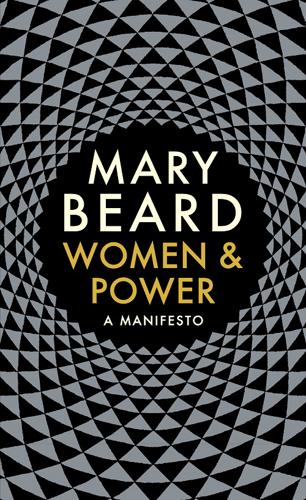
Women & Power: A Manifesto
by
Mary Beard
Published 2 Nov 2017
The Times ISBN 978 1 84668 029 8 eISBN 978 1 84765 126 6 SPQR: A History of Ancient Rome Mary Beard Mary Beard on Ancient Rome: Britain’s favourite classicist lifts the lid on the Roman Empire. ISBN 978 1 84668 381 7 eISBN 978 1 84765 441 0 Feminism Deborah Cameron Structural gender inequality is a fact of life, and, as long as that continues to be true, we will need to understand and engage with the ideas and history of the feminist movement. ISBN 978 1 78125 837 8

The Behavioral Investor
by
Daniel Crosby
Published 15 Feb 2018
Which is more probable? Linda is a bank teller. Linda is a bank teller and is active in the feminist movement. If you consider the question rationally and probabilistically, you understand that the number of feminist bank tellers is a subset of the larger population of bank tellers. But most people answered that (2) is more likely, falling victim to a host of noise among the true signal of probability. Our minds are populated with preconceptions about the type of people that are involved in the feminist movement and Linda checks many of those boxes. Just as more information about Linda made us less capable of judging what really mattered, so much of what passes as investment advice is marketing or clickbait with a thin educational veneer.

Culture Warlords: My Journey Into the Dark Web of White Supremacy
by
Talia Lavin
Published 14 Jul 2020
As he explained it, hypergamy meant: “The instinctual desire of humans of the female sex to discard a current mate when the opportunity arises to latch onto a subsequent mate of higher status due to the hindbrain impetus to find a male with the best ability to provide for her OWN offspring (already spawned or yet-to-be spawned) regardless of investments and commitments made to a current mate.” The pseudoscience, and the imputation that women are evolutionarily programmed to shallowness, smacked of online anti-feminist movements, the kind that lonely men all across the internet were joining en masse. Later, when I began infiltrating white-supremacist chats more extensively, I did so under both male and female identities. My male guise was greeted with the same rough, puerile humor, skepticism, and edgy camaraderie that typified the chats more broadly.
…
There are, of course, in the present and the past, white women who have done far more than this in the service of upholding white supremacy—those who have served as its constant guardians and most loyal enforcers. The century since The Birth of a Nation was released brought with it a few lurching, hard-fought strides toward progress for white women—from a measure of tenuous reproductive freedom to increasing integration into the workplace. The feminist movement, in all its overlapping and contentious waves, mainstreamed the notion that women ought to be equal partners—possessing the right, the need, and the ability to leave the archaic role of hearth-guardian behind. The women who live in the age of the internet live in a world that feminism has shaped irrevocably, imbuing us with notions of our own autonomy, worth, and relevance as independent actors.
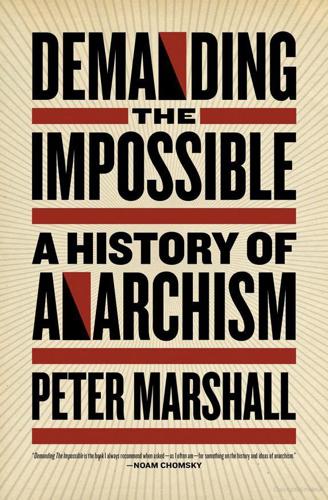
Demanding the Impossible: A History of Anarchism
by
Peter Marshall
Published 2 Jan 1992
N. 371, 382 Wilson, Charlotte 490 Wilson, Peter Lamborn see Bey, Hakim Winstanley, Gerrard 51, 96–104, 199, 487 Witcop, Milly 418 Wobblies see Industrial Workers of the World Wolff, Robert Paul 42, 502–3, 563–4 Wollstonecraft, Mary 134, 196–8, 200 Wombles 699 women, views on: anarcho-feminism 556–7; De Sade 148; Fourier 150, 151; Free Spirits 87; Gandhi 424; Goldman 506–9; Krnpotkin 328; Nietzsche 157; Paine 135; Paris Commune 288; Proudhon 49, 157, 256; Ranters 104–5; Reclus 341; Rousseau 128; Tolstoy 157, 366–7; Wollstonecraft 134; see also equality, feminist movement women’s movement see feminist movement Woodcock, George xi, xiii, 24, 42, 492, 589, 602, 671 Wordsworth, William 191, 195 work, views on 655–7; Bakunin 299; Kropotkin 328–9; Russell 655; Shaw 655; Tolstoy 215, 328, 655 workers’; associations 281–2, 628–9; co-operatives 300; control 288, 654–5 Workers’ Opposition 475 work-study movement in China 521 World Social Forums 698 World State 569, 572 World Trade Forum (2002) 698 World Trade Organisation summit (1999) 670, 698 Wrangel, Ferdinald Petrovich, Baron von 279 Wrangel, Pyotr Nikolayevich 475 Wu Chih-hui 520 Wycliffe, John 91 Ya Bastal 699, 702 Yasnaya Polyana 366 Yeats, William Butler x Ylppies 502, 544 Yu-Rim 528 Zabalaya Anarchist Communist Federation 701 Zaccaria, Cesare 452 Zalacosta, Francisco 509–10 Zapata, Emiliano 511–13, 702 Zapatistas 514, 701–2, 704 Zaragoza Congress (1922) 456 Zaragoza Congress (1936) 459, 467 Zen Buddhism 61–5 Zengakuren 526 Zenkoku Jiren 525–6 Zeno of Citium 70 Zerzan, John 675, 684, 685–8, 695 Zhao Ziyan 523 Zhelezniakov, Anatolli 472 Zhukovsky, Nicholas 469–70 Zola, Ernile 491 Zoroaster 86 Die Zukunft 481 Zürich: Congress (1893) 410; Dada movement 440–1 Zwingli, Huldreich 93 22 March Movement 548 WOBBLIES AND ZAPATISTAS Conversations on Anarchism, Marxism and Radical History Paperback | 5″ × 8″ | 300 pages | $20.00 | ISBN: 978-1-60486-041-2 “There’s no doubt that we’ve lost much of our history.
…
But when the New Left emerged in Italy in the 1960s it was strictly Marxist; the terrorist Red Brigades were especially authoritarian. An international anarchist congress held in Carrara in 1968 helped revive libertarian spirits despite the failure of the students’ insurrection earlier in the year. In the seventies, with the rise of the peace, Green and feminist movements, anarchism started to make a comeback, albeit mainly amongst students and the middle class. The Unione Sindacale Italiana was relaunched in 1983 and now has groups in every province. In the following year, the city of Venice welcomed three thousand people to an international congress which revived dormant contacts, and confirmed that the ideas of anarchism thrive once again.
…
Penny Kornegger contends that ‘feminists have been unconscious anarchists in both theory and practice for years’.40 From this perspective, it has been suggested that feminism practises what anarchism preaches. Indeed, it has even been argued that feminists are the only existing protest group that can honestly be called practising anarchists.41 The feminist movement which began in the late sixties developed its own organizational form and practice at the heart of which lay the small ‘consciousness-raising’ group. Spontaneous and non-competitive, without leaders and followers, they resemble the ‘affinity groups’ which played such an important part in the Spanish Civil War.
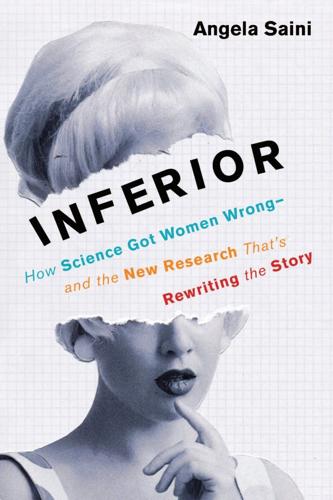
Inferior: How Science Got Women Wrong-And the New Research That's Rewriting the Story
by
Angela Saini
Published 29 May 2017
The males are usually physically larger, but by virtue of their tight bonds, bonobo females manage to take charge. Observing the bonobos in San Diego Zoo, she found that of the time females spent affiliating with other bonobos, two-thirds was with females. De Waal has even described female bonobos as a “gift to the feminist movement.” Their observations, though, still have a few critics. Chimpanzee expert Craig Stanford argues that animals in captivity don’t behave exactly the same as those in the wild, because they’re artificially forced into proximity with each other. “I’ve never seen a wild bonobo, and I work on chimps, but those of us who do fieldwork with great apes have tended to be a little skeptical of the view of those folks who say chimps are from Mars and bonobos are from Venus,” he tells me.
…
For Amy Parish, the great apes are not just a window on our possible past but also an example of the different ways we could live in the future. Her work shows that male domination isn’t inevitable when females work together to establish their interests—the way that bonobos do. “It’s certainly given me hope for the human feminist movement,” she tells me. “That here we can see females actually bonding with each other, maintaining those bonds, maintaining that loyalty. And then ultimately having the power in their groups. So I think they’re a great model for that. That yes, females can be in charge. They can control the resources.

A Book for Her
by
Bridget Christie
Published 1 Jul 2015
Audiences are more likely to trust a male comedian who is eating a stick of celery than they are a female comedian eating a stick of celery, because the audience will assume that the man has made a creative decision to eat the celery, whereas if a woman eats celery onstage, she’s gone mad. There’s a feminist movement in Sweden called Macho i kollektivtrafiken (which translates as ‘Macho in Public Transport’), which encourages women to take photographs of men sprawled out on buses and trains. There’s one particularly funny picture of a man lying across two seats, with one of his legs halfway up the window.
…
She’s better off staying at home and filling out the feminist leadership application form for her husband. Ironically, the only women who are able to put in the time and effort to fight for equal pay and affordable childcare are women with independent wealth and no children.fn2 But maybe a woman shouldn’t be in charge of the feminist movement. A very nice male comic said to me once, ‘If only more men got involved in feminism, it might do much better.’ And when high-profile men join in it can only be a good thing, and we should all be very grateful. In fact, one quite shit bloke feminist is much more valuable than, say, a million pretty good female ones.

The Digital Party: Political Organisation and Online Democracy
by
Paolo Gerbaudo
Published 19 Jul 2018
The crisis of accumulation of Fordist capitalism, signalled by the oil shocks and the stagflation crisis of the seventies, weakened both the organised working class and traditional sectors of the bourgeoisie, the mass parties’ traditional bases of support. This in turn was compounded by the rise of new protest movements, like student rebellions environmental and feminist movements, and urban activists that signalled the emergence of new demands and sensibilities recalcitrant to the forms of representation offered by the political party, amidst a rising sentiment of anti-authoritarianism and resistance to encadrement. As the mass party entered a slow but progressive decline, a new breed of political parties started to emerge, which presented themselves as ‘light’ and post-ideological alternatives to the modernist titan of the mass party while traditional mass parties also started to progressively acquire such post-modern characteristics.
…
.: 109 Dunbar number: 98 Duverger, Maurice: 31, 39–4, 75, 165 Distinction between direct and indirect party: 41 Theory of party structure: 40 Dyer-Whiteford, Nick: 49 Echenique, Pablo: 136 Economic crisis: 20, 27, 43, 51–3, 145–6 Eggers, David: 94 Emerson, Ralph Waldo: 24 Encadrement: 163, 165, 174 Engström, Christian (Pirate Party MEP): 55 Environmental movements: 25, 32, 146 Erdogan, Tayyip: 110 Errejón, Iñigo: 11, 138, 149, 160–1 Europe of Freedom and Direct Democracy (EFDD): 65, 135 Exley, Zack: 14, 157, 172 FAANGs (Facebook, Amazon, Apple, Netflix, Google): 49–50, Facebook: 2–4, 12–3, 43, 47, 49, 56, 66, 68–74, 84, 144, 156, 163, 169 Facebook live: 3 Newsfeed algorithm: 106 Falkvinge, Rick: 8, 56, 156, 159, 173, 181 Feminist movements: 25, 145 Fico, Roberto (president of the Italian lower chamber): 3, 95, 100, 135 Forza Italia (Italy): 33, 35, 52 Foti, Alex: 50 France Insoumise: 4, 12, 74, 81, 83, 86, 87, 91, 93, 96–9, 108, 121–2, 132–3, 139, 144, 158–9, 166–70, Avenir en Commun electoral programme: 122, 132 Groupes d’appui (support groups): 97–9 Friedman, Milton: 64 Friedman, Thomas L.: 23 Galapagar case: 138–9 Game of Thrones: 156 Ghibellines: 28 Gillespie, Tarleton: 69 Gramsci, Antonio: 7, 27, 37–8, 41, 43–4, 75, 77, 105, 143, 164 Theory of party structure: 38–9, 164 On the passivity of the mass: 147 On leadership: 151–2, Great Recession: 4, 27, 46, 168, Green Party: 10, 16, 26, 27 Basisdemokratie (grassroots democracy): 16 Grillo, Beppe: 2–3, 9, 43, 59–60, 74–5, 80, 83, 89, 95, 100–1, 135, 141, 153, 154–5, 158–60, 181 theatre shows: 154 Guelphs: 28 Guevara, Che: 25, 26, 148 House of Cards: 25 Hyperleader: 17, 144–62 And reactive democracy: 185 As benevolent dictator: 186 Characteristics: 153–5 Relationship with advisors: 159–60 Reputation: 154 Iglesias Turrion, Pablo: 11, 86, 94, 136, 138–9, 145, 149–50, 151, 153, 155–6, 158–60, 181 Italia a 5 Stelle (Five star movement annual gathering): 1–3 Izquierda Unida (IU): 136 Julius Caesar: 19, 28, 150, 152, 159, 161 Kant, Immanuel: 184 Karpf, David: 13, 169 Katz, Richard: 7, 30, 32, 59, 99 Kautsky, Karl: 110 Kennedy, John Fitzgerald: 33 Kirchheimer, Otto: 7, 32 Klug, Adam: 12, 171 La Tuerka: 150, 156 Labour Party: 12, 14, 29, 31, 35, 41, 52, 54, 107–8, 111, 148, 151, 156, 165, 168, 177 Lansman, Jon: 12, 103, Lavapies (neighbourhood in Madrid): 94 Leadership: 146–8 Charismatic leadership: 148–9 Leaderlessness: 77, 146, 181, 183, 187 Legal-rational: 147 Routinisation of charisma: 188 Liberalism: 28 Linux: 19, 82, 86, 159 Liquid Feedback: 4, 16, 61, 112–4, 121, 124 Loomio: 108, 112, 114–5 Machiavelli, Niccolò: 151, 186 Macron, Emmanuel: 13, 108, 140 Madison, James: 24 Mair, Peter: 7, 30, 32, 59, 99 Marx, Karl: 68, 93 May’s law: 124, 170 Mélenchon, Jean-Luc: 12, 52, 53, 86–8, 93, 107, 122, 132, 144–5, 156–9 Michels, Robert: 7, 16, 27, 30–1, 36–9, 41, 103, 110, 140, 142, 147, 152–3, 175, 179 Iron law of oligarchy: 36–7 Theory of party structure: 39 Microbureaucracy: 97 Mill, John Stuart: 24 Momentum: 26, 73, 80, 83, 87, 96, 102–3, 107, 166, 171–2 Monedero, Juan Carlos: 11 Montero, Irene: 138–9, 158 Morgan, Gareth: 67 MoVimento 5 Stelle (Five Star Movement): 1–5, 7, 9–19, 26, 43, 52–4, 57, 60–4, 66, 73–4, 77, 80–1, 83, 86–90, 93, 95–7, 99, 100–2, 105, 107–8, 112, 115–7, 119–20, 124, Meetup groups: 97, 99–102 Referendums for the expulsion of members: 135 Salary restitution programme: 57 Movimento Sociale Italiano (rightwing party in Italy): 2 NationBuilder (political campaigning app): 12, 107, 121, 124 Nazism: 24 Nielsen, Jakob: 91 Law of participation: 91 Nixon, Richard: 33 Nvotes: 108, 119 Obama, Barack: 11, 13 Olivetti, Adriano: 88–9, 154 Optimates: 28 Organisation: 67 Delegation: 17 Elimination of middlemen: 15, 183 Integration of technology: 13 Iron law of oligarchy: 36–7, 185 Lean management: 15 Organisational fragility: 187 Netroots organisations: 13 Ostrogorski, Moisei: 24, 27, 31, 104, Paine, Thomas: 111 Panebianco, Angelo: 7, 27, 32, 34–5 Parlamentarie (M5S online primaries): 10 Parliament et Citoyens (French parliament digital democracy project): 107 Parsons, Talcott: 45 Participa (Podemos participatory portal): 12, 73, 132 Participation And anti-party suspicion: 85–8 As an idea in contemporary culture: 84 And distrust towards bureaucracy: 150 And lack of party office: 96 Aristocratic tendencies: 164, 173 Difference between militant and sympathiser: 174 Habitueés of meetings: 103 Individualisation of participation: 102–3, 188 In parties’ discourse: 82–4 Lurking supporters: 174 Participationism: 81–9, 191 Participation aristocracy: 91 Participation divide: 91 Participatory representation: 123 Passive membership: 175 Superbase: 17, 152, 162–72 Partido de la Red (Party of the Net, Argentina): 8 Partido Popular (Popular Party): 11 Partido Socialista Obrero Español (PSOE): 11, 14, 108, 166, 190 Partido X (X Party, also known as the Party of the Future, Spain): 8 Partito Comunista Italiano (Italian Communist Party): 31, 35, 42, 92, 93, 95 Partito Democratico (Democratic Party, Italy): 10, 35, 52–3, 111 Partito Socialista Italiano (Italian Socialist Party, PSI): 153 Pericles: 185 Pirate Bay (file sharing server): 8, 56, 58, 166 Pirate Parties: 4, 7–9, 12–3, 16, 26, 48, 50, 52, 54–8, 61–2, 64, 66, 73, 77, 82, 86, 88, 93, 99, 105, 107, 112, 115, 159, 166, 172, 174, 177, 178, 180–1 Piratar (Iceland): 8 Pirate Party International (PPI): 8 Piratenpartei (Germany): 8, 114 Piratpartiet (Sweden): 8, 55, 166, 167 Česká pirátská strana (Czech Pirate Party): 8 Place Fear of, terror loci: 93, 95 Organisational principle of: 42 Platformisation: 14, 67, 69, 73, 76–7, 179, 183–4, 187, Podemos: 4, 7, 9, 11–4, 16, 19, 26, 52–5, 57, 61–3, 65–6, 69, 73, 81, 86–8, 93–8, 104–5, 107–8, 112, 115, 119–21, 123–5, 131–2, 136–43, 149–51, 153, 155–60, 166–70, 173–4, 177, 180–1, 193 Circles (Podemos’ local groups): 97–8, 115, 132 Citizens’ Council (Podemos’ central committee): 11, 96, 131, 136 Iniciativas Ciudadanas and Popular Podemos (Podemos Citizens’ and Popular initiatives): 121, 131 Plaza Podemos: 16, 86, 120, 131 Political Parties: Astroturf parties: 26 Definitions of: 27–9 Cadres: 18, 161, 179, 183 Catchall: 33 Integration: 182 Electoral/professional parties: 33 Party systems: 26 Political careers: 99 Mass parties: 30–2 Movement parties: 25 New Left: 27 Party sections, cells: 97–8 Passivity of the mass: 186 Patronage parties: 28 Return of: 25–8 Suspicion towards: 22–4 Television parties: 33–6 Populares (Party in ancient Rome): 28 Populism: 1, 4, 9, 10, 12, 15, 27, 39, 44 Poulantzas, Nicos: 27 Power struggles: 161, Precariat: 50 Proceduralism: 188, 189, Protest movements: 1968: 26 2011: 36 Environmentalist: 25, 146 Feminist: 25, 146 Raggi, Virginia: 10 Rajoy, Mariano: 138 Reduction of membership of traditional parties: 165 Rees, Emma: 12, 103 Renewable energy: 62–3 Republican Party: 28 Republique En Marche (REM, Macron’s movement): 108 Revelli, Marco: 31–2 Rittinghausen, Moritz Robespierre Rokkan, Stein: 45 Role as diffusors of messages: 176 Rousseau (5 Star Movement decision-making system): 2, 10–11, 116–7 Lex functions: 117, 131 Lex Iscritti: 117 Hacker attacks: 119 Villaggio Rousseau: 2 Rousseau, Jean-Jacques: 37 Salvini, Matteo: 1, 13 Sanchez, Pedro: 11 Sanders, Bernard (US senator and presidential primary candidate in 2016): 13 Scarrow, Susan: 28, 128–9 Schneider, James: 12 Schumpeter, Joseph: 38 Scudo della Rete (Shield of the Net): 57 Security Silicon Valley: 15 Signup process: 168–9 Skocpol, Theda: 42 Snowden, Edward: 50 Sozialdemokratische Partei Deutschlands (SPD): 14 Srnicek, Nick: 71 Stalinism: 24 Stallman, Richard (open source activist): 116, 124 Super-volunteer: 171–3 Teatro Smeraldo, Milan: 9 Telegram: 4 The Apprentice: 156 TOR (The onion router): 56 Tormey, Simon: 60 Torvalds, Linus: 159 Transparency: 57 Trump, Donald: 6, 35 Tufekci, Zeynep: 187 Twitter: 4, 124 UK Independence Party (UKIP): 65 Universal basic income: 63, 131 Universal basic services: 64 V for Vendetta (film): 3 Vaffanculo Day (literally ‘Fuck Off Day’, M5S protest in 2007): 9 Veltroni, Walter: 93 Von Hayek, Friedrich: 25 Von Treitsche, Heinrich: 24 Wales, Jimmy: 159 Washington, George Weber, Max: 7, 27–9., 31, 37–8, 40, 147, 151, 185 Weil, Simone (Christian anarchist); WhatsApp: 4 Whigs (Liberal party, UK): 22 Wikipartido (Wikiparty, Mexico): 8 Wikipedia: 19, 82, 86, 91, 159 World Social Forum: 25 Yang, Guobin: 44 Your Priorities: 108 Zeming, Jang: 148 Zuckerberg, Mark: 63, 66, 158
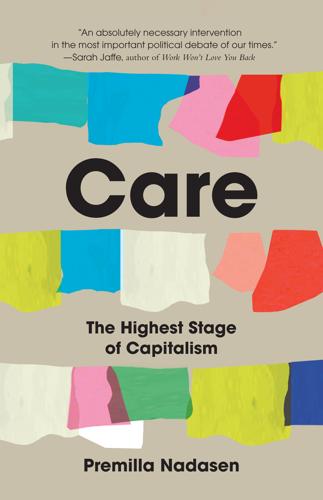
Care: The Highest Stage of Capitalism
by
Premilla Nadasen
Published 10 Oct 2023
The domestic workers’ rights movement reflects the dominant analytical framework from the 1960s until the 1980s that saw household labor as labor, rather than as primarily about caregiving or emotions. Activists and scholars in this period, including the wages for housework movement that I discuss in chapter 4, used terms such as housework, household labor, domestic work, and social reproduction. A vibrant feminist movement and robust body of scholarship insisted that household labor be treated the same as all other forms of work. Demands for emotional investment, they believed, were an indication of exploitation rather than cause for celebration. Sociologist Arlie Hochschild’s landmark book The Managed Heart, for example, referred to the expectation that workers care for the people they are serving as “emotional labor.”
…
See Maud Perrier, Childcare Struggles, Maternal Workers, and Social Reproduction (Bristol: Bristol University Press, 2022). 40. Annelise Orleck, We Are All Fast Food Workers Now: The Global Uprising Against Poverty Wages (Boston: Beacon Press, 2018). 41. Louise Toupin, Wages for Housework: A History of an International Feminist Movement, 1972–77 (London: Pluto Press, 2018). 42. Silvia Federici, Wages Against Housework; Mariarosa Dalla Costa and Selma James, The Power of Women and the Subversion of the Community (Bristol: Falling Wall Press, 1972). Power of Women was originally published as a pamphlet in 1972. 43. Costa and James, The Power of Women and the Subversion of the Community. 44.
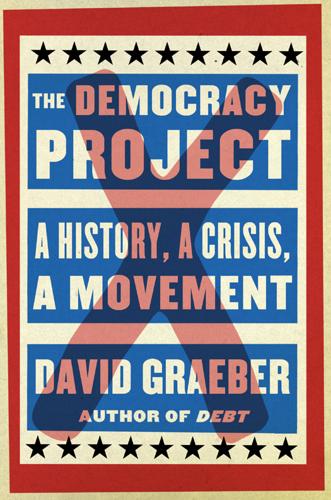
The Democracy Project: A History, a Crisis, a Movement
by
David Graeber
Published 13 Aug 2012
Quakers had also been active in most grassroots American social movements from Abolitionism onward, but until the 1970s they were not, for the most part, willing to teach others their techniques for the precise reason that they considered it a spiritual matter, a part of their religion. “You rely on consensus,” George Lakey, a famous Quaker pacifist activist once explained, “when you have a shared understanding of the theology. It is not to be imposed on people. Quakers, at least in the ’50s, were anti-proselytizing.”26 It was really only a crisis in the feminist movement—which started using informal consensus in small consciousness-raising groups of usually around a dozen people, but found themselves running into all sorts of problems with cliques and tacit leadership structures when those became larger in size—that eventually inspired some dissident Quakers (the most famous was Lakey himself) to pitch in and begin disseminating some of their techniques.
…
So here are some practical considerations and common misunderstandings about the basic principles of consensus, which, hopefully, will make it easier for interested readers to participate in a process of figuring such things out for themselves: A QUICK CONSENSUS FAQ Q: But doesn’t all this “consensus process” just come down to manipulation by a tacit or hidden leadership clique? A: If you operate by consensus without any rules at all, then, yes, inevitably a tacit leadership will emerge—at least, as soon as your group grows larger than eight or nine people. The writer and activist Jo Freeman pointed this out back in the 1970s during the early years of the feminist movement. What we now call “consensus process” was created largely to address this problem in the wake of Freeman’s critique. The role of the facilitator is a perfect example here. The easiest way to know you’re dealing with bad process is that the same person is (a) running the meeting, and (b) making all the proposals.
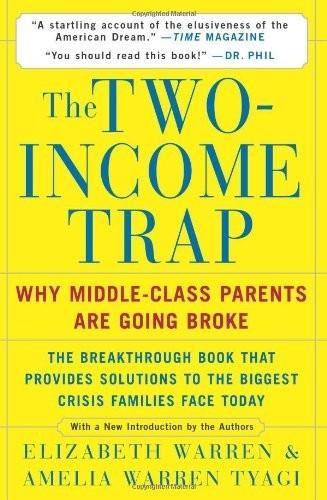
The Two-Income Trap: Why Middle-Class Parents Are Going Broke
by
Elizabeth Warren
and
Amelia Warren Tyagi
Published 17 Aug 2004
Must mothers give up their jobs and head back home if they are to escape the Two-Income Trap? We suspect that at least a few conservative commentators will draw exactly that conclusion from these pages. But as two working mothers, we confess to deep resistance to calling for such a move. We remain dedicated to the best part of the feminist movement—the rock-solid belief that women who want to work should have every opportunity to do so. But personal politics aren’t the point here. Such a mass exodus from workplace to home is about as likely as the revival of the horse-drawn buggy. Social and political forces have changed the shape of women’s expectations and their role within the family.
…
In the 1980s, sociologist Lenore Weitzman made headlines with her claim that in the immediate wake of divorce, a woman’s standard of living drops by 73 percent from her married state.1 Several scholars later showed that Weitzman overstated the extent of the decline, but there is widespread agreement about her basic conclusion: Most mothers tumble down the economic ladder after they divorce.2 Nor is the postdivorce financial tumble a phenomenon confined solely to poor women. In fact, the drop is hardest for women in the middle and upper classes, since they have farther to fall.3 A generation ago, flush with the emerging power of the feminist movement, women’s groups began to push what seemed like an obvious solution to the economic woes facing divorced mothers: Help women get more money. According to this logic, single mothers would be safe only if they earned more money in the workplace and if the laws were changed to squeeze more out of their ex-husbands.
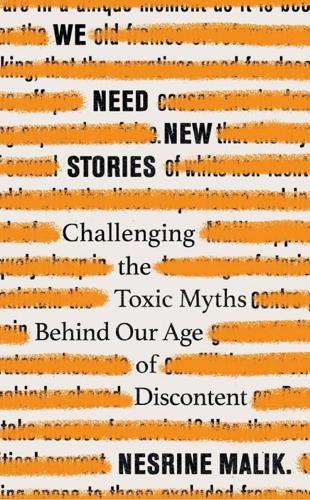
We Need New Stories: Challenging the Toxic Myths Behind Our Age of Discontent
by
Nesrine Malik
Published 4 Sep 2019
It was no surprise that the ensuing panel conversation, between fourteen angry men and three bewildered women, immediately careened into the territory of men expressing frustration that in this new world, natural dynamics where women are touched against their will are now being policed. A deluge of responses to the #MeToo movement fell along these lines – that of biology being pushed up against the wall by a feminist movement drunk with power. Pundits, columnists and academics listened to stories of women being touched, professionally intimidated for sexual favours and even assaulted, and responded with a collective outcry against what they perceived was a violation of the benign status quo. Men must woo women in order to procreate and where, in that melee, sometimes things just get a little messy.
…
The history of the term ‘identity politics’ and how it was first used illustrates how much it has been corrupted and deliberately misunderstood over the years as divisive and distracting from ‘universal’ causes. In the mid-1970s, a group of Afrocentric black feminist scholars and activists in the United States formed an organisation specifically to address the concerns of black women, concerns which they felt had been ignored by the wider feminist movement. They called themselves the Combahee River Collective, the name of the location from which the abolitionist Harriet Tubman launched a military campaign in 1863 to successfully liberate more than 750 slaves. In 1977, the group released ‘A Black Feminist Statement’ in which they declared that they were ‘actively committed to struggling against racial, sexual, heterosexual, and class oppression’ and that black feminism was ‘the logical political movement to combat the manifold and simultaneous oppressions that all women of color face’.
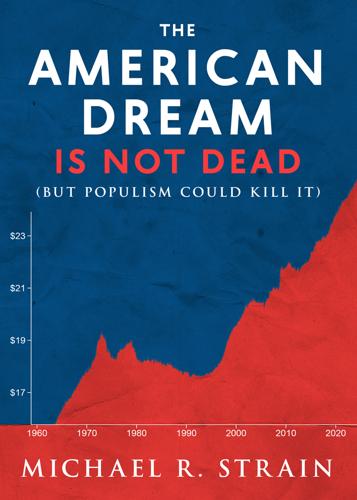
The American Dream Is Not Dead: (But Populism Could Kill It)
by
Michael R. Strain
Published 25 Feb 2020
The difference between the current economy and the economy in the roughly three decades after World War II—which is to say the difference between the American Dream economy and what we have now—can be summarized by this finding from Mishel and his colleagues about the impact of rising inequality: “In 2007, the last year before the Great Recession, the average income of the middle 60 percent of American households was $76,443. It would have been $94,310, roughly 23 percent (nearly $18,000) higher had inequality not widened.”54 Of course, the world has changed since the decades after World War II. The shared growth of that era unleashed a revolution of rising expectations that helped prompt the civil rights and feminist movements. No one pretends that we can restore the world exactly as it was in, say, 1964, and there are many reasons why we would not want to—among them, the ways in which the struggles for racial and gender equality have made us a better nation. But between the more social form of capitalism that the New Deal economic consensus helped create and the more radical form unleashed in the Reagan era, it is the more social form that made the American Dream possible.

Equality
by
Darrin M. McMahon
Published 14 Nov 2023
Yet feminists of color could claim, with reason, that their white counterparts too often invoked the category of “woman” as a convenient way of saying women who were white; that appeals to universal “sisterhood” were specious. Friedan’s critique of the stultifying constraints of middle-class domesticity, which she likened in an overblown comparison to “a comfortable concentration camp,” was certainly foreign to many Black ears. Others complained that the mainstream feminist movement as a whole was insufficiently sensitive to the specific plight of those who were doubly victimized by sex and race. As Frances Beal, a member of SNCC’s Black Women’s Liberation Committee, put it in a landmark essay in 1969, to be Black and female was “double jeopardy.” Gay women, too, objected (as did gay men) that their own complex identities were too often subsumed into broader categories claiming universality, or were fixed in ways that were distorting.
…
There is probably some truth to the general observation that European feminists, and particularly those from Italy and France, were more comfortable extolling difference, while their Anglo-American counterparts pressed more consistently for equality. But such broad distinctions tended to break down in the fray, where positions on both sides of the Atlantic dissolved any easy or straightforward dichotomy. Historians of feminist movements pointed out that equality and difference have always been bound up together, with activists placing emphasis sometimes on the one and sometimes on the other.65 Indeed, as the historian and feminist theorist Joan Scott insisted in an important intervention, it could not have been otherwise.
…
Griffith, Formidable, 171. 52. Friedan, Feminine Mystique, 426–427; Frances M. Beal, “Double Jeopardy: To Be Black and Female (1969),” in Meridians, Feminism, Race, Transnationalism 89, no. 2 (March 2008): 166–176. See also Winifred Breines, The Trouble Between Us: An Uneasy History of White and Black Women in the Feminist Movement (New York: Oxford University Press, 2006). 53. Casey Hayden and Mary King, “Sex and Caste: A Kind of Memo,” November 18, 1965, available at Civil Rights Movement Archive, www.crmvet.org/docs/sexcaste.pdf; Mary Eastwood and Pauli Miller, “Jane Crow and the Law: Discrimination and Title VII,” George Washington University Law Review 34, no. 2 (December 1965).
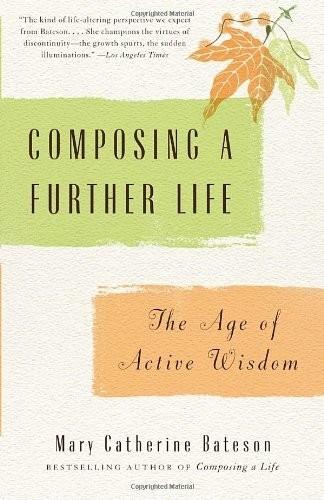
Composing a Further Life: The Age of Active Wisdom
by
Mary Catherine Bateson
Published 13 Sep 2010
Each of the liberation movements of the twentieth century has had to struggle against internalized prejudices and negative images of the self or of other members of the same group, which had to be overcome in order to embrace a different vision and believe that it could be achieved. In each such transition there have been risks—risks of excessive radicalization and acting out and risks of backlash. Yet beginning with the civil rights movement at mid-century and proceeding through the feminist movement, the disability rights movement, and the gay liberation movement, group after group that was excluded from full and equal participation has stepped forward, moving from a demand for equal rights into the fulfilled promise of new contributions. Forty years ago, looking at their lives with the newly developed possibility of planning their childbearing, young women discovered the need to break out of inherited assumptions about who they were, what they could do, and what they should want in their lives.
…
Jane Fonda was just over thirty and an established film star when she met her second husband, Tom Hayden, who was already deeply involved in protesting the war. She had been living in France with her first husband, Roger Vadim, and returned in the late sixties to an America in which the activism of the civil rights movement was being displaced by the anti–Vietnam war movement, with the feminist movement developing alongside. “What happened, which is part of my DNA now, was the realization of the collective power of people working together,” she told me. “I was a rugged individualist, I had no friends, women were rivals. I was not relational. It was my second act that coincided with the end of the sixties and into the seventies, when the women’s movement needed women activists, and suddenly—it was like getting into a warm bath—’only together will we make a difference,’ ‘we want to make a difference, but we can’t do it individually.’

Social Capital and Civil Society
by
Francis Fukuyama
Published 1 Mar 2000
With birth control and easier abortion, the economic consequences of sex decline dramatically for women, so they can afford to be much less selective in their choice of partners. With the movement of women into the paid labor force, abandonment of a wife and children does not have the same dramatic negative consequences as it once did. Many women prize the greater freedom that economic independence brings -hence the feminist movement -and their assertion of independence releases men from the norm of family responsibility. Males do not have to be persuaded to behave less than responsibly toward their families ; there are plenty of biological forces pushing them in this direction as it is. The growth of male irresponsibility then reinforces the female drive for independence: even if a girl wanted to grow up to be a dependent homemaker today, she would be ill-advised not to equip herself with job skills, given that her marriage partner is more likely than not to end up abandoning her and her children or else will have difficulties providing a family income.
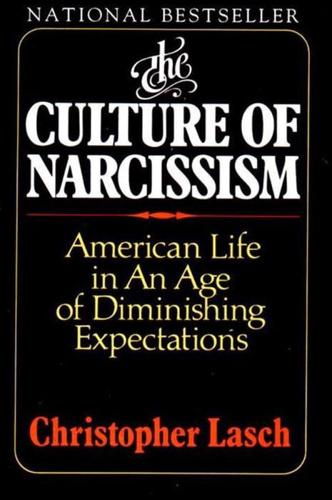
The Culture of Narcissism: American Life in an Age of Diminishing Expectations
by
Christopher Lasch
Published 1 Jan 1978
It therefore intensifies the problem to which it simultaneously offers the solution. On the one hand, feminism aspires to change the relations , themselves for their lack of power. They appeal to the illusory solidarity of sisterhood in order to avoid arguments about the proper goals of the feminist movement. By institutionalizing between men and women so that women will no longer be forced into the role of "victim and shrew," in the words of Simone de Beauvoir. On the other hand, it often makes women more shrew- ' women s activities as " alternatives to the male death-culture " , at the they avoid challenging that culture and protect women from the need to compete with men for jobs political power, and public attention.
…
After the painful renunciation of the mother, sensuality seeks , " " only those objects that evoke no reminder of her, while the mother herself, together with other pure (socially respectable) women, is idealized beyond reach of the sensual. " " The Soul of Man and Woman under Socialism Would men and women live more happily together under some other form of social organization? Would they live more happily under socialism? The answer to this question no longer strikes many people as self-evident as it struck earlier generations of socialists The , . feminist movement has unceremoniously exposed the shallowness of the old socialist analysis according to which a revolution in property relations would automatically revolutionize the relations between men and women All but the most rigid and , . dogmatic of socialists have now admitted the justice of this feminist criticism and incorporated it into their own work, notably in 206 : The Culture of Narcissism the recent studies by Juliet Mitchell, Eli Zaretsky, and Bruce Dancis.
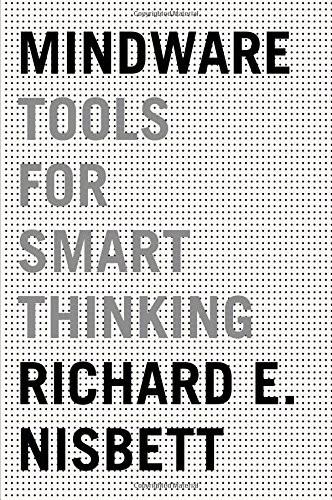
Mindware: Tools for Smart Thinking
by
Richard E. Nisbett
Published 17 Aug 2015
As a student, she was deeply concerned with issues of discrimination and social justice and also participated in antinuclear demonstrations.” After reading this little description, people were asked to rank eight possible futures for Linda.23 Two of these were “bank teller” and “bank teller and active in the feminist movement.” Most people said that Linda was more likely to be a bank teller active in the feminist movement than just a bank teller. “Feminist bank teller” is more similar to the description of Linda than “bank teller” is. But of course this is a logical error. The conjunction of two events can’t be more likely than just one event by itself. Bank tellers include feminists, Republicans, and vegetarians.
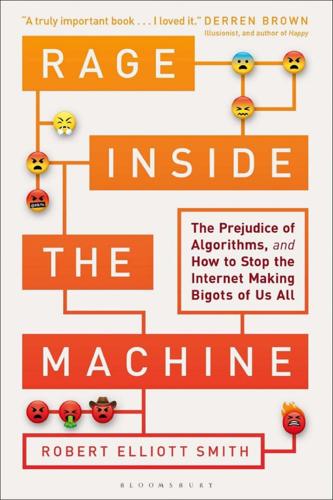
Rage Inside the Machine: The Prejudice of Algorithms, and How to Stop the Internet Making Bigots of Us All
by
Robert Elliott Smith
Published 26 Jun 2019
As a student, she was deeply concerned with issues of discrimination and social justice, and also participated in anti-nuclear demonstrations. Which is more probable? 1Linda is a bank teller. 2Linda is a bank teller and is active in the feminist movement. Most people who are asked this question choose answer 2. However, the ‘correct’ answer is 1: Linda is a bank teller. The reason being that, according to probability theory, a conjunction of two conditions (Linda is a bank teller and is active in the feminist movement) has to be less probable than either of the conditions on its own, regardless of all those facts given before the question. The conjunction puts greater restrictions on the question, so the probability has to go down.
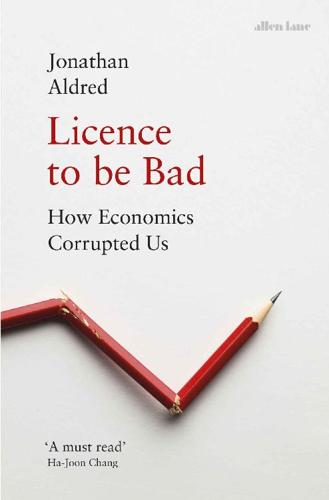
Licence to be Bad
by
Jonathan Aldred
Published 5 Jun 2019
As a student, she was deeply concerned with issues of discrimination and social justice, and also participated in anti-nuclear demonstrations. Which is more probable? 1. Linda is a bank teller. 2. Linda is a bank teller and active in the feminist movement.17 Most people choose option 2. But option 2 must be less probable than option 1, because option 1 is true both when Linda is active in the feminist movement and when she is not. Our tendency to impose narratives as a way of coping with lack of knowledge plays havoc with using basic laws of probability. Put another way, the combination of our reliance on narrative understandings and our desire to use probabilities to describe uncertainty is potentially disastrous.
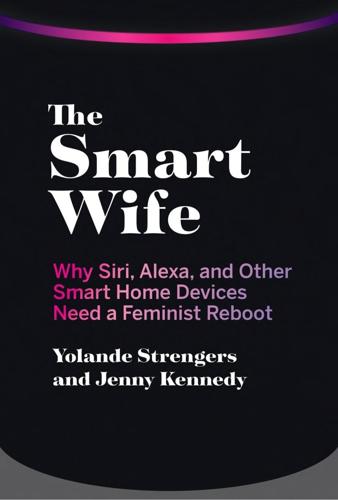
The Smart Wife: Why Siri, Alexa, and Other Smart Home Devices Need a Feminist Reboot
by
Yolande Strengers
and
Jenny Kennedy
Published 14 Apr 2020
This inequity is borne by these users—whether in sorting it out for themselves through better self-education or assistance, or more commonly, simply ignoring the risks. A more ethical approach, and one that we and other technology ethicists have advocated for, is to place these burdens back onto the companies designing and selling smart wives through codes of ethics, regulation, processes of “enthusiastic consent” (again, the feminist movement can provide much guidance here), and best practice security protocols. Putting all that to one side, there is one more angle to the sinister effects of the smart wife that we want to explore. There are distressing emerging indications that smart home devices are being used to perpetrate violence toward women.
…
Sabine LeBel, “Fast Machines, Slow Violence: ICTs, Planned Obsolescence, and E-waste,” Globalizations 13, no. 3 (2016): 300–309. 125. Maria Mies and Shiva sum up this hypocrisy in their book Ecofeminism: “To ‘catch-up’ with the men in their society, as many women still see as the main goal of the feminist movement, particularly those who promote a policy of equalization, implies a demand for a greater, or equal share of what, in the existing paradigm, men take from nature. This, indeed has to a large extent happened in Western society: modern chemistry, household technology, and pharmacy were proclaimed as women’s saviours, because they would ‘emancipate’ them from household drudgery.

Evidence-Based Technical Analysis: Applying the Scientific Method and Statistical Inference to Trading Signals
by
David Aronson
Published 1 Nov 2006
As a student, she was deeply concerned with issues of discrimination and social justice, and also participated in antinuclear demonstrations. Which possibility is most likely? (1) Linda is a bank teller, or (2) Linda is a bank teller AND is active in the feminist movement. Astoundingly, 85 percent of the subjects responded that it was more likely that Linda was a bank teller AND active in the feminist movement 92 METHODOLOGICAL, PSYCHOLOGICAL, PHILOSOPHICAL, STATISTICAL FOUNDATIONS than that Linda was simply a bank teller. This conclusion ignores the logical relationship between a set and a proper subset. Subjects became so fixated on the fact that Linda possessed a set of salient characteristics that matched an intuitive stereotype of a feminist, that they committed the conjunction fallacy.
…
Subjects became so fixated on the fact that Linda possessed a set of salient characteristics that matched an intuitive stereotype of a feminist, that they committed the conjunction fallacy. Clearly, the set of women who are both bank tellers and active in the feminist movement is a subset of a larger category which contains all female bank tellers including those who are feminists and those who are not. Other studies confirmed these findings and led Tversky and Kahneman to conclude that people’s probability judgments are biased by the addition of salient detail. Even though each additional detail describing an object reduces the probability that such an object exists,151 when people reason by representativeness, additional detail increases the number of characteristics that match a class stereotype, thus increasing an intuitive estimate of probability.
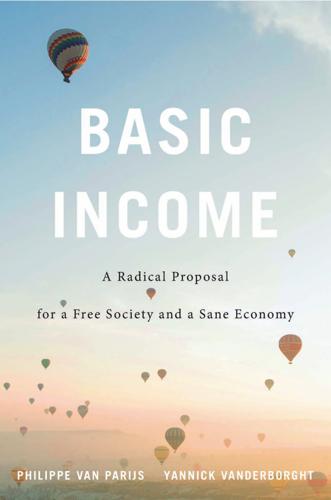
Basic Income: A Radical Proposal for a Free Society and a Sane Economy
by
Philippe van Parijs
and
Yannick Vanderborght
Published 20 Mar 2017
This would remove the humiliating investigation of personal relationships which is an integral part of the supplementary benefits scheme”—Â� that is, the means-Â� tested minimum-Â� income scheme then in place in the United Kingdom. “It would,” the pamphlet further says, “radically affect the position of women Â� in this society.”58 While Â�there are clear collective statements of this sort and no lack of defenses of basic income by feminist authors, it certainly cannot be said that Â�there is a broad consensus in the feminist movement in Â�favor of the introduc186 Pol itically A ch ievab le? Ci vi l S oc iet y, Parti es, and t he Back D oor tion of a basic income.59 The most fundamental reason for this is the reticence triggered in some feminist circles by the very fact that Â�women as a group would make greater use than men of the new options created by it.
…
The suspicion is that some Â�women Â�will use the new options offered by their basic incomes in a shortsighted way, as a result of underestimating the importance for their long-Â�term material security of remaining strongly integrated in the world of work. Should such questions prevent forever a more resolute support for basic income in the feminist movement? We do not think so, providing two conditions are fulfilled. One is that the overarching objective should not be what Nancy Fraser criticized Â�under the label of “universal breadwinner model.”62 The full-Â�time, lifelong employment that defined the traditional male role is not the sole model of a successful life, and the emancipation of Â�women does not consist of imposing this male model on all of them.
…
As Anne Miller puts it, this must involve reducing rather than reinforcing the existing bias in Â�favor of the “career-Â�oriented” against the “care-Â�oriented.”63 With this bias reduced by the provision of a basic income, it is quite posÂ�siÂ�ble, indeed at presÂ�ent most likely, that a higher 187 BASIC INCOME proportion of Â�women than of men will Â� make use of their widened set of options to reduce their working time. If the feminist concern is to expand Â�women’s freedom—Â�rather than to dictate how they use it—Â�there is no reason that this fact should prevent a feminist movement from embracing wholeheartedly Â� the idea of an unconditional basic income. Or at least Â�there is no such reason if a second condition is fulfilled. This second condition consists of finding a satisfactory way of addressing the following challenge. The unequal extent to which men and Â�women make use of the enhanced possibility of reducing their working time could indirectly reduce the real freedom of Â�women.

The New Prophets of Capital
by
Nicole Aschoff
Published 10 Mar 2015
Oprah’s biographical tale has been managed, mulled over, and mauled in the public gaze for thirty years and is a story familiar to millions of Americans. She used her precocious intelligence and wit to channel the pain of abuse and poverty into building an empire. She was on television by the age of nineteen and had her own show within a decade. The 1970s feminist movement opened the door to the domestic, private sphere, and the show walked in a decade later, breaking new ground as a public space to discuss personal troubles affecting Americans, particularly women. Oprah broached topics (divorce, depression, alcoholism, child abuse, adultery, incest) that had never before been discussed with such candor and empathy on television.

The Great Mental Models: General Thinking Concepts
by
Shane Parrish
Published 22 Nov 2019
It went like this: Linda is 31 years old, single, outspoken, and very bright. She majored in philosophy. As a student, she was deeply concerned with issues of discrimination and social justice, and also participated in anti-nuclear demonstrations. Which is more probable? Linda is a bank teller. Linda is a bank teller and is active in the feminist movement. The majority of respondents chose option 2. Why? The wording used to describe her suggests Linda is feminist. But Linda could only be a bank teller, or a feminist and a bank teller. So naturally the majority of students concluded she was both. They didn’t know anything about what she did, but because they were led to believe she had to be a feminist they couldn’t reject that option, even though the math of statistics makes it more likely that a single condition is true instead of multiple conditions.

Korea--Culture Smart!
by
Culture Smart!
Published 15 Jun 201
Many are engaged in teaching, and there are numerous female pediatricians. In South Korea, women are now admitted to the military academies for officer training, and the South Korean armed forces have appointed their first female general, although, perhaps true to form, she is a nurse by profession. There is a strong feminist movement in South Korea, with departments specializing in women’s studies at several universities. Some women have entered politics, and a few have become ministers. The Minister of Foreign Affairs in 2018 was female, as was the ROK ambassador to London. In North Korea, women have in theory enjoyed full equality since 1948, and certainly, as in South Korea, women are prominent in professions such as teaching and nursing.
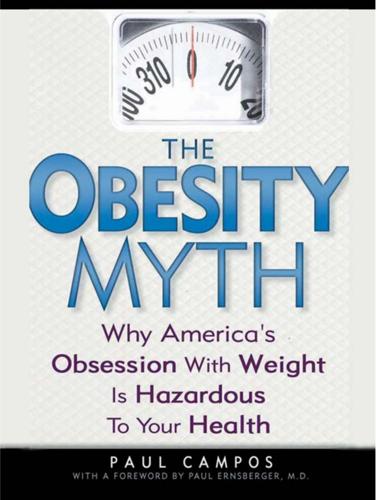
The Diet Myth: Why America's Obsessions With Weight Is Hazardous to Your Health
by
Paul Campos
Published 4 May 2005
Where are all my old friends from [political campaigns], all the women who are still eating five meals a day as they drag themselves across the country? How come I’m never paired with good-looking men? 202 Fat Politics These are excellent questions. Coming as they do from someone who has been considered a notable figure in the feminist movement, one might expect they would lead to answers that would reject the various premises that fuel the public culture that has given birth to, among other things, pundettes. But one would be wrong. Making the Case for Yourself is a profoundly antifeminist book, under even the loosest definition of what might be considered feminism.
…
“Interestingly, some of the studies that indicate women consistently overestimate their actual body size also suggest men prefer women . . .” Jacobi and Cash, “In Pursuit of the Perfect Appearance: Discrepancies Among Self-Ideal Precepts of Multiple Physical Attributes,” J Appl Soc Psychol 24, 379–96 (1994). “Where, I wonder, are the mainstream feminist organizations . . .” See Chapter Seventeen for a discussion of the feminist movement’s mixed record movement on issues of body oppression. “Yet his campaign advisers emphasized to him that he needed to lose 30 pounds . . .” A recent New Yorker profile of Gore illustrates how we are becoming increasingly sensitive to superficial issues of appearance when evaluating political figures: “[The crowd] took turns speculating about what clues they’d soon be called upon to interpret.
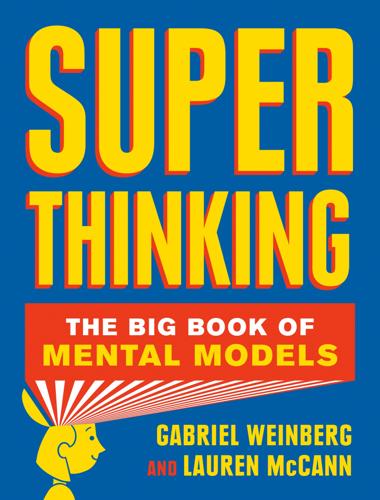
Super Thinking: The Big Book of Mental Models
by
Gabriel Weinberg
and
Lauren McCann
Published 17 Jun 2019
As a student, she was deeply concerned with issues of discrimination and social justice, and also participated in anti-nuclear demonstrations. Which is more probable? 1. Linda is a bank teller. 2. Linda is a bank teller and is active in the feminist movement. In their study, most people answered that number 2 is more probable, but that’s impossible unless all bank tellers are also active in the feminist movement. The fallacy arises because the probability of two events in conjunction is always less than or equal to the probability of either one of the events occurring alone, a concept illustrated in the Venn diagram on the next page.

This Is Not a Drill: An Extinction Rebellion Handbook
by
Extinction Rebellion
Published 12 Jun 2019
Without even meaning to repress or split off our feelings, we do so. I am doing so now as I write. Staying with such feelings can be bruising and can make us feel helpless and despairing. It is hard, very hard, to stay with, and yet there is value in this if we can create contexts for doing so. The feminist movement taught us that speaking with one another allows truths to enter in and be held together. In creating spaces to talk, we transformed our isolation and, although we have not focused our energy on issues of extinction, we need to do so now. We need to take that practice, to create spaces in which we can share how difficult this hurt is and how to deal with our despair and rage.
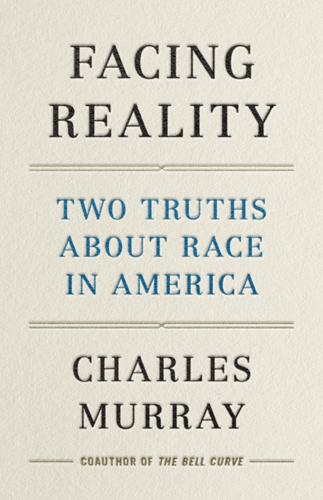
Facing Reality: Two Truths About Race in America
by
Charles Murray
Published 14 Jun 2021
That promise drew immigrants by the millions who believed that in America you could go as far as your own hard work and talent would take you. Our history is riddled with failures to achieve our ideal, starting with the Declaration’s failure to condemn slavery, but the American creed itself has always been powerful. Over the course of the nineteenth century, both the abolitionist and the feminist movements drew their moral authority and their ultimate successes from appeals to live up to the American creed. In the early 1940s, writing in his landmark book, An American Dilemma, the Swedish economist Gunnar Myrdal capitalized the term and marveled at the creed’s continuing universality. “Even a poor and uneducated white person in some isolated and backward rural region in the Deep South who is violently prejudiced against the Negro and intent upon depriving him of civic rights and human independence, has also a whole compartment in his valuation sphere housing the entire American Creed of liberty, equality, justice, and fair opportunity for everybody,” he wrote.

Confronting Capitalism: How the World Works and How to Change It
by
Vivek Chibber
Published 30 Aug 2022
This being the case, any movement that foregrounds these demands will have to find a way to change the state’s current priorities—which are set by the wealthy and by owners of capital, and capitalists are not going to stand idly by while the state enacts far-reaching policies for public housing, free health care, etc. A feminist movement to propose a nationwide program of state-provided child care, family leave, etc. will call for the same sorts of changes in policy as anti-racist movements demand. Without such demands, both of these movements become movements of rich minorities and women—those members of these groups who don’t need free health care, can hire their own child care workers, and can send their kids to private schools.

The Birth of the Pill: How Four Crusaders Reinvented Sex and Launched a Revolution
by
Jonathan Eig
Published 12 Oct 2014
The black women from the Deep South, the immigrant women, and the college women considering careers outside the home had something in common: they recognized that the pursuit of opportunity required independence, and achieving that independence meant avoiding—or at least postponing—motherhood. In the 1950s, women were voting in roughly equal numbers to men for the first time in American history. The radical feminist movement of Margaret Sanger’s youth was gone, but other forms of rebellion were taking root. In the South, women like Rosa Parks, Septima Clark, and Ella Baker helped spark the civil rights movement. In factory towns and in cities, women became union activists. When they married or when they had children and wished not to have more, women turned to doctors, priests, and even newspaper columnists for advice, and they did so without the same degree of shame their mothers would have felt.
…
Today, those numbers have reversed. The pill today remains one of the most widely prescribed drugs in the world. It is also one of the most widely examined. In the late 1960s and early 1970s, concerns arose about health risks associated with the pill, especially blood clots, and some leaders of the feminist movement began urging women to look for alternatives. Sales dipped briefly. Today, however, most research has concluded that the pill is not only safe but perhaps even beneficial in ways beyond contraception. In 2010, British scientists released the results of a forty-year study, “Mortality Among Contraceptive Pill Users,” that showed that women taking the birth-control pill were less likely than other women to die of heart disease, cancer, and other ailments.
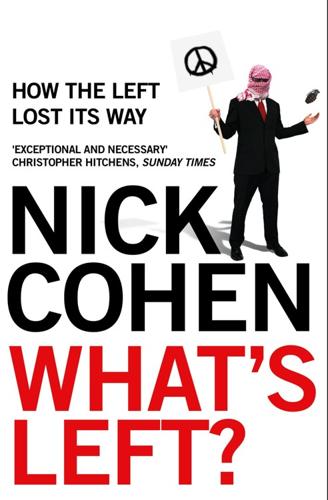
What's Left?: How Liberals Lost Their Way
by
Nick Cohen
Published 15 Jul 2015
But most of Monbiot’s comrades prided themselves on their total opposition to everything about their societies, and as a matter of principle and point of pride were unable to say a good word about them. They were incapable of supporting reform at home because if they did they would have to admit that democracy was not broken beyond repair. More seriously, their provincialism risked betraying the very foreigners they affected to support. India has a vigorous feminist movement that fights ancient cultural and religious prejudices. Like all strong political campaigns, it does not believe that an omnipotent ‘hegemon’ makes resistance futile. It wants Indian women to enjoy the same rights as Western women, and regards those rights as universal rather than Western. It would no more accept that freedom from murderous violence was an imperialist demand from the all-powerful empire than that the right to vote was for whites only.
…
Scott 98–9 Armstrong, Sir William 56 Ash, Lucy 121 al-Askari, Abdel-Qadir 51 Astor, Lord and Lady 217 asylum seekers 7 Atta, Mohamed 83, 255–7, 260, 269, 273 Auden, W.H. 122, 219, 220, 223, 224–5, 238, 335, 358–9 Australia 258 Axelrod, Pavel 103 al-Ayyeri, Yussuf 270 Aziz, Hind 34 Aziz, Tariq 292 Baath Party (Iraq) 24, 25, 33–4, 352, 365 alliance with Islamists after war to form ‘insurgency’ 8, 32, 286–7 and conspiracy theory 35–6 ideology 33, 35 and indoctrination 33–5, 41 and Iraqi communists 37–8 killings by 4–5, 31–2, 37 program against Iraqi Jews 36–7 purges of by Saddam 35, 42–4 seizure of power 22 and Soviet Union 37–8, 40 tyrannizing of Iraqis and forces of oppression 7, 33, 37, 41–2 Baath Party (Syria) 31 backlash politics 196–7 Bad Writing Contest 99–100 Bagehot, Walter English Constitution 189–90 al-Bakr, Ahmad Hasan 36 Baldwin, Stanley 220 Bali bar bombings (2002) 258 al-Banna, Hassan 265–6 al-Barak, Fadhil 35, 36 Barruel, L’Abbé Augustin 340, 341, 343, 345, 346 Memoirs to Serve for a History of Jacobinism 340 Battle of Britain 225 Baudrillard, Jean 110 Bazoft, Farzad 5, 53 BBC 159, 244, 304, 367, 368, 369, 379 Beard, Mary 274–5 Bell, Clive 228, 235 Bellow, Saul Ravelstein 80 Benaissa, Mohamed 352 Benenson, Peter 322 Benn, Hilary 367 Benson, Ophelia 101 Berman, Paul 249, 250, 312 Beslan school hostage crisis (2004) 259–60 Betjeman, John 221 Bevin, Ernie 231, 232, 233, 246 bin Laden, Osama 257, 258, 261, 267–8, 276, 365, 367 Birthler, Marianne 331 Blair, Cherie 205 Blair, Tony 54, 114, 185, 201, 277, 290, 297, 359, 364, 379 and Amnesty 322–3 and Iraq war 8, 202, 203, 280, 284, 285, 297, 300 and Kosovo war 151 and 9/11 257 Blakeney, Kate 63, 66 Bleasdale, Alan 184 blogosphere 270–1 Bloomsbury Group 192, 227, 228, 229, 235 Blum, Leon 249, 251 Blythe, Ronald The Age of Illusion 230 Boggan, Steve 40–1 Bosnian war 10, 127–51, 153–4, 168, 172, 370 atrocities committed 128, 129, 130, 131–2, 134 denial of crimes committed 171–8 ending of 151 lack of international help 135 Omarska prison camp 129, 130–1, 174 photograph of ‘emaciated men behind barbed wire’ 134, 174–5 pressure on Major government from Americans to intervene 145–9 prevention of action in by Major government 139–43, 144–5, 153–5, 168 siege of Sarajevo 153–4 Srebrenica massacre (1995) 130–1, 149–50, 171, 177–8 Trnopolje camp 131–4, 171, 174, 175–6 Bridget Jones’s Diary 313 Britain 138–9 and Euroscepticism 139 possibility of Bolshevik revolution in 1970s 55–7 prevention of action in Bosnian War by Major government 139–41, 144–5, 153–5, 168 radicalism in 58 trade unions 298–9 British Empire 162 British Muslims 369–72, 378 British National Party (BNP) 294, 310–11 British People’s Party 235–6 Brittain, Vera 248–9 Brown, Gordon 201, 297 Buchan, James High Latitudes 95 Burchill, Julie 207 Buruma, Ian and Margalit, Avishai Occidentalism 268 Bush, George (senior) 169 Bush, George W. 8, 9, 83, 85, 201, 209, 274, 284, 320, 321, 358, 359, 365, 373 Butler inquiry 285 Butler, Judith 100, 111 Butt, Hassan 371–2 Caldwell, Christopher 336–7 Cambodia 93, 166–7 Campaign for Nuclear Disarmament 230–1 Campbell, Professor David 176 Campbell, Sir Menzies 74 Camus, Albert 29 capitalism 22, 119–20, 195 Carey, Professor John 189 Castro, Fidel 93, 293 ‘Cato’ 225 Celebrity Big Brother 288–90 centralized regulation 194–5 Chamberlain, Houston Stewart 227, 266–7 Chamberlain, Neville 144, 217–18, 220, 227, 233 Chamcha, Saladin 184 Chechnya 259–60 Chemical Ali see al-Majid, Ali Hassan China 93, 94, 117 Chirac, Jacques 150 Chomsky, Noam 14, 155–62, 164–8, 170, 179–80, 258, 376 American Power and the New Mandarins 156–7 anti-Americanism 156–7 background 155–6 and Bosnian War atrocities denial 178–9 condemning of Kosovo War 170–1 and Hiroshima 156, 157 and Holocaust denial theory 164–6 and Khmer rouge killings in Cambodia 167–8 and media propaganda 157–8, 160–1 support of Johnstone’s Fools’ Crusade 178, 179 Christian Democrats 14 Churchill, Caryl 184 Churchill, Winston 2, 33, 218, 219, 245, 246 Clearances (Scottish Highlands) 118 Cliff, Tony 54 Clinton, Bill 83, 87, 145, 150, 201, 211, 273 Clwyd, Ann Saddam’s Iraq 40 Cockburn, Alexander 73 Coe, Jonathan 184 Cohn, Norman 345 Cohn, Professor Werner 174 Cold War 4, 88, 97, 143 Collard, Dudley 242 Collins, Michael 205–6 Columbia Journalism Review 159–60 communalism 309 communism 3–4, 89, 373–4 collapse of 87–8 and fascism 89, 237 killing of by communists 248 Communist Party (Britain) 238 attempt to rally support for Hitler after Soviet-Germany pact 239–46 People’s Convention 239, 242–6, 247 support of war effort after invasion of Soviet Union by Germany 246 Communist Party (Iraq) 37–8 Conquest, Robert 29, 103 Conservatives 2–3, 10, 53, 113 conspiracy theory 339–40 and Freemasons 35, 340–2, 345–6 and Jews 35–6, 65, 77, 343–6, 350–1 consumer leftism 373–6 consumerism 12, 221 Cook, Robin 285, 313 Cooper, Robert 136 council house waiting lists 200, 201 Critical Terms for Literary Study 100 Croatia 127 Crusaders 340 cults, political 60–3 Daily Mail 197 Daily Worker 240–1 Dalrymple, Theodore 229 Darfur 50, 117, 381 Dawkins, Richard 318 Dawson, Geoffrey 217 de Beauvoir, Simone 103 de Pauw, Cornelius 262–3 Declaration of Independence 317, 343 Deichmann, Thomas 174–5, 176, 177 democracy 193–4, 268, 342, 362, 365, 379, 380 fascism’s case against 268–70 Democrats 14, 211 Dench, Geoff 199 denial 162–3 and Bosnian war 171–8 and fascists 163–4 Holocaust 163–5, 179 Denmark 212 al-Din, Salah 33 Disneyland 110 Dole, Bob 145, 147, 150 Domvile, Admiral Sir Barry 235, 236 Dorfman, Ariel 283 Dostoevsky 67 dowry-murders 101, 102, 121–3 Drabble, Margaret 263 Dutton, Denis 99–100 Dzandarova, Zalina 259 East End/East Enders 198–201 East Timor 161, 170, 258, 275, 283 economists 114 education 204–5 Egypt 349, 350 Eliot, George 333 Eliot, T.S. 219 Empire (Hardt and Negri) 109–10 Engels, Friedrich 158 ‘Englishness’ 206 Enlightenment 35, 106, 109, 343, 355, 357 environment movement 356–7 epistemic relativism 105–6 Equity 57–8 Estikhbarat 40 ethnic cleansing 128, 365 ethnic minorities 11 eugenics 198 European Court of Human Rights 136, 212 European Exchange Rate Mechanism 3, 139 European Social Forum (2003) 115, 119–20, 301 European Union 10, 127, 135–8, 212, 214, 365, 379 Euroscepticism 139 Euston Manifesto 361–3 Fabians 190, 192, 193, 198 Fahrenheit 9/11 321–2 Fallacy of the Superior Virtue of the Oppressed 78–9 false consciousness, theory of 158–9, 374–5 Falwell, Jerry 261 family attempt to weaken influence of by political cults 61 fascism/fascists 3–4, 10, 268 case against democracy 268–70 and communism 89, 237 and denial 163–4 Faurisson, Robert 163–5 feminism/feminists 12, 90–1, 111, 112 in India 120 Ferguson, Euan 282–3 First World War 220 Fischer, Joschka 332 Fisk, Robert 271–2 ‘fisking’ 271 Foot, Michael 225, 232–3 Forster, E.M. 244 Foucault, Michel 107–8, 109, 377, 379 Fox, Dr Myron L. 97–8 Fox, John 146–7 France 47, 206, 212, 218, 281 Franco, General Francisco 1, 35, 50, 346 Frank, Thomas 209, 210–11, 212 Franks, General Tommy 72 Frayn, Michael 182–3 Freemasons 35, 38, 269, 340–2, 345–6, 350, 351 French left 249, 327 French Revolution 42, 355 French socialists and Hitler 249–52 Gaddafi, Colonel 68 Galbraith, Peter 50, 52 Galloway, George 74, 290–3, 300–1, 302, 310 game theory 97 Gaullists 14 Gavron, Kate 199 genocide against Iraqi Kurds 5, 7, 24, 48–9, 50–2, 127 defined by United Nations 129 Geras, Norman 325 Germany anti-war demonstrations 281 and Iraq war 329 see also Nazi Germany Globalise Resistance 296 globalization 141, 374, 376 see also anti-globalization movement Gold Standard 219 Gollancz, Victor 240–1 Goodlad, Alistair 153 Gorazde (Bosnia) 154 Gore, Al 273 Gorst, Irene 59–60 Gourlay, Walter 215 grammar schools 205 Grant, Ted 54 Great Depression 195, 218, 220–1, 356 Great Leap Forward 49 Greece anti-war demonstrations 281 Green movement 119, 356 Griffiths, James 234 Griffiths, Richard 236 Griffiths, Trevor 55 The Party 55–6, 57 Guantanamo Bay 324 Guardian 117, 179–80, 294, 304, 337–8 Guevara, Che 93 Guilty Men 225–7, 240 Gulf War (1991) 71, 89 Halabja 50–2, 292 Hamas 259 constitution 348–9 Hamza, Abu 351 Hardt, Michael and Negri, Antonio Empire 109–10 Hare, Sir David 184, 206 Harrington, Michael 82 Hawley, Caroline 46 Hayek, Friedrich 294 The Road to Serfdom 194–5 Healy, Gerry 53–5, 57–9, 61, 63–4, 66–8, 301 hegemonic 110–12 Heidegger, Martin 263–4 heroes/heroines 19–20 Herman, Edward S. 166, 168, 170, 176 Hezbollah 293–4, 366 Hiroshima 156, 157 Hitchens, Christopher 247, 253 Hitler, Adolf 4, 35, 49, 50, 246, 248, 250 appeasement of by Chamberlain 217–18, 220, 227, 233, 233–4, 276 and France 251 and Jews 30, 346 meeting with Lansbury 234 Mein Kampf 345, 346 pact with Stalin 358 rise of 231 seen as a bulwark against communism 217 Hizb-ut-Tahir 370 Ho Chi Minh 93 Hoare, Marko Attila 169–70, 171 Hobsbawm, Eric 103, 185, 241–2 Hoggart, Simon 299–300 Hollinghurst, Alan The Line of Beauty 184 Holocaust 336 denial of 163–5, 179 homosexuality 11, 105, 111 ‘honour killings’ 378 Horta, Hose Ramos 283–4 Houellebecq, Michel 213 Howard, Peter 225 human rights 39–40, 88, 106, 143, 312, 313, 316, 324–5, 362 Human Rights Watch 52, 312, 325–6 Hume, Mick 176 Hurd, Douglas 140–1, 142, 143, 144, 145, 147, 169, 370 Husain, Ed The Islamist 369–70 Hussain, Azfar 101–2, 104 Hussein, Saddam see Saddam Hussein el-Husseini, Haj Amin 347–8 Huxley, Aldous 235 identity politics 376–7 Independence Party 294 Independent 304, 320, 335, 366 Index on Censorship 335 India 75, 120–1, 162 dowry-murders and persecution of women 101, 102, 121–3 feminist movement 120 partition of 143 Indict 292 individualism 356 Indochina 166 Indonesia 81 Information Research Bureau 246 Institute for Public Policy Research 207 international criminal states 313 International Criminal Tribunal for the Former Yugoslavia 130 International Monetary Fund 117 Internet 270–1 Iran 22, 25–6, 81, 82, 374, 377, 379 revolution (1979) 26–7, 107–8, 380 war against Iraq 28, 32, 44, 47–8 women in 357–8 Iraq 4–6, 7, 20–6, 40, 72–3 alliance between Baathists and Islamists after war to form ‘insurgency’ 8, 32, 286–7 American assistance in war with Iran 46–8 Baath Party regime see Baath Party genocide of Kurds 5, 7, 24, 48–9, 50–2, 127 invasion of Kuwait 6, 70, 72–3 ‘oil-for-food’ programme 72 pull back by America in (1991) 71, 72, 80, 81, 87 sanctions issue 74–5 seen as only country to take on Israel 76–7 shift in attitude towards by left 30, 74–5, 89–91 and Soviet Union 37–8 terrorizing of Shia majority by Sunni Islamists 287 trade union movement 297–8, 301, 302–3 war against Iran 28, 32, 44, 47–8 weapons sales to 47 and Workers’ Revolutionary Party 65–6, 67, 68 see also Saddam Hussein Iraq Memory Foundation 330 Iraq war (2003) 4, 7–9, 84, 299–300, 357, 364–5, 381 aftermath 285–6, 381 anti-war movement/ demonstrations 169–70, 280–311, 313–14, 357 and Blair 8, 202, 203, 280, 284, 285, 297, 300 liberal opposition to 46, 202, 312–32 Iraqi Communist Party 334 Iraqi Federation of Trade Unions 298, 302 Ireland 212 anti-war demonstrations 281 Irvin, Jeremy 129, 133 Isherwood, Christopher 219, 224, 233 Islam 9, 107, 367 Islamic Combatant Group 258–9 Islamism/Islamists 260, 261–2, 264–6, 267, 269–70, 273, 343–4, 347, 352, 360, 365–6, 368, 371–2, 374, 381 Israel 21, 76, 77, 170, 335, 336, 338–9, 346, 347, 351–2, 353 Italy anti-war demonstration 280 Izetbegovic, Alija 154 jahilyya 265, 267 Jamaat-i-Islaami party 266, 351, 369, 371, 377 Jarman, Derek 184 Jarrow hunger marches 218 Jehovah Witnesses 296 Jelacic, Nerma 172–3 Jewish Chronicle 65 Jews 10, 35, 36, 269 attack on by Iraq’s Baath Party 36–7 conspiracy theory involving 35–6, 65, 77, 343–6, 350–1 and Hitler 30, 346 and Protocols of the Learned Elders of Zion 36, 344, 345, 346, 349 and tsarist Russia 344–5 see also antisemitism Johnson, Hewlett 243 Johnstone, Diana Fools’ Crusade 176–7, 178 Jong-Il, Kim 39 journalists 159–60 July bombings (London) 10, 257–8 Kagan, Robert 136, 315–16, 317 Kanaan, Jean-Sélim 326 Kansas 209, 209–10 Karadzic, Radovan 128, 129, 131, 169 Kelikian, Dr Hampar 148 Kenneth, John 50 Keynes, John Maynard 114, 228, 377 Economic Consequences of the Peace 228 Khan, Irene 324 Khan, Mohammad Sidique 258 Khmer Rouge 167, 167–8 Khomeini, Ayatollah 27, 28, 70, 107, 108, 184 Kianouri, Noureddin 27 Kirwan, Celia 246 Kissinger, Henry 47 Klein, Naomi No Logo109 Knights Templars 340–1, 342 Kosovo war 10, 151, 168, 170–1 Kouchner, Bernard 326 Kumari, Ranjana 121 Kurds 36 attempts to rally international support for 50 genocide against by Saddam Hussein 5, 7, 24, 48–9, 50–2, 127 use of poison gas against at Halabja 50–2, 292 Kuwait invasion of by Iraq (1990) 6, 70 Labour Party 93, 182, 220, 231–3 see also Blair, Tony; New Labour Labour Party conference (2004) 297, 299–300 Lader, Philip 367 Lansbury, George 199, 229–32, 233–4 Laski, Harold 21, 240 Lawrence, D.H. 219 League of Nations 231 Left Book Club 219, 240, 243 Leigh, Mike 184 Lenin, Vladimir 50, 54 Leslie, Ann 333 Lewis, C.

What We Owe the Future: A Million-Year View
by
William MacAskill
Published 31 Aug 2022
If he had imagined a future merely where most people were as rich as him, he would have failed to anticipate many of the things that improve our lives, like electricity, anaesthesia, antibiotics, and modern travel. It’s not just technology that has improved people’s lives; moral change has done so, too. In 1700, women were unable to attend university, and the feminist movement did not exist.19 If that well-off Brit was gay, he could not love openly; sodomy was punishable by death.20 In the late 1700s, three in four people globally were the victims of some form of forced labour; now less than 1 percent are.21 In 1700, no one lived in a democracy. Now over half the world does.22 Much of the progress we’ve made since 1700 would have been very difficult for people back then to anticipate.
…
In the late nineteenth and early twentieth centuries, eugenics was widely supported among intellectuals in liberal countries like the United States, Britain, and Sweden.136 If Nazism had not created such a strong opposition between eugenics and liberal ideas, then, horrifically, perhaps forced sterilisation and forced abortions would be widespread practices today. Or note that most cultures historically have been extremely patriarchal. If Roman attitudes towards gender had persisted in Western Europe, then perhaps the feminist movement could never have gotten off the ground. I’m not claiming that we know the truth of any of these counterfactuals; it’s impossible to know anything like this for certain. But given the theoretical reasons to expect multiple moral equilibria and the plausible examples of moral contingency that we can see today, we should not be confident that these very different moral worldviews couldn’t have become widespread or even globally dominant.

Stolen Focus: Why You Can't Pay Attention--And How to Think Deeply Again
by
Johann Hari
Published 25 Jan 2022
There was an organized movement of ordinary women who banded together and fought for it, and continued fighting even when it was really hard. There are, of course, many differences between the fight for feminism and the fight for our focus. But nonetheless, I kept returning to this example in my mind for a very basic reason. The feminist movement teaches us that huge and seemingly immovable forces can be challenged by ordinary people—and that when they are, it can lead to real change. The concentrated power of men in 1962 was vastly greater than the power of Big Tech as I write this in 2021. Men controlled almost everything—every parliament, every corporation, every police force—and they had for as long as those institutions had existed.
…
See also pollution Environmental Protection Agency, 207 Eriksen, Thomas Hylland, 278–79 error-correcting, 39, 40 Eslami, Motahhare, 132 ethical issues business models, 113–17, 118–19, 123 design, 111–12, 117–18, 121–23, 129 stimulant use, 222–24, 236–37 Evangelische Schule Berlin Zentrum, 261 exercise attentional boost from, 243 at schools, 256 exhaustion, 185–95 author’s personal experience, 63–65 background, 185–86 Covid-19, 193 movement to reclaim rest, 273–74 productivity and, 186–90 “right to disconnect,” 194–95 sports team analogy, 190 weekends and vacation time, 190–92 extrinsic motives, 247–48, 252 Eyal, Nir on Big Tech’s efforts, 147–48 cruel optimism of, 151–53, 155 interview with, 155 on mind manipulation, 148 on surveillance capitalism, 162–64 techniques for unplugging, 143–47, 148, 149, 150, 154 Hooked: How to Build Habit-Forming Products, 148, 149 Indistractible, 145, 149–50 Ezard, Nadine, 228, 229 F Fabio (child), 137–38 Facebook algorithms and, 130–32, 138–39, 164–65 business model, 122–23, 124–25, 165 Covid-19 and, 272 effect of, 115 ethical issues, 122–23 infinite scroll and, 120, 159 message in the medium, 84, 85 notification settings for, 147 profile tracking by, 125–26 reinvented, 157–58, 159–61 surveillance by, 169–70 Fadell, Tony, 123 false news, 135–40 favelas, 137–39, 165 fear, as internal trigger, 148–49 feminist movement, 166–68 fiber, 198 financial stress, 180–82, 270 Finland, 181–82, 215, 261–62 Firefox, 119–20 fire hose analogy, 32–33 flow states, 46–62 as author’s change strategy, 268–69 author’s personal experience, 46–50, 59–61 background, 50–54 conditions for, 55–59 defined, 55 discovery of, 53–55 as fragile and disruptable, 59–61 fragmentation comparison, 62 reading and, 59–60, 61, 64, 80 reflections on, 61–62 focus.

Imperial Ambitions: Conversations on the Post-9/11 World
by
Noam Chomsky
and
David Barsamian
Published 4 Oct 2005
Young women who were part of the movement recognized there was something wrong with the fact that women were doing all the office work and so on, while the men were going around parading about how brave they were. They began to regard the young men as oppressors. And this was one of the main sources of the modern feminist movement, which really blossomed at the time. At some point, people recognize what the structure of power and domination is and commit to doing something about it. That’s the way every change in history has taken place. How that happens, I can’t say. But we all have the power to do it. How do you know your mother felt oppressed?

So Sad Today: Personal Essays
by
Melissa Broder
Published 15 Mar 2016
I’m afraid that I will have sex with someone who prefers no pubes and sees me as less-than, because I have a big, hairy bush. True, I could have sex with someone who loves pubes and feel judged about my bare pussy. But, like, the other way feels scarier. I feel bad that when I see feminism used as clickbait, it kind of makes me want to puke or die. This is not a condemnation of the contemporary feminist movement (or movements), but a revulsion to clickbait. To engage in depth with the ephemeral that is marketing culture makes my inner witch nauseous. I feel like if I read the article I am being poisoned. Like, I am a vampire and clickbait is my garlic, and to turn feminism into clickbait is just a giant fucking puke—and not the sexy kind.
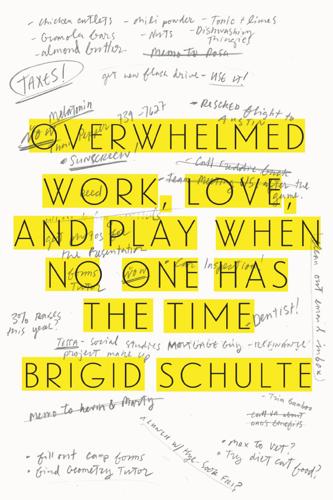
Overwhelmed: Work, Love, and Play When No One Has the Time
by
Brigid Schulte
Published 11 Mar 2014
Busy and distracted people can read a short e-mail and forward it to a lawmaker, click on a Twitter link, post a comment, or add their story to the bank on the website in a matter of seconds. “We know moms and dads are busy,” Blades said. “Between work and raising a family, they have very little time to take action, much less comb their hair and brush their teeth.” MomsRising and other organizations are springing up to push forward where they say the mainstream feminist movement veered off course. Rowe-Finkbeiner interviewed more than five hundred women for her book, The F-Word: Feminism in Jeopardy, and discovered the majority felt feminism, in pushing them to be ideal workers, was out of touch with the complicated reality of their lives. Dina Bakst cofounded A Better Balance in New York to fight for better family policy after her own experience working for a traditional feminist legal organization left her disillusioned.
…
“It’s just wrong, the sense that it was up to us women, that we had a duty to be out there working and showing what we could do,” Blades tells me. “The next wave of the women’s movement has to include men. It has to include families.” Blades and Rowe-Finkbeiner sound an awful lot like … Betty Friedan. Friedan is most remembered for sparking the modern feminist movement with her book about the limited horizons and stultifying inner lives of middle-class 1950s housewives like her in The Feminine Mystique. But in 1981, Friedan looked at what the women’s movement had wrought and became dismayed. She was distressed that radical feminists, who proclaimed “marriage constitutes slavery for women,”8 had become so vocally antimother, antifamily, and antimale.

Twitter and Tear Gas: The Power and Fragility of Networked Protest
by
Zeynep Tufekci
Published 14 May 2017
The power to dominate a society is closely related to the power to dominate what are considered accepted (or mainstream) views, and to induce people who may be suffering to accept the way things are as the correct or natural order. Even after there is a group large enough to form the foundation from which a social movement may emerge, there is a struggle to gain acceptance within the broader society for the movement’s version of the issue. Is the problem, as the feminist movement claimed, that women are not considered and treated as equal members of society? Or is it, as some claimed in reaction to feminism’s emergence, that a small number of women are rejecting their proper role in society and attempting to become more like men? Changing the minds of elites and those in law enforcement is important, too, especially in more repressive societies where movements might face severely violent reprisals.
…
Worse, much of this activity is public and permanent by default, causing movements to re-litigate old fights again and again.29 This makes for movements brimming with activity, but much of it is chaotic and even self-defeating. Thus, Freeman’s secret movement elite can morph into a micro-celebrity movement elite, based on the manufactured structurelessness of the social media attention economy. Social media sites also mix people’s personal lives with their political trajectories. In the 1960s, the feminist movement correctly identified that the personal is political: individual experiences are embedded within structures of power. Now it appears also that everything political is personal, since movement politics is experienced in environments that combine multiple contexts from the personal to the political, all homogenized because multiple audiences who might otherwise be separated by time and space are all on the same Facebook page.30 Many personal aspects of one’s life and interactions expressed on social media—tastes in music, travel, offhand statements about current cultural events—have become part of political expression, and the multiple social roles that each person plays—a natural part of human society—have become harder to maintain.

Nothing Personal: My Secret Life in the Dating App Inferno
by
Nancy Jo Sales
Published 17 May 2021
The young women I met at Satsko’s were accomplished and smart and thoroughly flummoxed by what dating had become. It was sitting at the bar, listening to them talk about the disrespect they were encountering from the men they met on dating apps, that I started to think about how online dating had become the site of a potent new wave of backlash—the same hostile reaction to the gains of the feminist movement identified by Susan Faludi in her 1991 bestseller named for this phenomenon. It seemed to me that, as women had achieved more and more professional and political power, the destabilizing trend with which they now had to contend was the outrageous sense of entitlement and disrespect from the men they were dating and with whom they were having sex.
…
But then, when you look at the time in which they’ve grown up, it actually makes a lot of sense. Millennial men were born and came of age during what, in 1989, Andrea Dworkin first called the “war on women”—now understood as the persistent, decades-long effort by the Republican Party to overturn the gains made by the second wave of the feminist movement in areas such as reproductive rights, domestic violence, and workplace discrimination. And this political hostility and its cultural reverberations have, I think, done a number on young men’s attitudes toward women. Millennial men were also born and came of age during backlash and its media-driven assault on feminism.

Doppelganger: A Trip Into the Mirror World
by
Naomi Klein
Published 11 Sep 2023
After the lost decade of the 1980s—when feminism was suddenly too earthy and earnest to make it in prime time—the corporate media were ready to declare a third wave of the women’s movement, and The Beauty Myth lifted up Wolf as its telegenic face. She was hardly the first feminist writer to expose the impossible beauty standards imposed on women, but she had a unique angle. The core of Wolf’s argument was that during the 1980s, just as the second-wave feminist movement had succeeded in winning greater equality for women in postsecondary education and the workplace, the pressure on women to meet impossible standards of thinness and beauty had increased sharply, putting them at a competitive disadvantage with men in their fields. This was no coincidence, she argued.
…
So it concerns me when Wolf’s exaggerations, speculations, and baseless claims get conflated with the shock doctrine—not because it’s a brand in need of protection, but because it’s a framework that has given people some language to guard against profiteering and attacks on democracy during confusing periods of emergency. When that concept is mangled by association with unhinged conspiracy theories about global cabals, it becomes harder for it to serve that purpose. It all gets mixed up, rendered absurd (“too ridiculous to take seriously and too serious to be ridiculous”). Wolf has similarly twisted the feminist movement’s core tenet that all people have the right to choose whom they have sex with and whether to carry a child. Now she was distorting that principle to cast Covid tests and vaccine mandates as violations of “bodily integrity” akin to those endured by women who underwent forced vaginal exams, claiming that all are examples of “the state penetrating their body against their will.”
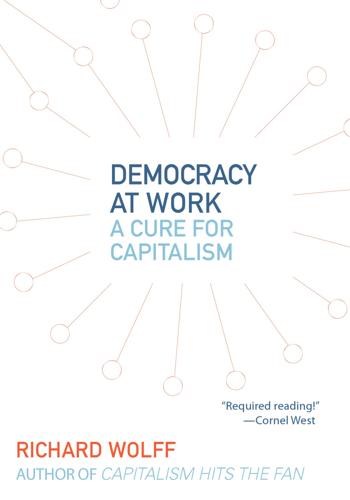
Democracy at Work: A Cure for Capitalism
by
Richard D. Wolff
Published 1 Oct 2012
This new right-wing coalition led the way to ending the wartime alliance with the Soviet Union as a key means to breaking up the New Deal coalition and thereby undoing the New Deal’s achievements. The New Right did not always win. It suffered some divisions and splits in the face of the African-American civil rights movement and the feminist movement. It also faced a broad cultural and political counterattack during the 1960s. Changing family conditions, attitudes, and sexual mores have repeatedly produced other splits. Yet the New Right found a substantial glue to hold itself together in a revival of the peculiar American tendency to demonize government as the ultimate cause of all social evils.

Roller-Coaster: Europe, 1950-2017
by
Ian Kershaw
Published 29 Aug 2018
The Feminist Liberation Movement – Simone de Beauvoir, the partner of Jean-Paul Sartre, had been an early pioneer and her book Le deuxième Sexe (1949, The Second Sex) a vital ideological influence – played a significant part in promoting women’s sexual independence. The increasing acceptance – at least in theory – of women’s equality, a major and lasting achievement of the feminist movement, amounted to one of the most important social changes of subsequent decades and was in good measure made possible by the invention of the Pill. Its availability enabled both men and women to enjoy casual sex without the risk of pregnancy. ‘Free love’ – sexual freedom to interchange multiple partners – crossed the Atlantic from the hippie culture in San Francisco.
…
The protest movements captured and accentuated generational and emancipatory impulses that pre-dated 1968 and continued long after the drama had subsided. They were instrumental in the moves towards less authoritarian education. They also opened up moves for gender equality. Women still faced widespread discrimination in education, in the workplace, and in most other spheres of social interchange. The feminist movement was as yet in its infancy and women’s liberation played only a subsidiary role in the protests of 1968. Nonetheless, the pressure for equal rights for women and racial minorities – drawing on the Civil Rights movement in the United States – and for sexual freedom (including women’s rights to have an abortion) and gay rights, even if those rights only bore fruit gradually (and partially), owed more than a little to the impetus provided by ‘1968’.
…
Algerian Harkis, whose former work for the French colonial regime forced them to flee independent Algeria, arrive at a refugee camp in Rivesaltes in southern France on 16 September 1962. 8. Then France’s most prominent intellectual, the existentialist philosopher Jean-Paul Sartre, and his partner Simone de Beauvoir, who greatly influenced the early feminist movement, on 22 October 1963 during a visit to Rome. 9. Little Richard, a star of the rock and roll craze that swept over Europe in the second half of the 1950s, during his European tour in 1962. On that tour, he performed on some dates alongside The Beatles, then a little-known group but which within months would become a global phenomenon. 10.
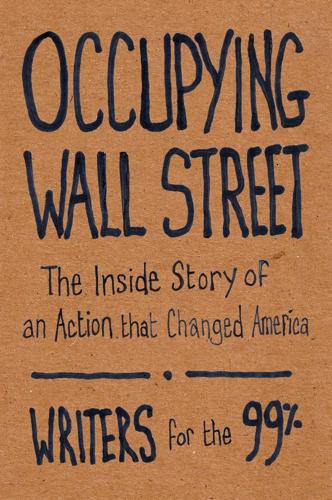
Occupying Wall Street: The Inside Story of an Action That Changed America
by
Writers For The 99%
Published 17 Dec 2011
Typically, the person making the block will explain the reasoning behind their objection and offer a “friendly amendment,” designed to make the proposal under discussion something that can be supported. Like many other aspects of OWS procedures, the use of hand signals has a long history. According to Marina, “. . . the tools and language [that OWS uses] originate with the Quakers. We’re talking about generations, the anti-war movement, the feminist movement; a lot of different social movements in the U.S. have used different forms of consensus that include [facilitation] tools.” Marina also pointed out that, because they are silent, the hand gestures were particularly useful in large assemblies where clapping or cheering would use up time that could be otherwise devoted to the business of the meeting, a consideration of particular importance for proceedings being conducted at the tortoise tempo of the people’s mic.

What We Say Goes: Conversations on U.S. Power in a Changing World
by
Noam Chomsky
and
David Barsamian
Published 1 Oct 2007
For most of the population the period since the 1970s has been pretty gloomy. Real incomes have stagnated or declined. Nevertheless, there was no economic collapse in the 1980s. But it was a period of tremendous activism. For example, the Latin American solidarity movements—something new after hundreds of years of Western imperialism—developed in the 1980s. The feminist movement didn’t develop as a result of economic collapse. The global justice movements of the 1990s, which are extremely important, developed during a brief period of economic boom. I just don’t think the correlations work. In the 1980s, you and Edward Herman wrote Manufacturing Consent.29 Of course, then the Soviet Union was the archenemy of the United States.

One Less Car: Bicycling and the Politics of Automobility
by
Zack Furness
and
Zachary Mooradian Furness
Published 28 Mar 2010
Frances Willard, a prominent temperance activist and cyclist, famously used the corset as a rhetorical metaphor in her speech to the Women’s national Council of the United States in 1891: “She is a creature born to the beauty and freedom of Diana, but she is swathed by her skirts, splintered by her stays, bandaged by her tight waist, and pinioned by her sleeves until—alas, that i should live to say it!—a trussed turkey or a spitted goose are her most appropriate emblems.”38 The burgeoning feminist movement rallied around cycling as a way to critique victorian ideals of femininity and groups like the rational Dress Society explicitly connected women’s liberation to bicycling, via the issue of clothing. There was a significant and somewhat obvious overlap between the interests of clothing reformers, female cyclists, and feminists of the period since women were socially, economically, and quite literally constrained in their mobility.
…
See also Great Britain English Mods versus rockers, 153 Environmentalism: and automobility, 60, 65; and bicycling, 63, 69, 153; and environmen tal politics, 151; and transportation, 207 Environmental racism, 207 Epperson, Bruce, 70–71, 212, 249n126 Ethnic cleansing and hygiene, 28 Europe, 13, 28, 37, 47, 59–60, 67, 172 Evans, ross, 154 Fast, Tony, 166–167 Faust, Steven, 67 Federal-aid road act (1916), 240n18 Federal Highway act (1921), 240n18 Federal Trade Commission (FTC), 108 Female cycling, 26; and advertising, 21; and bloomers, 20; as empowering, 45; and fiction narratives, 21–22; as liberating, 19–21; and new woman, 21; normalization of, 22; and popular press, 21–22; resistance to, 20; and women of color, 20 Feminist movement and cycling, 20 Ferrell, Jeff, 90 Fey, Kim (aka Kim Fern), 184, 283n44 Fincham, Ben, 129 Finland, 4 Fishburne, laurence, 112 Fisher, Martin, 286n90 Fishman, Barry, 245n74 Fitzpatrick, Jim, 25 Fixed Gear Gallery (Web site), 163 Fláneur, 85 Flink, James, 16 Florida, 269n122 Flow, 200 Ford, Henry, 15, 48–49 Ford, William Clay, Jr., 210 Ford-Smith, Honor, 194 Forester, John, 71, 73, 138, 248n119, 248– 249n120, 249n124, 263n61; and cyclist-inferiority superstition, 72; and vehicular-cycling principle, 70 The 40-Year-Old Virgin (film), 111 France, 28, 237n142; bicycling in, 8 Free market capitalism, 213, 287n99; and poverty, 198, 200 Free ride, 173, 178 Friedman, Thomas, 198 Friends of the Earth, 60 Galdins, robert, 175 Garvey, Ellen, 21–22, 27, 30 Gender and mobility, 180 General Dutch Cyclists Union (anWB), 57 General Motors, 50 Gerken, John, 184 Germany: and the autobahn, 51; bicycling in, 4, 33–34; and living space mythos, 51 Get a Life (television program), 111 Ghana, 187, 191, 201, 287n98 Ghost bikes, 97; and DKny campaign, 160 Giant Bicycle Company, 214–216 Global agreement on Tariffs and Trade (GaTT), 189 Global climate change, 206 Globalization, 13, 188, 213–214 Global South, 186; and automobility, 190 Gluck, Harold, 128 Goodridge, Steven, 74 Gore, al, 206 Gorz, andré, 59, 89, 253–254n64 Graber, Don, 215 Great Britain, 134, 188, 267n104; anti-roads protests and cultural politics in, 150; bicycling in, 135, 242n29; cars and fatalities in, 135; drivers in, 130–131; pedestrian and cyclist fatalities in, 268n117.

Multitude: War and Democracy in the Age of Empire
by
Michael Hardt
and
Antonio Negri
Published 1 Jan 2004
After the 1968 global explosion of struggles of industrial workers, students, and anti-imperialist guerrilla movements, decades passed with no new international cycle of struggles. This is not to say there were no significant instances of revolt during these years, because indeed there were and many of them extremely violent—the anti-Apartheid struggle in South Africa, the continuing rebellion against British rule in Northern Ireland, the Palestinian Intifada, feminist movements, Stonewall and the gay and lesbian movements, and numerous less-publicized local and national revolts by industrial workers, agriculturists, and oppressed populations. None of these revolts, however, formed a cycle of struggles in which the common was mobilized extensively across the globe.
…
Increasingly, particularly in the subordinated countries, where the nation-state is not capable of guaranteeing rights, protesters appeal directly to international and global authorities, shifting the discussion from “civil rights” to “human rights.” Throughout the world today human-rights NGOs express grievances of injustices against women, racial minorities, indigenous populations, workers, fisherman, farmers, and other subordinated groups. It is especially striking how feminist movements over the past twenty years, first in the subordinated countries and then in the dominant ones, have transformed their organizations into NGOs and formulated women’s rights as human rights.61 The promise of human rights is to guarantee rights universally, with the power both to counter the injustices of national legal systems and to supplement their incompleteness.
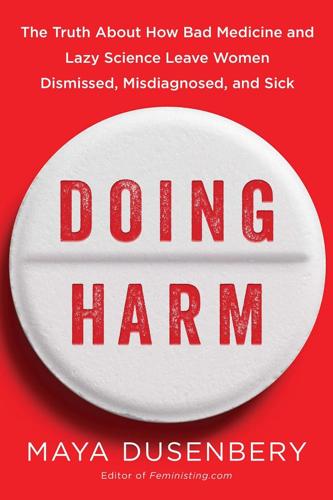
Doing Harm: The Truth About How Bad Medicine and Lazy Science Leave Women Dismissed, Misdiagnosed, and Sick
by
Maya Dusenbery
Published 6 Mar 2018
Just as in the nineteenth century, women were still thought to bring illness upon themselves by failing to be properly womanly—only now their symptoms were all in their heads. MEDICALLY UNEXPLAINED . . . BY WHOM? The concept of hysteria has an impressive ability to adjust to changing times. Freudian theory fell firmly out of favor in American medicine in the 1970s. The feminist movement radically expanded the roles available to women. Yet medicine retained the idea that unexplained physical symptoms could be attributed to the mind. When the third edition of the Diagnostic and Statistical Manual of Mental Disorders (DSM) was published in 1980, hysteria had been removed, but there was a new section: the “somatoform disorders.”
…
Treatments ranged from hypnosis—repeat after me: “Sexual intercourse is a wonderful act that results in a great deal of satisfaction”—to couples therapy to numbing ointments and, Kaler points out, their success was “generally measured in terms of whether they enabled intercourse to take place, rather than whether they alleviated pain per se.” During the seventies, as the feminist movement brought increased recognition of women’s sexual agency independent from their husbands, the root of the problem gradually shifted from the straight couple to the woman alone. No longer were the only mentions of vulvar pain found in medical articles with titles like “Wives Who Refuse Their Husbands.”

Fancy Bear Goes Phishing: The Dark History of the Information Age, in Five Extraordinary Hacks
by
Scott J. Shapiro
As a student, she was deeply concerned with issues of discrimination and social justice, and she also participated in antinuclear demonstrations. Which is more probable? Linda is a bank teller. Linda is a bank teller and is active in the feminist movement. In numerous studies, approximately 80 percent of participants thought it more likely that Linda was a teller active in the feminist movement. To them, Linda seems like a feminist. Indeed, she fits the feminist stereotype to a T: a young woman who cares about social justice, is unafraid to speak her mind, and is politically active. While these reactions are psychologically normal, they are also deeply irrational.

Animal Spirits: The American Pursuit of Vitality From Camp Meeting to Wall Street
by
Jackson Lears
Bourne died in the flu epidemic of 1918, still a young man at thirty-two but already an apostate from the religion of experience. Bourne’s contemporary and fellow lyrical leftist Mabel Dodge Luhan (1879–1962) lived longer, and sustained her life-worship, in various forms, until she died at eighty-three. A key figure in the revitalized feminist movement of the 1910s, Luhan merged social and sexual radicalism. Her chief inspiration was the birth control advocate Margaret Sanger, who appeared often at Luhan’s Greenwich Village salon, mesmerizing the other participants by evoking the unexplored possibilities of female sexual experience. Luhan recalled these episodes in her autobiography: “For Margaret Sanger to attempt what she did at that time seems to me now like another attempt to release energy in the atom, and who knows but perhaps that best describes what she tried to do,” Luhan wrote.
…
In March 1913 they staged a march on Washington that rivaled the Paterson strike pageant in its orchestration of collective vibrancy. “Imagine a Broadway election night crowd surging forward constantly, without proper police restraint, and one gains some idea of the conditions,” The New York Times reported. Bergson had flattering things to say about feminists, too. He told an interviewer that the current feminist movement was “the greatest event in the history of the world since the promulgation of the Christian ideal.” What feminists liked in Bergson, wrote Marian Cox in The Forum, was “his insistent demand that we turn away from the intellectualism of life to life itself, and this also is the aim of Feminism … Philosophy is becoming more human … When subjects of thought are said to become ‘human’ it is but a synonym for sympathy and harmony with the movement of life; which … is the feminine element in humanity.”
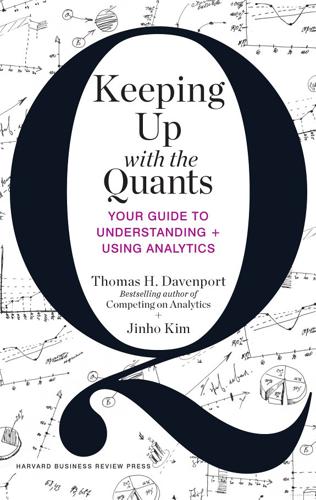
Keeping Up With the Quants: Your Guide to Understanding and Using Analytics
by
Thomas H. Davenport
and
Jinho Kim
Published 10 Jun 2013
Anthony and the other suffragettes would have said about the fact that almost 50 years after the enfranchisement of American women, a Columbia University sociologist found that only one wife in 22 said she cast a different vote from her husband. A reader wrote saying, “I feel that they would have been quite pleased. The feminist movement must have come a long way, if after fewer than 50 years since the enfranchisement of American women, only one husband out of 22 has the courage to vote against his wife.”15 In sum, you should always question whether the numbers presented to you are appropriately interpreted with respect to the problem at hand.

On Power and Ideology
by
Noam Chomsky
Published 7 Jul 2015
The intelligentsia also lent their talents enthusiastically to the cause after World War II, abandoning the earlier illusion that they might gain a measure of power by riding a wave of popular struggle (the Leninist dream) and recognizing that real power, and the basis for their privilege, would continue to reside in the business sectors that dominate the state capitalist system. The 1960s and early 1970s again witnessed the growth of popular activism and popular movements that might have threatened business control of the political system, with the rise of the civil rights movement, the anti-war movement, the feminist movement, ethnic movements, organization of local communities, and so on. These developments evoked immediate and serious concern on the part of elite groups. They constituted the “crisis” identified by the liberal Trilateral Commission as a major threat to “democracy,” as the term is understood within the reigning doctrinal system.
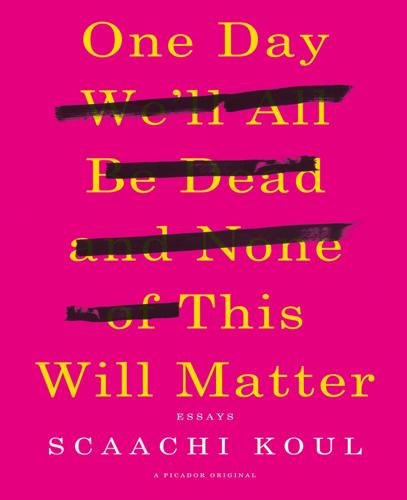
One Day We'll All Be Dead and None of This Will Matter
by
Scaachi Koul
Published 7 Mar 2017
In the first, everything is too beautiful to be encapsulated, women are swarthy and hippy, shoeless boys play soccer in dirt roads, elephants roam the streets, and temples are merely there for your enjoyment. In the second, India is a country lurching forward awkwardly, suffering a rape epidemic, incapable of a feminist movement or proper health care, a place where people shit and piss in the streets, where the caste system has ruined entire generations, where poverty is so rampant and depressing that you’ll hardly make it out with your soul intact, where your IT centre is based, a place just close enough to Pakistan or Iraq or Afghanistan to be scary, but stable enough to be fun and exotic.
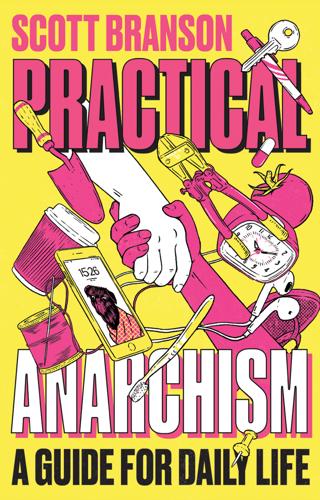
Practical Anarchism: A Guide for Daily Life
by
Scott. Branson
Published 14 Jun 2022
Framing touch and intimacy through the ability to consent to any interaction aims to regain the autonomy we are trained out of. One model of consent is that in touch, whether friendly or more intimate, one asks for the verbal affirmation that the touch is desired: asking before hugging or kissing. This model replaces the “no means no,” used by certain feminist movements to define rape, with “yes means yes”—in other words, even if “no” isn’t said, if “yes” isn’t said also, then the touch may be veering into unwanted territory. In a patriarchal society, the absence of bodily autonomy ends up getting normalized for feminized people, perhaps first through the cat-and-mouse game of teenage straight courtship, where a boy builds a girl up and then wears her down until she gives him the sex he desires.
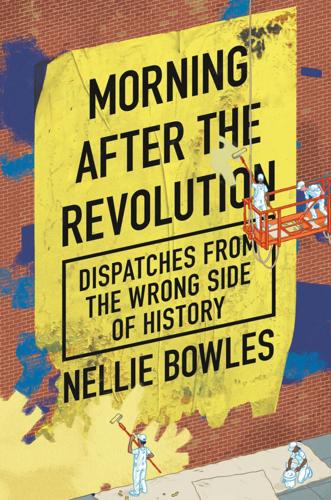
Morning After the Revolution: Dispatches From the Wrong Side of History
by
Nellie Bowles
Published 13 May 2024
How am I meant to caucus with a girl who is dating a boy but considers herself queer because they waited to have sex? When did all these new people start calling themselves LGBTQIA+? Why do they want this? How many places higher up the progressive stack does it even take them? My favorite radical feminist, Julie Bindel, one of the leaders of England’s old-school feminist movement, likened the new community name to a Wi-Fi password. Bindel and some other radical feminists (as they’ve taken to calling themselves) put together a new nonprofit—The Lesbian Project—and launched in 2023. From their manifesto: “The Lesbian Project works to build a knowledge base about lesbian lives, promote sensible and evidence-based policy, and contribute to building lesbian community in the UK and internationally.”
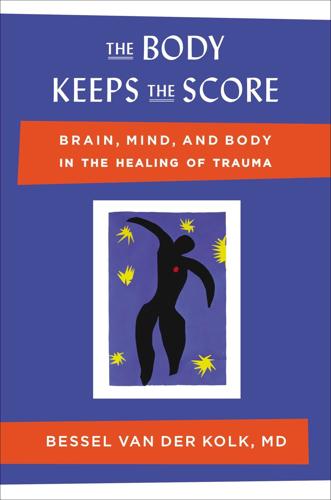
The Body Keeps the Score: Brain, Mind, and Body in the Healing of Trauma
by
Bessel van Der Kolk M. D.
Published 7 Sep 2015
In 1974 Freedman and Kaplan’s Comprehensive Textbook of Psychiatry stated that “incest is extremely rare, and does not occur in more than 1 out of 1.1 million people.”16 As we have seen in chapter 2 this authoritative textbook then went on to extol the possible benefits of incest: “Such incestuous activity diminishes the subject’s chance of psychosis and allows for a better adjustment to the external world. . . . The vast majority of them were none the worse for the experience.” How misguided those statements were became obvious when the ascendant feminist movement, combined with awareness of trauma in returning combat veterans, emboldened tens of thousands of survivors of childhood sexual abuse, domestic abuse, and rape to come forward. Consciousness-raising groups and survivor groups were formed, and numerous popular books, including The Courage to Heal (1988), a best-selling self-help book for survivors of incest, and Judith Herman’s book Trauma and Recovery (1992), discussed the stages of treatment and recovery in great detail.
…
-C., 22 Charcot, Jean-Martin, 177–78, 178, 182, 184 Chemtob, Claude, 119 childhood trauma survivors, 123–35, 351 agency, sense of, as lacking in, 113 arousal in, 161 attachment coping styles in, 114–20 attention and concentration problems in, 158, 166, 245–46, 328 borderline personality disorder and, 138–41 disorganized attachment in, 118–19, 166 dysregulation in, 158, 161, 166 high-risk behavior in, 120, 134, 147 home-visitation program for, 167 hypersensitivity to threat in, 158, 161, 310, 328 increased risk of rape and domestic abuse in, 85, 146–47 inhibition of curiosity in, 141, 350 internal world maps of, 127–30 loyalty to caregivers of, 133 misdiagnosis of, 136–48, 150, 151, 157, 226, 282 numbing in, 279 rage in, 304 relationship difficulties of, 158 safety, sense of, as lacking in, 141, 213, 301, 317 school problems of, 146, 158, 161 schools as resources for, 351–56 self-harming in, 141, 158 self-hatred in, 158, 279 sense of competence lacking in, 166, 350 social engagement and, 161 social support for, 167–68, 350 substance abuse by, 146, 151 suicidal behavior in, 141, 146 temporal lobe abnormalities in, 416n trust as difficult for, 141, 158, 340 see also developmental trauma disorder (DTS) childhood trauma survivors, of emotional abuse and neglect: abandonment of, 141, 304, 327, 340 depersonalization in, 72 numbing in, 87–89 prevalence of, 20–21 psychotherapy of, 296–97 Sandy as, 97 self-harming in, 87, 88 self-respect lacking in, 304 sense of safety lacking in, 296–97 submissiveness in, 97, 218 substance abuse by, 327 suicidal behavior in, 88, 290 trust as difficult for, 150 childhood trauma survivors, of sexual abuse and family violence: dissociation in, 132–33, 162, 172, 265, 316, 329 flashbacks of, 20, 131, 135, 172, 173 “hallucinations” in, 25 helplessness of, 131, 133–34, 211, 265, 289–90 hypersensitivity to threat in, 17, 143 of incest, see incest survivors incoherent sense of self in, 166 intimacy as difficult for, 143 isolation of, 131 legal cases involving, 174–75, 183, 190 Lisa as, 316–18, 325, 329 loyalty to caregivers of, 386n Maggie as, 250–51 Maria as, 300–304 Marilyn as, 123–35, 289 Mary as, 130, 277–78 nightmares of, 20, 134–35 numbing in, 124, 265–66 obesity in, 144, 147, 266 prevalence of, 1, 11, 20–21 public acknowledgment of, 189 rage in, 285 repressed memories in, 190 seizures in, 172, 174 self-blame in, 131 self-deceit in, 2, 23–24 self-harming in, 20, 25, 141, 172, 264, 316, 317 self-hatred in, 134, 143 shame in, 13–14, 67, 132, 174 substance abuse by, 327 suicidal behavior in, 141, 147, 150–51, 286, 287, 316 TAT test and, 106–7 trust as difficult for, 134 children: abuse of, as most costly public health issue, 148, 149–50 antipsychotic drugs prescribed to, 37–38, 226 attachment in, see attachment caregivers’ relationships with, as predictor of adolescent behavior, 160–61 internal world maps of, 109, 127, 129 loyalty to caregivers of, 133 see also infants Children’s Clinic (MMHC), 105–9, 111, 121 Child Sexual Abuse Accommodation Syndrome, The (Summit), 131, 136 China, traditional medicine in, 207 chlorpromazine (Thorazine), 22–23 chronic fatigue syndrome, 330 clonidine, 225 Clozaril, 28 cognitive behavioral therapy (CBT), 182, 230–31, 246, 292 in treatment of PTSD, 194, 220–21 Coleman, Kevin, 336, 342, 344 collapse, see freeze response (immobilization) combat: brain waves and, 324 see also PTSD (posttraumatic stress disorder), of combat veterans community, mental health and, 38, 213–14, 244, 331–34, 355 Community Mental Health Act (1963), 373n competence, sense of, 166, 341 Comprehensive Textbook of Psychiatry (Freedman and Kaplan), 20, 188–89 conduct disorder, 282, 392n conflict: as central to theater, 335 trauma survivors’ fear of, 335 consciousness, see self Cope, Stephen, 123, 230, 263, 272 cortical networks, local, 417n cortisol, 30, 61, 154, 162, 223 Countway Library of Medicine, 11, 24 creativity, see imagination Cummings, Adam, 155 cummings, e. e., 122 Cymbalta, 35, 37 Dalai Lama, 79 Damasio, Antonio, 93, 94–95, 382n dance: in trauma recovery, 242–43, 355 see also rhythmic movement Darwin, Charles, 74–76, 75, 77 Daubert hearings, 174–75 Decety, Jean, 222 default state network (DSN), 90 Defense Department, U.S., 156, 224, 226–27, 332 Pharmacoeconomic Center of, 224 defense mechanisms, suspension of, in intimate relationships, 84–85 Delbo, Charlotte, 195 delta waves, 320 Dementia Praecox (Bleuler), 24–25 denial, 46, 291 Denial: A Memoir (Stern), 7 depersonalization, 71–73, 71, 99–100, 132–33, 286, 386n, 401n depression, 136, 150, 162, 225 chemistry of, 26, 29 derealization, 401n desensitization therapies, 46–47, 73, 220, 222–23 developmental psychopathology, 2 developmental trauma disorder (DTS; proposed), 166–68 APA’s rejection of, 149, 158–59, 166 criteria for, 158, 359–62 see also childhood trauma survivors Dewey, Kippy, 337 diagnosis, definition of, 137–38 diagnosis, psychiatric, childhood trauma as misunderstood in, 136–48 Diagnostic and Statistical Manual of Mental Disorders (DSM), 29, 137 arbitrariness of, 323 childhood trauma survivors ignored by, 143 DSM-III, 29, 137, 142, 156, 190 DSM-IV, 143 DSM-5, 159, 164–66, 329, 393n reliability issues in, 164–65 social causation ignored in, 165 dialectical behavior therapy (DBT), 262, 270 Diamond, Adele, 418n disruptive mood dysregulation disorder, 157, 393n dissociation, 66–68, 95, 179, 180–81, 194, 211, 247, 281, 294, 317–18, 401n maternal misattunement and, 121–22, 286 neurofeedback and, 318 in sexual abuse survivors, 132–33, 162, 172, 265, 316, 329 dissociative amnesia, 190 dissociative identity disorder (DID), 277–78 Doerries, Bryan, 332 domestic violence, 1, 11, 23–24 deaths from, 348 increased incidence of, in survivors of childhood abuse, 85, 146–47 repressed memory and, 190 victims’ loyalty to abusers in, 133 victims’ submissiveness in, 218 dopamine, 29, 226 dorsal vagal complex (DVC), 82, 82, 83 dorsolateral prefrontal cortex (DLPFC), 68–69, 376n dreaming, 260–61, 308, 309–10, 321 drumming, 86, 208 Duffy, Frank, 328 Dunkirk evacuation, repressed memory and, 189–90 dysfunctional thinking, 246 ecstasy (MDMA), 223–24 education system: cutting of social engagement programs in, 349 inattention to emotional brain in, 86 as resources for childhood trauma recovery, 351–56 EEGs (electroencephalograms), 309–11, 320, 321 Effexor, 225 Ekman, Paul, 74 Eli Lilly, 34–35 El Sistema, 355 EMDR, see eye movement desensitization and reprocessing (EMDR) Emerson, David, 269 emotional brain, 54, 57, 62, 63, 176, 226, 265 balance between rational brain and, 64–65, 129–30, 205, 310 befriending of, 206–19, 206, 273, 274–75 education system’s inattention to, 86 inner world map encoded in, 129 medial prefrontal cortex and, 206, 206, 236, 353 physical manifestations of trauma in, 204–5 Emotional Freedom Technique (EFT), 264–65 emotional intelligence, 354 emotions: articulation of, 232–34 calming effect of physical activity on, 88 fear of, in trauma survivors, 335 physical expression of, 74–76, 75, 78 regulation of, see self-regulation in therapeutic theater, 335, 344–45 vagus nerve and, 76, 78, 80–82, 81 writing and, 238–42 empathy, 58–60, 111–12, 161 endocrine system, 56 endorphins, 32 epigenetics, 152 epilepsy, 310, 315 equine therapy, 150–51, 213 Erichsen, John Eric, 189 Erickson, Milton, 254 Esalen Institute, 300 Estonia, “Singing Revolution” in, 334 Eth, Spencer, 231 executive function, 62, 323 exiles (in IFS therapy), 281–82, 289–90, 291–95 exposure therapy, 194 EMDR vs., 255–56 PTSD and, 256 Expression of the Emotions in Man and Animals, The (Darwin), 74–76 eye contact, direct vs. averted, 102 eye movement desensitization and reprocessing (EMDR), 47, 220, 225, 228, 231, 246, 248–62, 290, 308, 321 author’s training in, 251–53 clinical study of, 254–55 exposure therapy vs., 255–56 medication vs., 254, 261 origin of, 251 PTSD and, 248–49, 253–54, 260 sleep disorders and, 259–61 eyewitness testimony, unreliability of, 192 Fairbairn, Ronald, 109 false memories, 189, 190, 191–92 Father-Daughter Incest (Herman), 138 “Faulty Circuits” (Insel), 328 Feeling of What Happens, The (Damasio), 93 Feldenkrais, Moshe, 92 Felitti, Vincent, 143–47, 156 feminist movement, 189 fight/flight response, 30, 42, 45–47, 54, 57, 60–61, 64, 77, 78, 80, 82, 85, 96, 97, 209, 217, 218, 247, 265, 329, 408n firefighters, in IFS therapy, 282, 288–89, 291–92 Fisher, Sebern, 312–14, 316–18, 325 Fish-Murray, Nina, 105–7 Fisler, Rita, 40 flashbacks, 8, 13, 16, 20, 40, 42, 44, 45, 66–67, 68, 68, 70, 72, 101, 135, 172, 173, 176, 193–94, 196–98, 219, 227 fluoxetine, see Prozac (fluoxetine) Foa, Edna, 233 focus: in trauma recovery, 203, 347–48, 355 trauma survivors’ difficulties with, 158, 166, 245–46, 311–12, 328 Fortunoff Video Archive, 195 Fosha, Diana, 105 foster-care youth, Possibility Project theater program for, 340–42 free writing, 238–39 freeze response (immobilization), 54, 54, 82–83, 82, 85, 95, 217, 218, 265 of Ute Lawrence, 65–66, 68, 71–72, 80, 82, 99–100, 219–20 see also numbing Freud, Sigmund, 15, 27, 177, 181–82, 183, 184, 194, 219, 220, 231, 246–47 Frewen, Paul, 99 Friedman, Matthew, 159 frontal cortex, 314 frontal lobes, 57–58, 62, 176 ADHD and, 310, 320 empathy and, 58–60 imagination and, 58 PTSD and, 320 see also medial prefrontal cortex (MPFC) frontal midline theta rhythm, 417n functional magnetic resonance imaging (fMRI), 39, 66 Fussell, Paul, 243–44 Galen, 77 Gazzaniga, Michael, 280–81 gene expression: attachment and, 154–55 stress and, 152, 347 genetics: mental illness and, 151–52 of rhesus monkeys, 153–54 Germany, treatment of shell-shock victims in, 185, 186–87 Glenhaven Academy, Van der Kolk Center at, 213, 401n Gottman, John, 113 Grant Study of Adult Development, 175 Gray, Jeffrey, 33 Great Depression, 186 Great War in Modern Memory, The (Fussell), 243–44 Great Work of Your Life, The (Cope), 230 Greenberg, Mark, 31, 32, 33 Greenberg, Ramon, 409n Greer, Germaine, 187 Griffin, Paul, 335, 340–42 Gross, Steve, 85 group therapy, limits of, 18 Gruzelier, John, 322 gun control, 348 Guntrip, Harry, 109 gut feelings, 96–97 Haig, Douglas, 185 Haley, Sarah, 13 Hamlin, Ed, 323 handwriting, switching in, 241–42 Harris, Bill, 155 Hartmann, Ernest, 309–10 Harvard Medical School, 40 Countway Library of Medicine at, 11, 24 Laboratory of Human Development at, 112 see also Massachusetts Mental Health Center Hawthorne, Nathaniel, 309 Head Start, 350 heart disease, 267 HeartMath, 413n heart rate, 46, 61, 66, 72, 116 heart rate variability (HRV), 77, 266–69, 268, 271, 355, 413n Heckman, James, 167, 347 Hedges, Chris, 31 helplessness, of trauma survivors, 131, 133–34, 211, 265, 289–90, 341 Herman, Judith, 138–41, 189, 296 hippocampus, 60, 69, 176 Hobson, Allan, 26, 259–60, 261 Holocaust, 43 Holocaust survivors, 99, 195, 223, 372n children of, 118–19, 293–95 Holocaust Testimonies: The Ruins of Memory (Langer), 195, 372n Hölzel, Britta, 209–10, 275 homeostasis, 56 Hopper, Jim, 266 Hosseini, Khaled, 7 human connectome, 329 humans, as social animals, 110, 166, 349 Hurt Locker, The (film), 312 Huston, John, 187, 220 hypnagogic (trance) states, 117, 187, 238, 302, 305, 326 hypnosis, 187, 220 hypothalamus, 56, 60 hysteria, 177–78, 178 Freud and Breuer on, 181–82, 194 hysterical blindness, 126 imagination: dreams and, 261 frontal lobes as seat of, 58 loss of, 17, 350 pathological, 25 psychomotor therapy and, 305 recovery of, 205 imitation, 112 immobilization, see freeze response (immobilization) immune system, 56 stress and, 240 of trauma survivors, 126–27, 291 impulsivity, 120, 164 incest survivors: cognitive defects in, 162 depression in, 162 dissociation in, 132–33, 162 distorted perception of safety in, 164 father-daughter, 20, 188–89, 250, 265 high-risk behavior in, 164 hypersensitivity to threat in, 163 immune systems of, 126–27 longitudinal study of, 161–64 misguided views of, 20, 188–89 numbing in, 162–63 obesity in, 144, 162 self-harming in, 162 self-hatred in, 163 troubled sexual development in, 162, 163 trust as difficult for, 163 India, traditional medicine in, 207 inescapable shock, 29–31 infants, 83–84 arousal in, 84, 113, 121, 161 attunement of caregivers and, 111–13, 117, 118 caregivers’ bonds with, 109–11, 113, 128–29 internal locus of control in, 113 sense of self in, 113 sensory experiences of, 93–94 VVC development in, 83–84 inferior medial prefrontal cortex, 376n Insel, Thomas, 328 Institute of the Pennsylvania Hospital, 251 insula, 91, 91, 247, 274, 274, 382 integration, of traumatic memories, 181, 219–20, 222, 228, 237, 279, 308 interdependence, 340–41 intermittent explosive disorder, 151 internal family systems (IFS) therapy, 223–24, 262, 281–95, 418n exiles in, 281–82, 289–90, 291–95 firefighters in, 282, 288–89, 291–92 managers in, 282, 286–88, 291–92, 293 mindfulness in, 283 rheumatoid arthritis and, 291–92 Self in, 224, 283–85, 288, 289, 305 unburdening in, 295 interoception, 95–96, 413n yoga and, 272–74 see also sensory self-awareness interpersonal neurobiology, 2, 58–60 intimacy: suspension of defense mechanisms in, 84–85 trauma survivors’ difficulty with, 99, 143 Iraq War: deaths in, 348 veterans of, 220, 221, 222–23, 229, 312, 332 irritability, 10 isolation, of childhood sexual abuse survivors, 131 James, William, 89–90, 93, 184, 277, 280, 296, 309 Janet, Pierre, 54, 177, 178–79, 181, 182, 184, 194, 218, 220, 312, 396n Jouvet, Michel, 259–60 Jung, Carl, 27, 280, 296 Justice Resource Institute, 339, 401n Kabat-Zinn, Jon, 209 Kagan, Jerome, 79, 237–38 Kaiser Permanente, 144 Kamiya, Joe, 315 Kandel, Eric, 26 Kardiner, Abram, 11, 187, 189, 371n Katrina, Hurricane, 54 Keats, John, 248 Keegan, John, 185 Keeping Together in Time (McNeill), 333 Keller, Helen, 234–35 Kennedy, John F., 373n Kinneburgh, Kristine, 401n Kite Runner, The (Hosseini), 7 Klonopin, 225 Kluft, Richard, 251, 281 Koch, Robert, 164 Kradin, Richard, 126 Krantz, Anne, 243 Krystal, Henry, 99 Krystal, John, 30 Kulkosky, Paul, 326, 327 Lancet, 189 Langer, Lawrence, 195, 372n language: failure of, in trauma survivors, 43–44, 243–45, 352–53 limitations of, 235–37, 243–45 mental health and, 38 self-discovery and, 234–35 in trauma recovery, 230–47, 275–76 Lanius, Ruth, 66, 90, 92, 99, 102 Laub, Dori, 372n Lawrence, T.
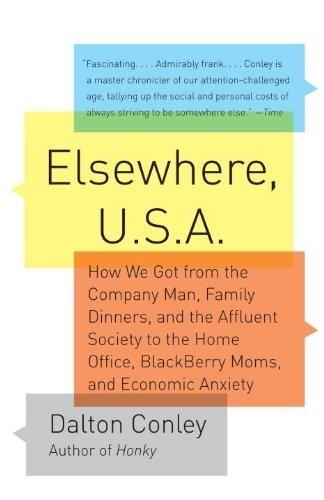
Elsewhere, U.S.A: How We Got From the Company Man, Family Dinners, and the Affluent Society to the Home Office, BlackBerry Moms,and Economic Anxiety
by
Dalton Conley
Published 27 Dec 2008
The worries of Maureen Dowd—repeated often in her columns— are simply wrong, I tried to say; most professional men don’t want to marry their secretaries—they want to marry a partner at the firm, too. True, the rates of college graduation for women have been going up as men’s have been declining over the past three decades, so an increasing number of women will have to marry down and become the breadwinners of the household— but wasn’t that part of the point of the feminist movement, after all? Dating norms and gender roles are highly plastic and will adapt to the new economic reality—if not for them, then for the group in college right now. They wouldn’t hear any of it. They knew what they knew from their own experiences and nobody could convince them otherwise. As I hope is implied by these two anecdotes that took place within a single twenty-four-hour period, a slow and steady—yet fundamental—shift has occurred over the last thirty years in the way we work and live.

Economic Gangsters: Corruption, Violence, and the Poverty of Nations
by
Raymond Fisman
and
Edward Miguel
Published 14 Apr 2008
The enfranchisement of the politically downtrodden— women, ethnic minorities, landless workers— has been a positive byproduct of many wars, including in the United States: women got the right to vote after World War I, the African-American civil rights movement took off after World War II, and the turmoil of the Vietnam War era brought new student voices into U.S. politics and helped launch the modern feminist movement. These kinds of political changes can lead indirectly to greater investment in what economists call “public 163 CH A PTER SEVEN goods”—investments like education and health care for previously marginalized groups—that benefit society as a whole. War itself can also spur technological innovation that boosts growth down the line.

Brave New World of Work
by
Ulrich Beck
Published 15 Jan 2000
Paid work, writes Elisabeth Beck-Gernsheim, has always been a ‘one-and-a-half person occupation’.37 The so-called normal work situation was tailored to men who had a wife in the background to take care of ‘everything else’ – children, meals, washing and cleaning, emotional equilibrium, everyday therapy, and so on. But the feminist movement and associated researchers, in particular, have always vehemently opposed the notion that a paid job is the only kind of work that has any social significance. Nevertheless, such an opening out of the monogamous work society towards a multi-activity society requires a lot of conditions to be fulfilled.

Waiting for Superman: How We Can Save America's Failing Public Schools
by
Participant Media
and
Karl Weber
Published 14 Jun 2010
I’m thinking of classics like Harvest of Shame, the CBS News documentary about the plight of migrant farmworkers, or films like my dad’s short features about the civil rights movement, A Time for Justice and Nine from Little Rock. It seems as though in those days, simply revealing to people the evils and injustices of the world could spark outrage and spur people to respond with action. The civil rights, environmental, antiwar, and feminist movements of that era were all fueled, in part, by the work of socially concerned filmmakers who educated a generation of Americans about the problems our society had been ignoring for too long. Today, I think, a lot has changed. Several generations have passed, and cameras show us everything now. With the advent of twenty-four-hour cable news, the spread of tabloid journalism in both print and visual forms, and the rise of the Internet, we’ve become accustomed to seeing anything and everything on screens in front of us, from the terror of 9/11 and the horrors of Abu Ghraib to the devastation caused by Hurricane Katrina.
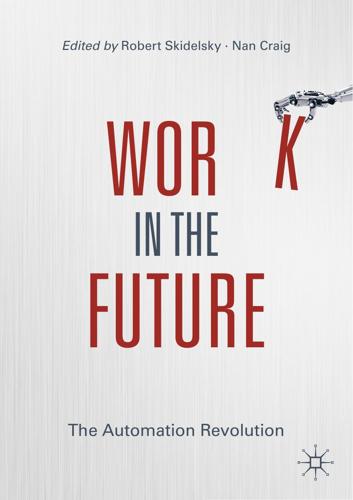
Work in the Future The Automation Revolution-Palgrave MacMillan (2019)
by
Robert Skidelsky Nan Craig
Published 15 Mar 2020
Trying to pave a better way for their children by urging them to high-flying performance often contributes to tensions between the partners and generations. Radical women and men have questioned bourgeois gender roles and the division of labour between the sexes since the French Revolution, and the feminist movements in the second half of the nineteenth century achieved improvements in women’s rights and mentality. It was not until the second feminist wave of the 1960s that legal equality between men and women in Western societies was implemented; in state socialist Eastern Europe equality was extended to the right to work, which did not allow women to be mere housewives.

Once the American Dream: Inner-Ring Suburbs of the Metropolitan United States
by
Bernadette Hanlon
Published 18 Dec 2009
These shows, and the suburbs they portrayed, promoted an era of domesticity and consumerism that preceded the counterculture of the civil 1A large body of work provides details on the politics and policies related to the development of suburbs after World War II. Excellent examples include Kenneth Jackson’s Crabgrass Frontier (1985), Rosalyn Baxandall and Elizabeth Ewen’s Picture Windows (2001), and Kevin Kruse and Thomas Sugrue’s The New Suburban History (2006). Decline Is a New Suburban Reality / 15 rights and feminist movements of the 1960s (Alves 2001). The housewife’s role was celebrated by new household appliances and gadgets, and television became the new medium by which to promote endless consumption and the model family structure. The suburbs became the cultural home of the white, middle-class family (Singleton 1973), reified as the embodiment of the American Dream.

Stories Are Weapons: Psychological Warfare and the American Mind
by
Annalee Newitz
Published 3 Jun 2024
This “homosexual as sex criminal” psyop also suggested that LGBT people were specifically a danger to children, which meant that upstanding parents should join the government effort to stamp them out. In the 1970s, right-wing activist Anita Bryant founded Save Our Children, one of the first organizations aimed at parents who wanted to keep LGBT people out of public life. Bryant, a former beauty queen and pop singer, was a charismatic influencer who had been radicalized by anti-feminist movement leader Phyllis Schlafly. Bryant said she founded Save Our Children because the district where she lived in Florida had granted LGBT people housing and employment protections.13 That meant it was going to be harder for employers to fire people for being gay. Sounding very much like Hoover, Bryant gave speeches about how gay people were “recruiting” children, and scoffed that asking for “gay rights” was the same as asking for “murderer rights.”14 California state representative John Briggs used a similar claim to justify legislation that would have prevented gay people from teaching in schools.

After the New Economy: The Binge . . . And the Hangover That Won't Go Away
by
Doug Henwood
Published 9 May 2005
Either the "prejudice" is rational—that is, white guys are more productive than their Others, and so deserve their wage premium—or the economy is insufficiently competitive, in which case deregulation is called for. In actual historical experience, rather than in the fantasy Uves of Chicago-school economists, prejudices have been overcome only through organized poHtical action, like the civil rights and feminist movements, with the assistance of government antidiscrimination and affirmative-action programs. There are many reasons the gaps persist. Broadly, they can be divided into what happens before individuals reach the job market (family and neighborhood background, education) and what happens once they get there (channeling into certain raced and gendered occupations—occupational crowding—and pay discrimination after the slots are fiUed).
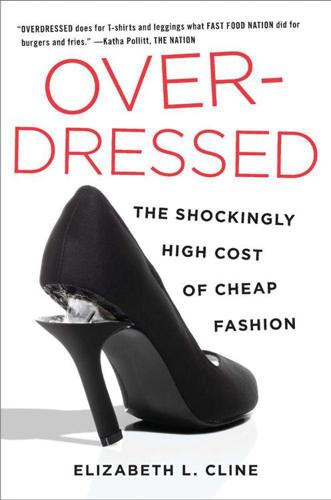
Overdressed: The Shockingly High Cost of Cheap Fashion
by
Elizabeth L. Cline
Published 13 Jun 2012
The ascent of large clothing companies, with their fat advertising budgets, did much to nudge Americans away from the sharp styles portrayed on the show. The show also documents the enormous cultural change that happened during this period as well. The social upheavals of the ’60s and especially the ’70s counterculture and feminist movements brought in streetwear and youth fashions, and Valerie Steele says that following high fashion became passé during this time. “Because of the whole hippie, antifashion revolution, people no longer were willing to be so dictated to,” she says. “They were much more choosy of which of the trends they wanted to follow.”

This Is Not Propaganda: Adventures in the War Against Reality
by
Peter Pomerantsev
Published 29 Jul 2019
When Hannity lands on a failing of other media – the way some channels spent so much airtime trying to detect direct, covert, criminal ‘collusion’ between Trump and the Kremlin, for instance – his response is not to try and restore impartiality, but to say it is impossible per se. The irony is that the rejection of objectivity pushed by the Kremlin and Fox News plays on ideas that originally championed ‘liberal’ causes which the Hannitys and Putins of this world oppose. ‘Objectivity is just male subjectivity,’ was a slogan of the feminist movement; the student protests of 1968 celebrated feelings as an antidote to corporate and bureaucratic rationality. But now Fox and the Kremlin exploit the same ideas: if reality is malleable, why can’t they introduce their own versions too? And if feelings are emancipatory, why can’t they invoke their own?

Pax Technica: How the Internet of Things May Set Us Free or Lock Us Up
by
Philip N. Howard
Published 27 Apr 2015
More young women bloggers wanted to contribute, and each year they had more readers. They also had some difficulties along the way. Some male bloggers wrote in support of the group’s efforts, while others disparaged it. Not all of the core writers had a steady income, and as a group they had trouble funding their collective work. They were accused of being an anti-Islamic feminist movement. They probably weren’t that, but they probably were digital activists. They were an organized public effort with clear grievances who targeted authority figures and initiated campaigns using device networks. The group managed to coordinate contributors for four years.5 Members still savor a particular victory, in which they successfully campaigned to pressure a father in Saudi Arabia to allow his daughter to return to Egypt because she wanted to pursue academic studies.

Au Contraire: Figuring Out the French
by
Gilles Asselin
and
Ruth Mastron
Published 1 Dec 2000
(Lacorne) Similarly, the gender gap does not receive much attention in France compared with the United States, since French people tend to identify themselves as members of the same society and nation before asserting their gender differences. Despite outstanding intellectual leadership from such people as Simone de Beauvoir (Le deuxième sexe 1949), feminist movements have received limited attention in France. Women are usually more concerned with who they are and with their femininity—what makes them womanly—than with demanding particular consideration because they are women. In a discussion of the differences in gender relations between France and the United States, Elisabeth Badinter (1995) noted that universalism in France is based on a refusal to define a citizen by his or her particularity.

Going Dark: The Secret Social Lives of Extremists
by
Julia Ebner
Published 20 Feb 2020
They ridicule movements like #MeToo and denounce women’s-rights activists as ‘feminazis’.6 After reading Angry White Men by Michael Kimmel I was convinced this was an almost exclusively male phenomenon. But the more time I spend immersing myself with the Red Pill Women, the more I understand that anti-feminist movements aren’t just made up of men. Female men’s-rights activists who want to return to traditional power roles and exaggerated notions of masculinity and femininity have adopted the rhetoric of the Manosphere. ‘Feminism is attacking the white male,’ the Russian-American alt-right activist Lana Lokteff claimed on the white supremacist Radio 3Fourteen.

Lurking: How a Person Became a User
by
Joanne McNeil
Published 25 Feb 2020
If I were a Malcolm Gladwell type of thinkfluencer, I might try to weave a grand unified theory around why women in the tech community seemed more likely than professional feminist commentators in New York to address intersectional concerns. Perhaps it has something to do with networks (TCP/IP and bell hooks, yeah, there’s a scholarly dissertation in there somewhere). Whatever it was, their organizing, rather than Sandberg’s failed feminist movement, is more broadly reflected in women’s media today. Many of the feminists in tech wrote op-eds and posted them for free on Medium, the hybrid platform-publisher-platisher-platypus free-for-all. Evan Williams, the founder of Medium, had previously founded Twitter and Blogger, but his new platform, which launched in 2012, was inscrutable.
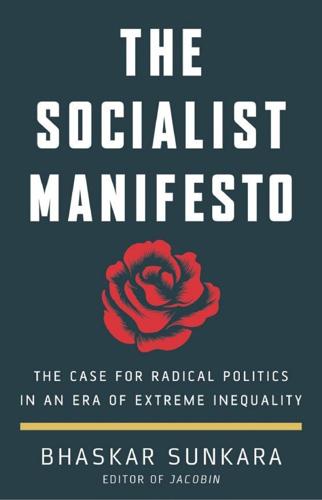
The Socialist Manifesto: The Case for Radical Politics in an Era of Extreme Inequality
by
Bhaskar Sunkara
Published 1 Feb 2019
Historically, socialists had acquitted themselves far better on the question of sexual equality than their rivals, as most agreed with August Bebel that there couldn’t be a just society without “equality of the sexes.” But radicals like Alexandra Kollontai and Vladimir Lenin who recognized the “double oppression” that women faced—both from capital and from sexism—thought the scope for reform was limited within capitalism. (In the early 1900s, Kollontai could dismiss the feminist movement itself as “poison.”) Socialists, in general, favored universal suffrage, employment, and other civil rights, but were less proactive in other struggles and were suspicious of cross-class feminist causes.23 Sweden showed just how much sexual oppression could be diminished within capitalism. Child allowances, family leave, child care, even the provision of school meals—all eased the burdens placed on women.

Au Contraire!: Figuring Out the French
by
Gilles Asselin
and
Ruth Mastron
Published 14 Apr 2001
(Lacorne) Similarly, the gender gap does not receive much attention in France compared with the United States, since French people tend to identify themselves as members of the same society and nation before asserting their gender differences. Despite outstanding intellectual leadership from such people as Simone de Beauvoir (Le deuxième sexe 1949), feminist movements have received limited attention in France. Women are usually more concerned with who they are and with their femininity—what makes them womanly—than with demanding particular consideration because they are women. In a discussion of the differences in gender relations between France and the United States, Elisabeth Badinter (1995) noted that universalism in France is based on a refusal to define a citizen by his or her particularity.

The Authoritarians
by
Robert Altemeyer
Published 2 Jan 2007
. ___ It’s a personal outlook that I developed with a few friends. ___ It’s a capitalist perspective, a capitalist theory on how society should operate. ___ It’s a socialist perspective, a socialist theory on how society should operate. ___ It’s a scientific outlook. Science gives me my most basic understanding of things. ___ It’s the feminist movement; feminism gives me my most basic understanding of things. ___ It’s the environmental movement; environmentalism gives me my most basic understanding of things. ___ It’s some other “special cause” movement, such as “animal rights” or “right to die.” 125 All right, if you’ve decided what makes sense out of the world for you, what you use most to comprehend the hurly-burly of life, then to what extent are the following things true for you?

You Are Not So Smart
by
David McRaney
Published 20 Sep 2011
She is considered outspoken and very bright. She majored in philosophy in college. As a student, she was deeply concerned with discrimination and social issues. She participated in several demonstrations. Is it more likely Linda is a bank teller or that she is a bank teller and is active in the feminist movement? Most people who read the above description pick the second answer, although it is statistically more likely she is a bank teller. There are more bank tellers in the world than bank tellers who are feminists, no matter what sort of background they may have. The conjunction fallacy builds on your representativeness heuristic.
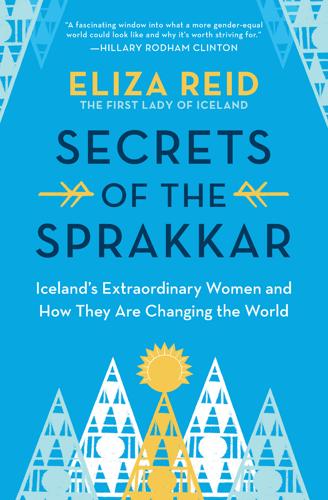
Secrets of the Sprakkar
by
Eliza Reid
Published 15 Jul 2021
Advocacy led by happily unabashed politicians (among others), young women who refute slut shaming, and all those who celebrate control over their own bodies has helped to reinforce the ongoing fight for equality among a specific marginalized group within Iceland: the country’s queer community. The Icelandic word that envelops the LGBTQIA+ community is hinsegin (literally “the other way around”), an inclusive definition that encompasses all who identify as queer. “I think the feminist movement goes hand in hand with the lesbian movement. After all, there is even more reason to push for gender equality if you’re going to be with another woman!” Eva María Thórarinsdóttir Lange told me from the comfort of her elegantly designed central Reykjavík apartment, panoramic views of the capital surrounding us on all sides of the sixth-floor penthouse.

Who Are We—And Should It Matter in the 21st Century?
by
Gary Younge
Published 27 Jun 2011
In Freakonomics, Steven Levitt proved that people with names that were identifiably African-American had a worse life outcome than those with identifiably white names, although this was concluded to be an indicator of broader societal and historical issues rather than a cause of them. The notion that the “personal is the political” gained currency during the sixties and became a mantra, particularly for the feminist movement. There was good reason for this. When cast as “personal,” issues such as abortion, domestic violence, childcare responsibilities and housework were effectively excluded from broader political discussion, leaving women isolated in their attempts to seek equality, safety and greater freedom. By reframing them as political, feminists opened up fresh terrain, which would also prove particularly fertile for environmentalists.
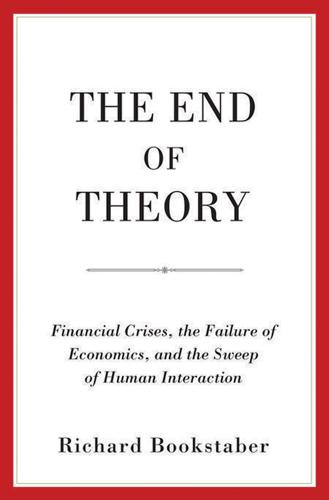
The End of Theory: Financial Crises, the Failure of Economics, and the Sweep of Human Interaction
by
Richard Bookstaber
Published 1 May 2017
A classic example of the problems that come from assuming away context is shown by this question posed by Tversky and Kahneman (1983), and critiqued by Gigerenzer (2008): Linda is thirty-one years old, single, outspoken, and very bright. She majored in philosophy. As a student she was deeply concerned with issues of discrimination and social justice and also participated in anti-nuclear demonstrations. Which of two alternatives is more probable? A. Linda is a bank teller. B. Linda is a bank teller and is active in the feminist movement. The vast majority of U.S. college students who were given this question picked B, thus scoring an F for logical thinking. But consider the context. People are told in detail about Linda, and everything points to her being a feminist. In the real world, this provides the context for any follow up.

The Great Divergence: America's Growing Inequality Crisis and What We Can Do About It
by
Timothy Noah
Published 23 Apr 2012
Societal expectations about realizing girls’ academic and occupational potential were dismally low in the 1950s. “Women are not expected to grow up to find out who they are, to choose their human identity,” Betty Friedan wrote in her 1963 book The Feminine Mystique. “Anatomy is woman’s destiny.” Friedan’s book and the feminist movement that gradually came into being—with a strong assist by the Food and Drug Administration’s 1960 approval of the first birth-control pill—altered that destiny. Although growing percentages of women (even married women) joined the workforce throughout the twentieth century, as recently as 1970 most women still didn’t work; their participation in the civilian labor force was 43 percent.

The Ecotechnic Future: Envisioning a Post-Peak World
by
John Michael Greer
Published 30 Sep 2009
The astonishing thing is that the “Playboy man” and the “Cosmo girl,” those airbrushed icons of mindless consumer culture, were both considered to be liberated and liberating in their day. Home The household economy, or what was left of it, was one of the casualties of the process that made these dubious figures popular. The feminist movement might have posed hard questions about the relative value assigned to household and market economies, and indeed some of the deeper minds within the movement made forays in this direction, but their ideas found few listeners. Instead, many feminists — and, eventually, many American women — simply accepted the relative values their culture assigned to the two economies, and aspired to the one they were taught to consider more valuable.

Noam Chomsky: A Life of Dissent
by
Robert F. Barsky
Published 2 Feb 1997
There have, as well, been complaints of traditionalism in the MIT linguistics department, and these led to strife in 1983. A student who was present in the department at that time says, "Chomsky thinks he is a feminist, butat hearthe's an old-fashioned patriarch. Of course, he's a very good person. He just has never really understood what the feminist movement is about" (qtd. in Parini 39). Chomsky disagrees: The students have been pressuring for years for more women faculty. They are pushing an open door, however. It's long been a faculty initiative, along with efforts to bring in minority faculty. When push comes to shove, [these students] make the same recommendations faculty has.

Duped: Double Lives, False Identities, and the Con Man I Almost Married
by
Abby Ellin
Published 15 Jan 2019
“They’ve always made ends meet either through prostitution or shoplifting,” she said. “There’s no chromosome that’s the honesty chromosome. I want there to be a Bernice Madoff!”34 Paxton might get her wish. Back in 1975, criminologist Freda Adler forecast that women’s crime rates would soar as a result of the feminist movement. When their opportunities increased, so would their ability to commit crime, a topic she wrote about in her groundbreaking book Sisters in Crime: The Rise of the Female Criminal.35 One thing that’s clear is that the world is much more forgiving of male liars than female ones. Maybe it’s because we expect more from women—they’re mothers, caregivers.

Everything's Trash, but It's Okay
by
Phoebe Robinson
Published 15 Oct 2018
All kidding aside, just like the New Year’s resolution makers and my fellow fickle exercisers, I got hyped as hell about the Obama presidency and rode the wave of happiness right into the 2016 election, believing that since we knocked down one barrier, our work was done, and like dominos, other barriers were going to come crashing down. I think a lot of feminists as well as the feminist movement itself felt that way. After we make some progress (like director Ava DuVernay becoming the first woman of color in charge of a $100 million movie budget), we sometimes get excited as if the everyday microaggressions women face are now a thing of the past. And even if there is more structural change going on (i.e., the passing of Title IX in 1972, which is a law that states no person can be discriminated against on the basis of their sex at an educational program getting federal financial assistance), we still have a long way to go because it’s clear that in plenty of instances, the #YesAllWomen doesn’t apply to all women, even as we’re in the age of #MeToo and #TimesUp, which are currently dragging the patriarchy out the door as it’s kicking and screaming to stay in the past.

Lift: Fitness Culture, From Naked Greeks and Acrobats to Jazzercise and Ninja Warriors
by
Daniel Kunitz
Published 4 Jul 2016
However, men have always had access to exercise; we’ve been pushing it for decades, even centuries, without notable changes in the general population. Instead, the catalyzing of the mass interest in fitness had to await a woman. And that woman was Bonnie Prudden, whose endeavors finally ignited change only toward the end of the sixties, in the context of the burgeoning feminist movement. Born the same year as LaLanne, 1914, Ruth Alice Prudden was raised in a prosperous family in Mount Vernon, New York. A relatively privileged upbringing marks her as quite different from the majority of fitness promoters who preceded her, for her background allowed Prudden to speak to, and for, the establishment, despite remaining unconventional in many respects throughout her life.
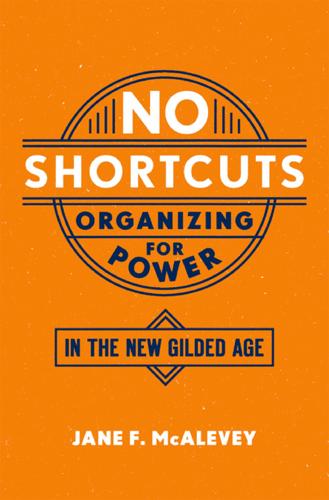
No Shortcuts: Organizing for Power in the New Gilded Age
by
Jane F. McAlevey
Published 14 Apr 2016
He declared that there are leaders and there are organizers, and that the two are different. The organizer is a behind-the-scenes individual who is not a leader, has nothing to do with decisions or decision-making, and must come from outside the community. (They also had to be men: Alinsky didn’t believe women were tough enough, even during the era of the feminist movement.) The leader, on the other hand, must come from the base constituency and “make all the decisions.” This is a good narrative, but disingenuous: The organizers in the Alinsky model make many key decisions. A lot of good ink has been devoted to the problems with Alinsky’s view of the “outside organizer,”42 including in Bardacke’s Trampling Out the Vintage.
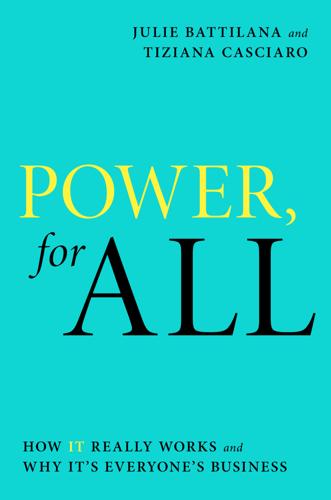
Power, for All: How It Really Works and Why It's Everyone's Business
by
Julie Battilana
and
Tiziana Casciaro
Published 30 Aug 2021
In 1793, de Gouges was sentenced to death by the Revolutionary Tribunal and executed, but her words did not die with her. They influenced and inspired women to fight for equal rights, in France and beyond. Her innovation contributed to the development of the counter-narrative that multiple waves of feminist movements refined and spread in the decades and centuries that followed. Social innovations come in a variety of forms: They may be ideas, products, services, programs, processes, or laws and policies. But whatever the form, innovators must provide a viable pathway toward addressing the problem at hand and redefining the status quo.
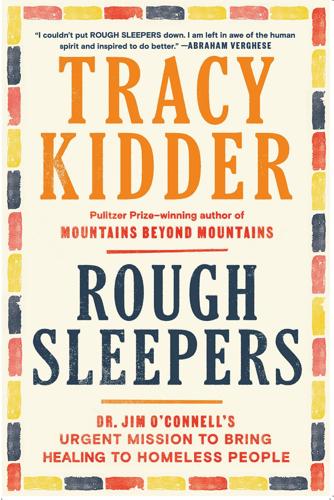
Rough Sleepers: Dr. Jim O'Connell's Urgent Mission to Bring Healing to Homeless People
by
Tracy Kidder
Published 17 Jan 2023
He could have been entering a saloon in a movie, unwarned and unarmed. In the world of nursing, this clinic inside the Pine Street Inn shelter was a significant organization, the country’s first clinic run entirely by nurses and independent of other medical institutions. It was in part the byproduct of a change in nursing that had begun with the feminist movement of the 1960s. One keeper of that history is a retired nurse and nurse manager named Barbara Blakeney. She had organized and run one of Boston’s homeless shelters. Later, she’d served as president of the American Nurses Association, which represents the interests of America’s four million registered nurses.
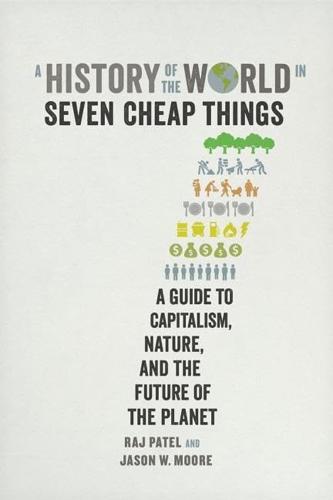
A History of the World in Seven Cheap Things: A Guide to Capitalism, Nature, and the Future of the Planet
by
Raj Patel
and
Jason W. Moore
Published 16 Oct 2017
In the settler colony of the United States, the Movement for Black Lives has policy briefs on everything from fossil fuel to community finance to militarization to—vitally—reparations.9 The disability rights movement has offered a critique not just of built public space but of race, gender, and class.10 Indigenous women in the Americas, whose bodies have been on the front line of capitalism’s ecology for the better part of six centuries, are calling attention to and making visible that violence.11 Idle No More protests in Canada and the protests at Standing Rock in North Dakota are committed to decolonization and confronting the coloniality of power. The Argentine socialist feminist movement Pan y Rosas (Bread and roses) is organizing against femicide. And proposals for a climate change exit strategy are proving points of organization and convergence across a range of thinkers and activists who are considering the dramatic redistribution of resources that a movement beyond capitalism will require.12 At capitalism’s frontiers, communities not only experience the multiple fronts of accumulation but are both resisting and developing complex and systemic responses.13 John Jordan, an activist and cofounder of the United Kingdom’s Reclaim the Streets movement, argues that resistance and alternatives are “the twin strands of the DNA of social change.”14 That change will need resources and space to develop.
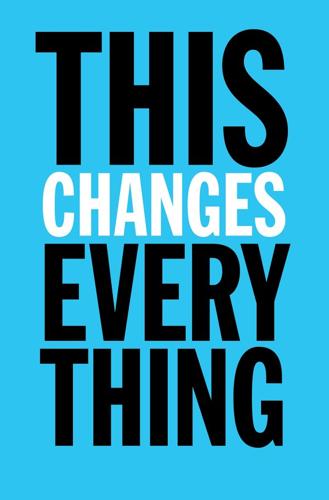
This Changes Everything: Capitalism vs. The Climate
by
Naomi Klein
Published 15 Sep 2014
The discount education given Negroes will in the future have to be purchased at full price if quality education is to be realized. Jobs are harder and costlier to create than voting rolls. The eradication of slums housing millions is complex far beyond integrating buses and lunch counters.”8 And though often forgotten, the more radical wing of the second-wave feminist movement also argued for fundamental challenges to the free market economic order. It wanted women not only to get equal pay for equal work in traditional jobs but to have their work in the home caring for children and the elderly recognized and compensated as a massive unacknowledged market subsidy—essentially a demand for wealth redistribution on a scale greater than the New Deal.
…
, 206, 310 Earth Mother/Mother Earth concept, 419, 423–24, 443–44 earthquakes, fracking and, 329 East Bay Tea Party, 38 Eastern Bloc, 75 Eckersley, Robyn, 77 Eckhart, Michael T., 67 EcoEquity, 417–18 ecological amnesia, 3–4 Ecological Economics, 185–86 Ecological Economics (Daly and Farley), 173 economic disruption: extractive industries and, 316, 386 minimizing of, 12 economic geologists, 46 economic growth, 21, 129–30, 186 atmospheric limits vs., 86–89 in capitalism, 89 climate change denial and, 3, 45–46, 59–60 corporate deregulation and, 19 dirty model of, 82 limits on, 185–86 orthodoxy of, 81, 94, 178 economic justice, 10, 59, 91, 94, 157 see also climate debt economy: climate action and, 21, 90, 124–26, 155, 252, 453 decentralized, 158 elite control over, 18 fracking and, 94 fossil fuel, 23, 45–46, 121, 173, 456 local, 7, 68–70, 71, 76, 85–86 planned, 94 post-growth, 178 resource-intensive, 21 wage and price controls in, 125 ecosystems: fertility cycle of, 438–39, 446–48 loss of, 13 restoration of, 93, 127, 444 ectopic pregnancy, 425 Ecuador, 13, 180, 197, 220, 377 Chevron lawsuit of, 309, 378 climate debt and, 408–9 constitutional rights of nature in, 443–44 EDF Energy, 149 Edmonton, Canada, 302 Edwards, Murray, 281 “effervescence of rebellion,” 465 Egypt, 158 El Chichón eruption (1982), 274 Eldorado Gold, Skouries forest project of, 293–94, 296–98, 303, 314, 342, 347, 445 elections: of 1992, 83 of 2008, 149 of 2012, 149 electricity grids, 90, 122, 133 electronic waste, 91 Ellis-Lamkins, Phaedra, 92 Elsipogtog First Nation, 299, 370, 373, 374 Elwha River, 374–75 Elysium, 59 Emerson, Ralph Waldo, 174 emission credits, 219–20 emission reduction, 16, 18–19, 31, 55, 73, 79, 85, 88, 90, 108–9, 127, 144n, 146, 154, 157–58, 213, 218, 283, 355 failure of, 256, 276 historical responsibility vs. capacity to contribute to, 417–18 voluntary, 232 see also climate treaty negotiations empathy, 46–54, 62–63 Enbridge: Canadian Security Intelligence Service as lobbyist for, 362 Michigan pipeline rupture of, 331–32, 338 profit-over-safety culture of, 331, 333 see also Northern Gateway pipeline Enbridge NB, 362 endocrine disruptors, 439 energy, public ownership of, 7, 284 energy conservation, 116–18 Energy Department, U.S., 102, 214, 247, 282 energy efficiency, 127 energy nationalization, 130, 454 energy plants, “combined-cycle,” 129 Energy Policy, 101, 102 energy sources, zero-carbon, 18 EnergyWire, 332 Engelfried, Nick, 314 Enhanced Oil Recovery (EOR), 247–48 Enlightenment, 159, 178 Environics, 36 Environment Agency (EA), U.K., 106–7 Environmental Action, 213 Environmental Coalition for NAFTA, 84 Environmental Defense Fund (EDF), 84, 191, 198, 201, 233n, 235–36, 257 carbon trading supported by, 218, 226–29 fracking supported by, 215–17, 235n, 355–56 pro-business makeover of, 207–10, 233 environmental impact assessments, 203 environmentalism: acceptable risk and, 335 astronaut’s-eye view adopted by, 286–87, 296 command and control, 204 grassroots, 305–10; see also Big Green; Blockadia Keystone pipeline and revival of, 303 top-down, failures of, 295 “environmentalism of the poor,” 202 environmental justice, 92, 155 see also climate debt environmental movement, 157, 197 cap-and-trade and, 229 golden age of environmental law in, 201–4 green consumerism and, 211–13 insider strategy of, 203–4 NAFTA supported by, 83–85 political timidity in, 184–85, 186–87 privileged origins of, 183, 201, 211–12 pro-business ideology in, 207–11, 213 radicalism in, 183–86, 201–3, 206–7 in Reagan era and following, 203–11 schisms in, 206–7 singlemindedness of, 153 see also Big Green Environmental Protection Agency (EPA), 48, 118, 227, 328 Northern Cheyenne and, 390, 393 Environmental Rights Action (Nigeria), 309 Environment Canada, 325, 326–37 ethane, 328 eucalyptus, 239 eugenics, taboo against, 278 Europe: emissions from, 40, 411 program cuts in, 110 “squares movement” in, 464 wealth in, 114 European Community, environmental law in, 202 European Parliament, 91n, 114 European Transport Workers Federation, 127 European Union, 218 airline taxes considered by, 249 Emissions Trading System (ETS) of, 219, 225, 226 fuel quality standards of, 71, 248–49 renewable energy in, 138 U.S. oil and gas exports restriction and, 71 WTO challenges brought against, 65, 70 WTO challenges brought by, 68–69 executive pay, 111, 112 extinctions, 14 extractive industries, 79, 121, 133, 141, 181, 213 alienation of onetime friends by, 313 Big Green and, 191–201 billionaires’ investments in, 235–37 climate change deniers funded by, 44–45, 149 depletion of conventional reserves in, 310 divestment movement and, 206, 353–58, 365, 401, 402–3 donations to environmental groups by, 196–97, 215–16 early victories against, 348–53 ecologically and socially responsible, 447 as economic disrupters, 316, 386 economic and political power of, 149, 151, 377–80, 384–87, 400, 403, 461 emissions regulations blocked by, 200 extreme projects of, 295, 303, 304, 310, 311, 315–34, 446 free trade agreements and, 358–60 geoengineering and, 281–84 government collusion with, 297–99, 303, 306–7, 308, 360, 361–66, 378–80 grassroots opposition to, 305–10; see also Blockadia; climate movement growth as measure of, 129–30 high risk in, 324–25, 331 Indigenous land rights and, see Indigenous peoples, land rights of infrastructures of, 315–24 lawsuits against, 112, 309, 368, 371–72, 378–80, 384, 386 lax regulation of, 129, 330–31, 333 lobbying by, 149–50 local ecology ignored by, 295 nationalization of, 130, 454 new technologies developed by, 145–46, 253, 310 polluter pays principle and, 110–19, 202–3 profit-seeking imperative of, 111, 126, 129, 148, 253, 330–31 progress blocked by, 110–11, 149 publicly owned, 130 public mistrust of, 330, 332, 333, 334 reserve-replacement ratio of, 146–47 sacrifice zones in, 172–73, 310–15 self-preservation instinct of, 149, 253 shareholders of, 111, 112, 128, 129, 146–47, 148 spills and accidents in, 330–34; see also specific accidents Steyer’s walking away from, 235 subsidies for, 70, 115, 118, 127, 418 tobacco companies compared to, 355 transient culture of, 343–44 water requirements of, 346 see also fossil fuels; specific industries and operations extractivism, 161–87, 442, 443, 459, 460–61 colonialism and, 169–70 defined, 169 postcolonial, 179–82 progressive, 181–82 sustainability and, 447 Exxon, 145, 147 ExxonMobil, 44–45, 111, 113, 150, 192, 196, 234, 236, 238, 282, 283, 314 Exxon Valdez oil spill, 337–39, 426 Eyre, Nick, 90 factories: green credits for, 219 retrofitting of, 122–23 fact resistance, 37 fairness: austerity and, 117–19 individual vs. corporate, 116–18 see also climate debt famine, 270, 272, 273, 274 Fanon, Frantz, 459 Farallon Capital Management, 234–35 Farley, Joshua, 173 farming, farmers, see agriculture Farrell, John, 99–100 FedEx, 51, 208, 210 feedback loops, 14 feed-in tariffs, 67, 131, 133 Feely, Richard, 434 feminist movement, 177, 453–54 Fenberg, Steve, 98–99 Ferguson, Brian, 349 Ferris, Deeohn, 314 fertility cycle, of ecosystems, 438–39, 446–48 fertility industry, 421–22 Feygina, Irina, 57 Figueres, Christiana, 200–201 financial crisis of 2008, 5–6, 9, 39, 44, 80, 88, 110, 120–26, 151, 158, 223, 392 financial markets, instability of, 19 financial transaction tax, 114 Finkenthal, Daniel, 207 firefighting, 72, 108, 109 First National People of Color Environmental Leadership Summit, 205 First Nations: in anti-pipeline campaigns, 340, 345, 365–66 government dismissal of pollution claims by, 326 water supplies of, 384 see also Indigenous peoples; specific peoples fisheries collapses, 14 Flannery, Tim, 176 flaring, of natural gas, 219, 305–6 Fleming, James, 263, 270 floods, 14, 72 austerity budgets and, 106–7 business opportunities in, 9 Florida, 330 Flounder Pounder, 425, 427 Foley, Jonathan, 58 Foner, Eric, 456 Food & Water Watch, 197, 356 food, 10 declining stocks of, 13 prices of, 9, 239n sovereignty, 135–36 see also agriculture; famine food chains, aquatic, 259 food miles, 78 Ford, 67 Ford Foundation, 198 Forest Ethics, 248 forests carbon sequestering by, 304 clear-cutting of, 296, 304, 310 privatization of, 8 Forster, E.

Capitalism and Its Critics: A History: From the Industrial Revolution to AI
by
John Cassidy
Published 12 May 2025
Connecticut, the Supreme Court asserted a “right to marital privacy” that prohibited the government from restricting the use of contraceptives. One immediate question was whether these new civil rights laws would be effectively enforced. In creating NOW, Friedan and other feminists were motivated in large part by the desire to make sure that they were. The Second Wave feminist movement had some major successes. In 1973 the Supreme Court issued its ruling in the Roe v. Wade case, which greatly expanded access to abortion. A year later Congress passed the Women’s Educational Equity Act, which was designed to remove barriers facing women at all levels of education. Under pressure from NOW and other women’s groups, many states passed laws enacting no-fault divorce, which made it possible for women to leave marriages of their own accord.
…
Wendy Schuman, “Brooklyn Women Seek Wages for Housework,” The New York Times, January 11, 1976; reprinted in Federici and Austin, Wages for Housework, 172. 34. “Wages for Housework,” Life (April 1976), https://maydayrooms.org/wp-content/uploads/2014/06/WfHw_SF_LifeMagazine1976.jpg. 35. Andrews, “Interview with Silvia Federici.” 36. Louise Toupin, Wages for Housework: A History of an International Feminist Movement, 1972–1977 (London: Pluto Press, 2018), 246. 37. Federici and Austin, Wages for Housework, 24. 38. “Feminist Generations: A Conversation with Selma James, Margaret Prescod and Chanda Prescod-Weinstein,” Women and Gender Studies Institute Research Seminar, January 19, 2022, https://wgsi.utoronto.ca/wp-content/uploads/2022/01/feminist-generations-closed-captions-converted.pdf. 39.

Carjacked: The Culture of the Automobile and Its Effect on Our Lives
by
Catherine Lutz
and
Anne Lutz Fernandez
Published 5 Jan 2010
Of course, some women know a lot about cars and, likewise, some men are happy to be the family chauffeur. Our ideas about gender and gender roles, though, can add additional layers of pleasure, or at least compensation, to driving. Wherever diverse beliefs about gender may stand in the wake of the feminist movement, men and women continue to drive cars differently, to different destinations, and to enjoy them differently. While women are now the main decision makers in a bit more than half of all car buys,7 and they drive in patterns and amounts that are 22 Carjacked converging with those of men,8 the car remains a more important part of men’s lives than women’s.

On Writing Well (30th Anniversary Edition)
by
William Zinsser
Published 1 Jan 1976
Study good nonfiction writers to see how they do it. You’ll find that almost all of them think in paragraph units, not in sentence units. Each paragraph has its own integrity of content and structure. SEXISM. One of the most vexing new questions for writers is what to do about sexist language, especially the “he-she” pronoun. The feminist movement helpfully revealed how much sexism lurks in our language, not only in the offensive “he” but in the hundreds of words that carry an invidious meaning or some overtone of judgment. They are words that patronize (“gal”), or that imply second-class status (“poetess”), or a second-class role (“housewife”), or a certain kind of empty-headedness (“the girls”), or that demean the ability of a woman to do a certain kind of job (“lady lawyer”), or that are deliberately prurient (“divorcée,” “coed,” “blonde”) and are seldom applied to men.

Singularity Rising: Surviving and Thriving in a Smarter, Richer, and More Dangerous World
by
James D. Miller
Published 14 Jun 2012
As a student, she was deeply concerned with issues of discrimination and social justice and also participated in antinuclear demonstrations.342 The subjects were then asked to rank a set of statements by the likelihood of their being true. Two such statements were: 1.Linda is a bank teller. 2.Linda is a bank teller and is active in the feminist movement. Many of the subjects ranked (2) ahead of (1), even though this is logically impossible. It must be more likely that Linda is a bank teller than that she is a bank teller and is also something else. Saying that (2) is more probable than (1) is analogous to claiming that there’s a greater chance that Linda has a son than that she has a child.
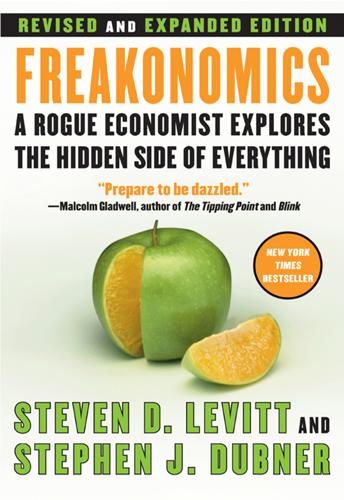
Freakonomics: A Rogue Economist Explores the Hidden Side of Everything
by
Steven D. Levitt
and
Stephen J. Dubner
Published 11 Apr 2005
An analysis of more than 160 episodes reveals that black contestants, in both the early and late rounds of the game, are eliminated at a rate commensurate with their trivia-answering abilities. The same is true for female contestants. In a way, neither of these findings is so surprising. Two of the most potent social campaigns of the past half-century were the civil rights movement and the feminist movement, which demonized discrimination against blacks and women, respectively. So perhaps, you say hopefully, discrimination was practically eradicated during the twentieth century, like polio. Or more likely, it has become so unfashionable to discriminate against certain groups that all but the most insensitive people take pains to at least appear fair-minded, at least in public.

Also Human: The Inner Lives of Doctors
by
Caroline Elton
Published 1 Mar 2018
Up until the early 1970s this was just how things were done, and questions weren’t raised in the literature. In a paternalistic vein, arguments were made that women’s modesty was protected by examining them when they were unconscious. Then, with the steady increase in the number of female medical students coupled with the growth of the feminist movement, this time-honored way of teaching students began to be called into question. The central issue was that of consent; while the women would have consented to a surgical procedure, and might even have agreed to have a medical student present in the operating room, they were never asked to give explicit consent for medical students to undertake an intimate examination of their body that had nothing whatsoever to do with their treatment.
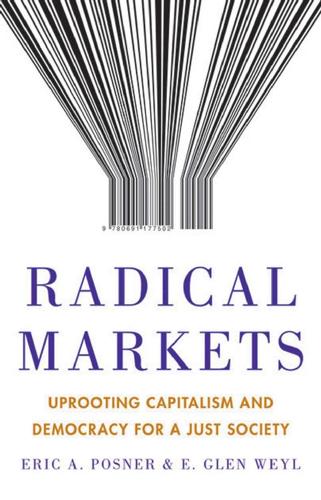
Radical Markets: Uprooting Capitalism and Democracy for a Just Society
by
Eric Posner
and
E. Weyl
Published 14 May 2018
Those who had led the second generation of reforms coalesced into the modern political Left, known as liberals in the United States and social democrats in Europe. They prioritized equality within nations and opening of markets to domestic minorities and women, groups previously excluded from market exchange. During the 1960s and 1970s they won victories in the US Civil Rights movement and the feminist movement throughout the developed world. Those liberals who prioritized free markets and efficiency over equality formed the modern political “Right” and came to be known as libertarians in the United States and neoliberals in Europe. Beyond fighting government intervention, the Right also played a crucial role in pushing for more open markets for goods and capital internationally.

The Government of No One: The Theory and Practice of Anarchism
by
Ruth Kinna
Published 31 Jul 2019
To borrow Saul Alinsky’s framing, their concern was a general one about ‘the question of means and ends’ which arises whenever ‘we think about social change’, not the specific one about the relationship of this particular means to this particular end.92 The conclusion they drew from their critique of the suffrage campaigns was that direct action is anarchist only when it is treated as a principle, that is, when it facilitates and prefigures non-dominating practice. To return to the Ku Klux Klan, grass-roots supremacist white militias are direct actionist, but their actions are reactive not anarchist or prefigurative, because they entrench existing cultures of domination. As feminists, anarchist women borrow insights from feminist movement activists to shine a light on the patriarchal practices which are ingrained in anarchist movement politics. The response has not always been entirely positive. As Louise Michel wrote, ‘even the socialist Proudhon’ said that women ‘can only be housewives and courtesans’.93 Nevertheless, the injection of feminism into anarchism illuminates the dynamic relationship between anarchist and anarchistic politics.

IRL: Finding Realness, Meaning, and Belonging in Our Digital Lives
by
Chris Stedman
Published 19 Oct 2020
That rings true for my queerness, too—the compartmentalizing I learned at a young age has helped me navigate the world’s demand for digital coherence and consistency. But perhaps our inelegant attempts to be human online present a chance to reframe these demands and reapproach them as amateurs, like the drag performers who reframe and reapproach the demands of gender. As Zeynep Tufekci notes in Twitter and Tear Gas, the feminist movement of the 1960s brought attention to the fact that “the personal is political.” Today, Tufekci points out, social media platforms “mix people’s personal lives with their political trajectories.” As we do more and more of our political and civic work online, and more and more of our socializing online, these things intermingle.

Utopia Is Creepy: And Other Provocations
by
Nicholas Carr
Published 5 Sep 2016
It’s worth remembering that Gilligan’s Island originally ran on television from 1964 through 1967, a period noteworthy not for its social passivity but for its social activism. These were years of great cultural and artistic exploration and inventiveness, and they were also years of widespread protest, when people organized into very large—and very real—groups within the civil rights movement, the antiwar movement, the feminist movement, the black power movement, the psychedelic movement, and all sorts of other movements. People weren’t in their basements; they were in the streets. If everyone was so enervated by Gilligan’s Island and other televised piffle, how exactly do you explain 1966 or 1967 or 1968? The answer is: You don’t.
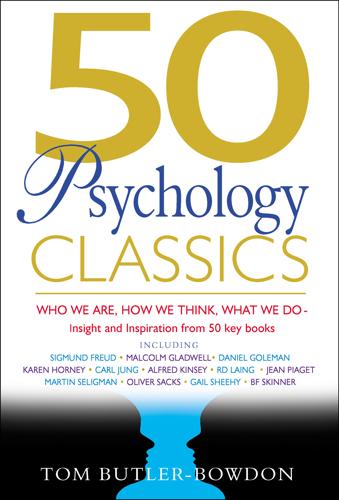
50 Psychology Classics
by
Tom Butler-Bowdon
Published 14 Oct 2007
Thayer The Origin of Everyday Moods (p 284) * * * CHAPTER 8 Louann Brizendine As a medical student, Louann Brizendine was aware of conclusive studies done around the world showing that women suffer from depression at a ratio of 2:1 compared to men. Going through college at the peak of the feminist movement, along with many others she believed this was the result of the “patriarchal oppression of women.” But it came to her notice that, up until puberty, depression rates between boys and girls are the same. Could the hormonal changes to girls in their early teenage years, she wondered, make them suddenly more prone to getting depressed?
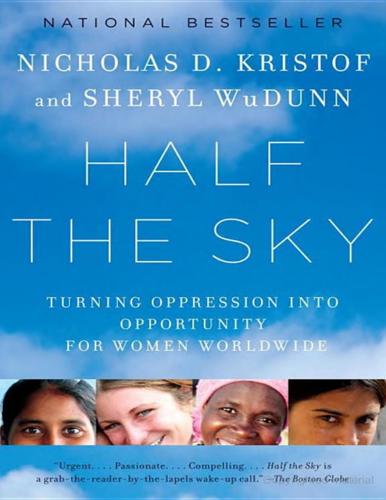
Half the Sky: Turning Oppression Into Opportunity for Women Worldwide
by
Nicholas D. Kristof
and
Sheryl Wudunn
Published 7 Sep 2008
There is a broad scholarly literature about social movements, and experts have noted that one of the most striking changes in recent years has been a surge in female leadership. The civil rights and anti–Vietnam War movements may have been the last such major efforts in the United States that were overwhelmingly male in their top ranks. Since then, women have led such diverse efforts as Mothers Against Drunk Driving and the pro- and anti-feminist movements. While women still lag in political, corporate, and government positions, they dominate the civil sector in much of the world. In the United States, women now lead Harvard, Princeton, and MIT, as well as the Ford Foundation and the Rockefeller Foundation. The groups in the National Council of Women’s Organizations represent 10 million women.

Priceless: The Myth of Fair Value (And How to Take Advantage of It)
by
William Poundstone
Published 1 Jan 2010
As a student, she was deeply concerned with issues of discrimination and social justice, and also participated in anti-nuclear demonstrations. In a study at the University of British Columbia, 142 undergraduates who read this capsule description were asked which of the following was more likely to be true: Linda is a bank teller. Linda is a bank teller and is active in the feminist movement. Eight-five percent rated the second statement more likely than the first. That’s ridiculous. The only way Linda can be a bank teller and a feminist is if she’s also a bank teller. At the risk of beating a dead horse, I’ll draw you a diagram (opposite). Apparently, in judging how likely it is that Linda is a bank teller, people look at how well the information we have about Linda fits our preconceived notion of bank tellers.
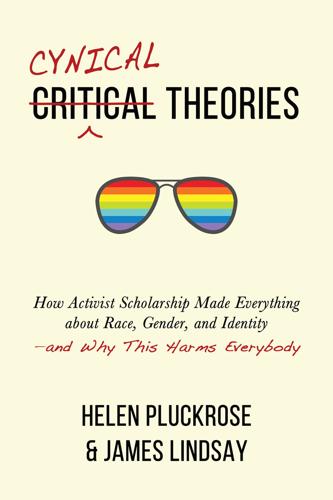
Cynical Theories: How Activist Scholarship Made Everything About Race, Gender, and Identity―and Why This Harms Everybody
by
Helen Pluckrose
and
James A. Lindsay
Published 14 Jul 2020
One startling omission in this list of intersectional identities is any meaningful mention of economic class—they sometimes raise the point but almost never substantively. Traditional Marxists could be criticized by focusing so single-mindedly on economic class as the key factor in society that they sometimes overlooked or underestimated other axes of oppression, notably those against women and sexual minorities. The feminist movement starting in the early 1970s, and the gay rights movement shortly thereafter, provided useful correctives to this sole focus on class. Nowadays, however, economic class is barely mentioned unless combined “intersectionally” with some other form of marginalized identity. It is therefore no surprise that many working-class and poor people often feel profoundly alienated from today’s left—Marxists rightly identify it as having adopted very bourgeois concerns.

Ask Me About My Uterus: A Quest to Make Doctors Believe in Women's Pain
by
Abby Norman
Published 6 Mar 2018
I’m certain that women were suffering from endometriosis in the 1950s and 1960s—but I suspect that many of them were self-medicating, and “grinning and bearing it” when they weren’t, as was the expectation of their husbands, families, and doctors. From the 1960s to the mid-1970s, there was a pretty steep decline in references to endometriosis—which seems peculiar to me, because it was the height of the feminist movement. From the 1980s to the present day, however, there has been a marked and steady upward trend, probably aided in part by the ubiquity of the Internet. As Carpan pointed out in her review, though, just seeing the word more doesn’t necessarily correlate to a greater understanding of the disease.

The Targeter: My Life in the CIA, Hunting Terrorists and Challenging the White House
by
Nada Bakos
Published 3 Jun 2019
Thanks to that drive—and because in 1992, I graduated right into the tail end of a recession—Dr. Kanth suggested that I continue my studies at one of his previous teaching locations: Jawaharlal Nehru University, or JNU, in New Delhi, India. With his help, I enrolled in one of JNU’s yearlong graduate programs, focusing on a burgeoning agricultural-feminist movement flourishing in the northern part of the country. Shane, who was still settling on what his future would hold for a career, decided to join me on this adventure. At the time, my international travel experience was limited to one college spring break in Mexico and a few trips to Canada, so in retrospect, I’m really not sure how I expected things to go.

The Sense of Style: The Thinking Person's Guide to Writing in the 21st Century
by
Steven Pinker
Published 1 Jan 2014
These acts of civil disobedience were necessary to make it clear where the punctuation marks went in the examples I was citing. You should do the same if you ever need to discuss quotations or punctuation, if you write for Wikipedia or another tech-friendly platform, or if you have a temperament that is both logical and rebellious. The movement may someday change typographical practice in the same way that the feminist movement in the 1970s replaced Miss and Mrs. with Ms. But until that day comes, if you write for an edited American publication, be prepared to live with the illogic of putting a period or comma inside quotation marks. I hope to have convinced you that dealing with matters of usage is not like playing chess, proving theorems, or solving textbook problems in physics, where the rules are clear and flouting them is an error.

Our Moon: How Earth's Celestial Companion Transformed the Planet, Guided Evolution, and Made Us Who We Are
by
Rebecca Boyle
Published 16 Jan 2024
Throughout the 1960s, more than 40 percent of Americans opposed government-funded journeys to the Moon, according to Launius’s research.3 In 1965, Americans favored spending money on anti-poverty programs and “Medicare for the aged” more than they favored building star-spangled rockets. Social and physical scientists criticized the program as a “moondoggle,” according to Launius. Opponents of the Vietnam War, figures from the feminist movement, and civil rights leaders used Apollo as an emblem for problems with the federal government. Republicans critiqued Apollo’s government-led excesses. Former president Dwight Eisenhower lamented that the Moon shot took money away from education and automation research. Meanwhile, Democrats in Congress tried and failed to redirect funding away from Apollo toward social programs, even as President Johnson argued federal spending in the South—where America’s rockets are still made today—would lift up impoverished communities.

Limitarianism: The Case Against Extreme Wealth
by
Ingrid Robeyns
Published 16 Jan 2024
And as we will see, this is not just down to an unequal distribution of talents, nor the different choices we each make, but because our social contract—the moral and political principles according to which we organize our societies—does not really put equality and social justice first. We live by the principles of economic efficiency, and of “to each according to what they can extract from others.”24 Of course, there are groups active in society today who do not need to be convinced that they aren’t treated as equals. Activists in the feminist movement, the anti-racist movement, the disability movement, the LGBTQ+ movement, and, in some countries, the movements of Dalits or indigenous groups, have been fighting to be treated as equals for centuries. But in the case of class, some like to believe that this is at least one form of inequality that we have overcome.
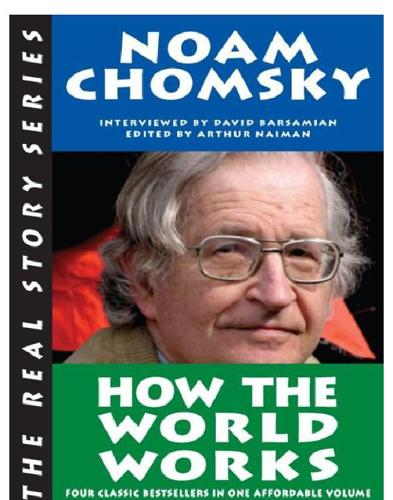
How the World Works
by
Noam Chomsky
,
Arthur Naiman
and
David Barsamian
Published 13 Sep 2011
The activism of the 1960s had a very civilizing effect—it brought to the fore all sorts of oppression and discrimination that had been suppressed. The killing off of the native populations—which had been pretty much ignored even in scholarship—was put on the agenda for the first time. Environmental issues (which basically have to do with the rights of future generations), respect for other cultures, the feminist movement—these had all existed in some form earlier, but they really took off in the 1970s and spread throughout the whole country. The Central America solidarity movement wouldn’t have existed in the form it did if not for what happened in the 1960s. Concerns about oppression, authority and rights can sometimes take the unhealthy forms that Gitlin is criticizing, but they needn’t, and commonly didn’t.

A Random Walk Down Wall Street: The Time-Tested Strategy for Successful Investing
by
Burton G. Malkiel
Published 10 Jan 2011
As a student, she was deeply concerned with issues of discrimination and social justice, and also participated in anti-nuclear demonstrations. Subjects were then asked to rate the relative likelihood that eight different statements about Linda were true. Two of the statements on the list were “Linda is a bank teller” and “Linda is a bank teller and is active in the feminist movement.” Over 85 percent of subjects judged it more likely that Linda was both a bank teller and a feminist than that she was a bank teller. But this answer is a violation of a fundamental axiom of probability theory (the conjunction rule): the probability that somebody belongs to both category A and category B is less than or equal to the probability that she belongs to category A alone.
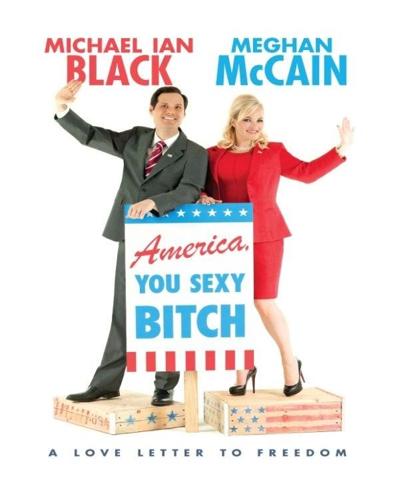
America, You Sexy Bitch: A Love Letter to Freedom
by
Meghan McCain
and
Michael Black
Published 31 May 2012
We seem to be regressing as a culture, or at the very least have plateaued, in that subjects such as birth control and a woman’s right to have access to birth control have returned to the forefront of the political landscape. Of all the issues facing America right now, my right to have access to birth control is pretty much the last thing I would have imagined would be a discussion in this election cycle. I mean, isn’t this something we as a country already passed during the feminist movement? On a personal level, my relationship with what sex on the broader landscape means to me is probably the most difficult subject to deal with and talk about publicly. Unfortunately, the problem is that in America, women in the media are still treated as either Madonnas or whores. Men still run the media and are threatened by strong women with strong voices; and the easiest and most predictable way for a lot of men to deal with a strong woman with strong opinions is to automatically call her a slut and immediately call into question her morality and life choices.
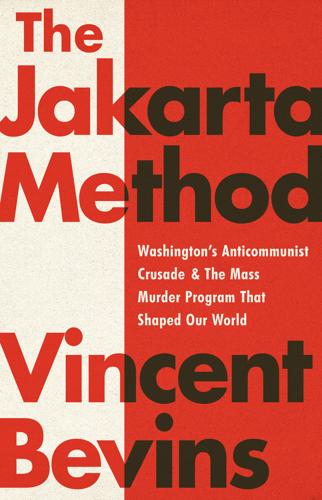
The Jakarta Method: Washington's Anticommunist Crusade and the Mass Murder Program That Shaped Our World
by
Vincent Bevins
Published 18 May 2020
Most notably, Nasser pointed his Radio Cairo broadcasts south toward sub-Saharan and East Africa with this message.70 In the Congo, people began listening to La Voix de l’Afrique from Egypt and All India Radio, which featured broadcasts in Swahili, as a man named Patrice Lumumba was beginning to form the Mouvement National Congolais, a very “Spirit of Bandung” independence movement that rejected ethnic divisions and sought to build the Congolese nation out of anticolonial struggle.71 In 1958, the first Asian-African Conference on Women was held in Colombo, and launched a transnational Third World feminist movement. For the 1961 Cairo Women’s Conference, Egyptian organizer Bahia Karam wrote in her introduction to the proceedings: “For the first time in modern history, feminine history that is, that such a gathering of Afro-Asian woman has taken place… it was indeed a great pleasure, an encouragement to meet delegates from countries in Africa which the imperialists had never before allowed to leave the boundaries of their land.”72 The press in Egypt, for example, began to focus on the lives of women from around the Third World, including Indonesia, discussing the “ties of sisterhood and solidarity between the women of Africa and Asia.”73 And the Bandung Conference countries would go on to found the Afro-Asian Journalist Association, an attempt by people from the Third World to cover the Third World without relying on the white men, usually sent from rich countries to work as foreign correspondents, who had been telling their stories for decades, if not centuries.

Chasing the Moon: The People, the Politics, and the Promise That Launched America Into the Space Age
by
Robert Stone
and
Alan Andres
Published 3 Jun 2019
For her work on the return of Apollo 13, POPPY NORTHCUTT was a recipient of the Presidential Medal of Freedom Team Award. After leaving the space program, she served on the board of directors of the National Organization for Women and was named by the mayor of Houston as the city’s first women’s advocate. She spent more than four decades on the front lines of the feminist movement, earning a law degree in 1984 and working as a prosecutor in the Harris County district attorney’s office, and later had her own private practice specializing in issues of inclusion and reproductive rights. HERMANN OBERTH traveled to the United States to witness the launches of Apollo 11 and, sixteen years later, the space shuttle Challenger.

Milk!
by
Mark Kurlansky
This struck a chord with American women, because it was a reaction against “scientific mothering.” There was a strong feeling that doctors should not be telling mothers what to do. Since most doctors at the time were men, the La Leche movement had a vague feminist overtone, even though the nascent feminist movement itself was generally on the side of bottle-feeding. But in other ways, the La Leche movement was decidedly nonfeminist. White had eleven children, and she and her league believed that women should stay home, have many children, and dedicate all their time to childcare. They openly opposed the idea of women working.

The Equality Machine: Harnessing Digital Technology for a Brighter, More Inclusive Future
by
Orly Lobel
Published 17 Oct 2022
The court described pornography as “deprived of unique human character or identity, [where women] are depicted as sexual playthings, hysterically and instantly responsive to male sexual demands. They worship male genitals and their own value depends upon the quality of their genitals and breasts.” In the 1980s and 1990s, Catharine MacKinnon, a law professor at the University of Michigan, led a feminist movement against pornography and prostitution. I was a law student in the late 1990s and, influenced by MacKinnon’s writing, I wrote a research paper about how the battle brought about uncomfortable bedfellows: feminists alongside conservative religious groups who want to regulate our sexual behaviors—those same groups that wanted to reverse Roe v.

The Happiness Hypothesis: Finding Modern Truth in Ancient Wisdom
by
Jonathan Haidt
Published 26 Dec 2005
But I am trying to understand the mutual incomprehension of the two sides in the culture war, and I believe that Shweder's three ethics—particularly the ethic of divinity—are the key to it. Which of the following quotations inspires you more: (1) "Self-esteem is the basis of any democracy"; (2) "It's not all about you." T h e first is attributed to Gloria Steinem,49 a founder of the feminist movement in the 1970s. It claims that sexism, racism, and oppression make particular groups of people feel unworthy and therefore undermine their participation in democracy. This quote also reflects the core idea of the ethic of autonomy: Individuals are what really matter in life, so the ideal society protects all individuals from harm and respects their autonomy and freedom of choice.

Coming Apart: The State of White America, 1960-2010
by
Charles Murray
Published 1 Jan 2012
How many programs Kennedy could have actually passed is another question, but Harrington’s thesis was already being taken up by the liberal wing of the Democratic Party and would have become part of the policy debate even without the assassination. Other movements that would have sweeping impact on American society were already nascent in 1963. Early in the year, Betty Friedan had published The Feminine Mystique, seen now as the opening salvo of the feminist movement. Rachel Carson’s Silent Spring had appeared in 1962 and become a New York Times best seller, setting off public interest that would lead to the environmental movement. Ralph Nader had written his first attack on the auto industry in the Nation, and two years later would found the consumer advocate movement with Unsafe at Any Speed.

Hacker, Hoaxer, Whistleblower, Spy: The Story of Anonymous
by
Gabriella Coleman
Published 4 Nov 2014
You have just 34 days in which to do it (this exact number has been selected for a specific reason, it has definite practical significance). You are done. There is but one way out for you. You better take it before your filthy, abnormal fraudulent self is bared to the nation.3 The government similarly targeted many other groups: Students for a Democratic Society, white supremacists, branches of the feminist movement, the radical Puerto Rican independence movement, and countless anti-Vietnam War efforts. Their aggressive and multi-pronged methods included predatory infiltration strategies with the purpose of sabotage: sustained, planned, and organized disruption of political movements so as to stamp them out of existence.

When Computers Can Think: The Artificial Intelligence Singularity
by
Anthony Berglas
,
William Black
,
Samantha Thalind
,
Max Scratchmann
and
Michelle Estes
Published 28 Feb 2015
In the present age, ordinary Americans are happy to accept two weeks of annual leave each year. British and Australian nationals demand four weeks of leave, while many Europeans have over six weeks of leave each year. These figures have not changed as a result of increases in productivity: indeed, the feminist movement has resulted in more people entering the workforce. Europeans are certainly not more productive than Americans, the difference in leisure simply reflects cultural differences and the balance of power between capital and labour. American employers expect fifty weeks of service simply because they can.
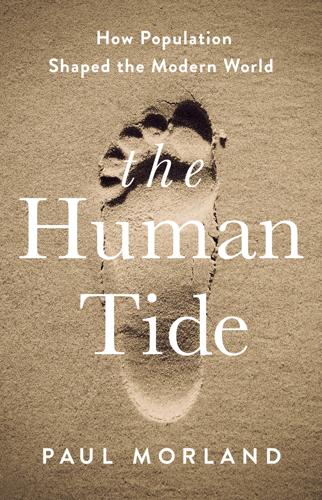
The Human Tide: How Population Shaped the Modern World
by
Paul Morland
Published 10 Jan 2019
In a sense, it is life–its beginning and its ending. Population must be understood alongside other causal factors such as technological innovation, economic progress and changing beliefs and ideologies, but population does explain a great deal. Take for example the ideology and perspective of feminism. It is impossible to say whether the feminist movement prefigured demographic change and drove it or rather resulted from it, but we can chart how the two have worked together. Today, feminist ideas have permeated almost every aspect of (a still imbalanced) society and the economy, from the acceptability of premarital sex to female participation in the workforce.
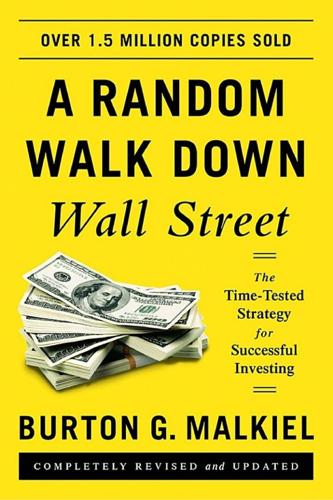
A Random Walk Down Wall Street: The Time-Tested Strategy for Successful Investing (Eleventh Edition)
by
Burton G. Malkiel
Published 5 Jan 2015
As a student, she was deeply concerned with issues of discrimination and social justice, and also participated in anti-nuclear demonstrations. Subjects were then asked to rate the relative likelihood that eight different statements about Linda were true. Two of the statements on the list were “Linda is a bank teller” and “Linda is a bank teller and is active in the feminist movement.” Over 85 percent of subjects judged it more likely that Linda was both a bank teller and a feminist than that she was a bank teller. But this answer is a violation of a fundamental axiom of probability theory (the conjunction rule): the probability that somebody belongs to both category A and category B is less than or equal to the probability that she belongs to category A alone.
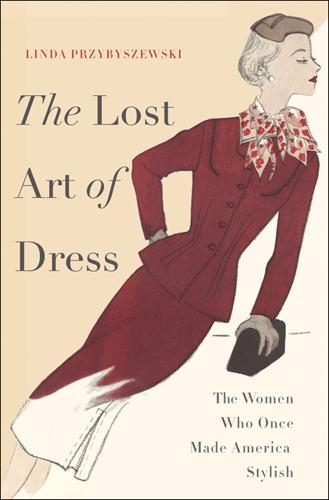
The Lost Art of Dress
by
Przybyszewski, Linda
A graduate of Smith College, Friedan began with these words: “Gradually, without seeing it clearly for quite a while, I came to realize that something is very wrong with the way American women are trying to live their lives today.” Friedan and women like her felt pressured into defining themselves solely as wives and mothers, unable to use their talents or education in any other kind of work without feeling guilty. Although the earliest home economists came out of the Progressive era, when reform was in the air, the feminist movement had quieted during the 1920s. The Great Depression had made many question whether married women should have jobs when so many men were out of work, and the end of World War II prompted a rush to domesticity. Out of it grew the “mystique,” or myth, that all women found only domestic work satisfying—or if they didn’t, they should.

The Rise and Fall of American Growth: The U.S. Standard of Living Since the Civil War (The Princeton Economic History of the Western World)
by
Robert J. Gordon
Published 12 Jan 2016
[One] section of downtown Boston … was called the Combat Zone because of its endemic muggings and stabbings.59 Though homicide rates and other important measures of crime would not decline until the 1990s, the 1970s saw the beginnings of progress in another sphere of violence—abuses against women. In a shift in cultural norms that can be partly attributed to the feminist movement of the 1970s, especially Susan Brownmiller’s 1975 bestseller Against Our Will, the incidence of rape began to decline in the late 1970s. This trend accelerated in the 1990s, and by 2009, the rate of rape was just a fifth of its 1973 level. Around the same time, other manifestations of violence against women, such as domestic violence, began trending downward.60 In the 1990s, improvements in gender-related violence were joined by more widespread gains.
…
.): air travel regulated by, 403–4; automobiles regulated by, 375–76, 382–83; debt of, 607, 629–30, 638; economic growth promoted by, 310–16; Interstate Highway System built by, 389–93; Medicare and Medicaid programs of, 489; Obamacare program of, 493–95; regulation by, 649; World War II manufacturing financed by, 564 Federal Housing Authority, 369 Feldstein, Martin, 650 females. See women feminist movement, 475, 477 fertility rates, 35, 505, 520 Field, Alexander: on benefits of telegraph, 179; on innovation during 1930s, 19, 547, 557, 559–61, 565 films. See movies finance companies, 297 financial industries, 582–83; artificial intelligence used in, 598; telegraph used by, 178 fire insurance, 307–8, 317 First Industrial Revolution (IR #1), 30–31, 319 fiscal policies, 651 Fishlow, Albert, 58 Flagship Detroit Foundation, 397 Flamm, Kenneth, 589 Fleming, Alexander, 465 Flexner, Abraham, 233 Flexner report (1910), 233 Floud, Roderick, 210 fluoridation of water, 486–87 flush toilets, 5, 125 Fogel, Robert, 56, 210 food: canning and freezing of, 5; changes in, 1870 to 1940, 62–63; changes in, 1970 to 2015, 8, 333–35, 370–71, 524; consumption of (1940–2015), 335–41; contaminated, 81–83; diet (1870), 51; fast food restaurants for, 344–45; marketing of, 341–43; obesity and inequality in, 345–47; prices for, 11–12; processed, 71–76; production and consumption of (1870), 39–42; refrigerated rail cars for, 136–37; sale and distribution of, 92; slaughterhouses for, 267; spending on, 37, 63–66; spoilage and adulteration of, 220–22; stature tied to, 83–85; variety added to diet, 66–71; work conditions in production of, 249; See also diet Food and Drug Administration (FDA), 207, 224, 317, 477 Ford, Henry, 150, 162, 535; assembly-line production introduced by, 11, 557, 576; on auto loans, 297; mass production of automobiles by, 374; World War II production by, 549, 553 Ford Motor Company, 297, 368; assembly line introduced by, 313; automobiles by, 153–56, 169, 382; paternalism of, 280; wages paid by, 279 Francis, Neville, 276–77 Franklin, Benjamin, 179 fraternal organizations, 307 frequent flyer plans, 404–5 frozen foods, 74–75, 334–35, 340–41 fruits, 339 Fuchs, Victor, 479 fuel economy, in automobiles, 383–84; of imports, 388 full income, 242 furniture, 37, 292–93 Gallman, Robert, 37 Garber, Alan, 479 Garfield, James, 228–29 Garland, Judy, 202 garment industry: accidents and fires in, 271–72; child labor in, 283; women working in, 273 Garrett, Richard, 557 gas (natural gas), 634 gas lamps, 116–17 gasoline: automotive fuel economy, 383–84; price of, 388; taxes on, 390 Gates, Bill, 452, 567, 572, 574 GDP (gross domestic product), 8–9; health spending in, 492–93; impact of inventions excluded from, 93; imports in, 614; information and communication technology in, 441–42, 447–48; life expectancy and, 242–44; Medicare spending in, 518; mismeasurements in, 526–28; ratio of debt to, 638; slowdown in growth in, 325–28; television in, 423 gender: labor force participation by, 32–34; wage gap by, 509–10; working class differences in (1870), 56; See also men; women General Electric (GE), 120–21, 194 General Motors (GM), 155, 375 General Motors Acceptance Corporation (GMAC), 297 General Purpose Technology (GPT), 555, 557 General Slocum (ship) disaster, 239 general stores.

Microtrends: The Small Forces Behind Tomorrow's Big Changes
by
Mark Penn
and
E. Kinney Zalesne
Published 5 Sep 2007
Paul’s “I permit no woman to teach or have authority over men”—if you can use empirical trends alone to prove that if you want to grow your religion, bar women clergy. But more likely, the link is that the admission of women clergy is part of a larger liberalizing trend that is itself becoming unpopular among some religious people. Women clergy, rising as they did with the feminist movement, represent the integration of progressive civil society into religion. But more and more, progressivism is not what many people are looking for on a Sunday morning. Fully 77 percent of people who regularly attend church say they go for the way it involves their hearts; only 23 percent say they go for the way it involves their heads.

The Red Queen: Sex and the Evolution of Human Nature
by
Matt Ridley
Published 14 Aug 1993
Buss looked again and found that American women who make more money than average pay more attention than average to the wealth of potential spouses, not less.31 Professional women value the earning capacity of their husbands more, not less, than low-earning women. Even a survey of fifteen powerful leaders of the feminist movement revealed that they wanted still more powerful men. As Buss’s colleague Bruce Ellis put it, ‘Women’s sexual tastes become more, rather than less, discriminatory as their wealth, power and social status increases.’32 Many of Buss’s critics argue that he has ignored context altogether. In different cultures and at different times different criteria of mate preference will develop.

Dreamland: The True Tale of America's Opiate Epidemic
by
Sam Quinones
Published 20 Apr 2015
Part of the campaign aimed to convince doctors to prescribe Valium, which the public saw as dangerous. Ads urged doctors to view a patient’s physical pain as connected to stress—with Valium the destresser. If a child was sick, maybe her mother was tense. Valium was marketed above all to women, pitched as way of bearing the stress of lives as wives and mothers. Before the feminist movement, women were presumed to need that kind of help for the rest of their lives, thus there was no worry then about its addictiveness. Among Arthur Sackler’s many talents was that he thought like a family practitioner. Docs were barraged with patients who were tense, worried. “The patient would walk in, ‘I’m nervous all day long, doctor.’
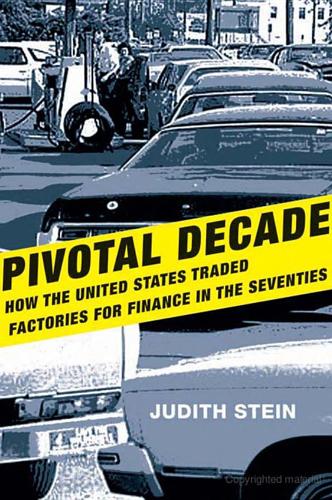
Pivotal Decade: How the United States Traded Factories for Finance in the Seventies
by
Judith Stein
Published 30 Apr 2010
He announced on October 1, “I’m going to vote for Senator McGovern because I cannot accept President Nixon. But I’m not going to campaign for Senator McGovern.” Jackson’s philosophy was to play “both ends against the middle for the benefit of blacks.”47 His comment revealed the problem McGovern faced with his new political allies. Many in the black movement, feminist movement, and antiwar movement were not thinking seriously about any majoritarian project for the Democratic Party. They used the party for their own ends, which were not necessarily those of the party. Hopes for the voting power of eighteen-twenty-one year olds, newly enfranchised as a result of the Twenty-sixth Amendment, ratified on July 1, 1971, were also deflated.

The Divided Nation: A History of Germany, 1918-1990
by
Mary Fulbrook
Published 14 Oct 1991
If one turns from culture, at both elite and mass levels, to society more generally in the Weimar period, then a similar range of complexities, ambiguities and conflicts appear. Women were formally 'emancipated' in what was essentially a highly progressive welfare state. But this was an 'emancipation from above': despite the existence of minority feminist movements, both bourgeois and socialist, the majority of women continued to have rather traditional conceptions of their role. Being a wife and mother was held to be the essential fulfilment of womanhood: paid employment outside the home was preferably to be undertaken only before marriage, or only if economically absolutely essential.
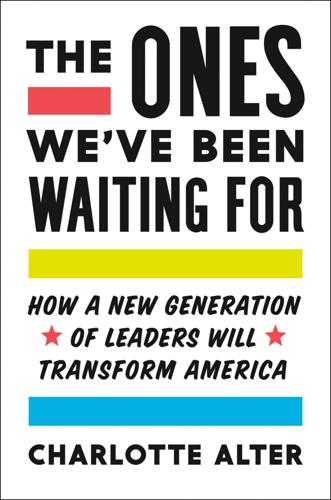
The Ones We've Been Waiting For: How a New Generation of Leaders Will Transform America
by
Charlotte Alter
Published 18 Feb 2020
Even public schools had become much more expensive: the average public four-year college was three times as expensive in 2018 as it was in 1988. For boomers, college was hoped for but not expected. Most boomers were raised by mothers who didn’t have degrees, and since many elite colleges and universities only started accepting women in the 1970s, it wasn’t necessarily assumed that all women would go to college. But thanks to the feminist movement, boomer women started going to college in record numbers. In 1982, for the first time in American history, more women than men earned undergraduate degrees. In 1960, only 18 percent of mothers of infants had any college education, but by the early 1990s a mother of a new infant was more likely to have some college education than none at all.

Whole Earth: The Many Lives of Stewart Brand
by
John Markoff
Published 22 Mar 2022
Despite riots in several San Francisco neighborhoods (including the Fillmore District) the previous week following the police shooting of a Black teenager, and the university administration’s fears that San Francisco’s Black citizens were going to take over the campus, the event came off without a hitch. Although private security had been hired, Nixon kept them out of view and, in a nod to the growing influence of the feminist movement, controlled the event with an all-female security team.[17] Although the event itself was a success, it would foretell the deep divisions that would emerge between the New Left and the counterculture, as well as a more personal fracture between the Nixons and the Brands a year later. For several weeks afterward, Kesey, who had returned from Mexico, where he had been a fugitive from the California marijuana charges to secretly attend Whatever It Is, played a cat and mouse game with the police before he was arrested driving south from San Francisco while Brand and several other Pranksters followed in a second car.

The Great Good Place: Cafes, Coffee Shops, Bookstores, Bars, Hair Salons, and Other Hangouts at the Heart of a Community
by
Ray Oldenburg
Published 17 Aug 1999
Voluntary or intentional childlessness, a fairly recent American ideal, has already been embraced by well over 10 percent of the married population.3 Marriage and family textbooks are moving away from the word childless in favor of childfree, a term more appropriate to the undesirability of children in our present culture. One liberated female, active in the feminist movement, suggested that we might be able to get our children by purchasing them from the poor people of foreign countries. Perhaps children could be raised on ranches in one of our large western states and shipped East when “heifer-sized.” There could be mass bar mitzvahs and confirmations to cap off the annual roundups.

The Six: The Untold Story of America's First Women Astronauts
by
Loren Grush
Published 11 Sep 2023
In 1963, Betty Friedan had published her book The Feminine Mystique, which touted the “problem that has no name.” Over three million readers read about the sexism that permeated society, pressuring women to stay at home instead of striving beyond domesticity. Though by that point the embers of a new feminist movement had already been lit, the book ignited the flame. A new wave of feminism spread throughout the country as women advocated for reproductive rights, the ability to take out mortgages and apply for credit cards, the passing of laws against marital rape, and more. Parallel efforts to promote racial justice culminated in the passage of the Civil Rights Act of 1964, outlawing discrimination based on race, color, religion, sex, or national origin.

Moon Mexico City: Neighborhood Walks, Food & Culture, Beloved Local Spots
by
Julie Meade
Published 7 Aug 2023
Second-wave feminism arrived in Mexico in the 1960s, and there are numerous nonprofit organizations working to improve conditions for women, socially and politically. In 1994, the EZLN’s rebel army included male and female soldiers and commanders and listed women’s rights within its agenda for social justice. At the same time, the feminist movement in Mexico has never received a wide base of support. There has traditionally been a large gender gap in Mexico’s workforce, as many women leave school early in order to help out at home. In today’s Mexico, economic realities, social changes, and increased education have changed women’s relationship to the workforce, with women taking jobs in all sectors of society, from the small entrepreneur who cleans homes to the high-ranking political leader, as you’ll see amply illustrated in Mexico City’s workforce.

Lonely Planet Barcelona
by
Isabella Noble
and
Regis St Louis
Published 15 Nov 2022
That said, stick to your usual instincts and common sense: avoid empty city streets at night, let someone know where you are, choose accommodation carefully, etc. Topless bathing is common at beaches and pools across Spain, and, when it comes to clothing, in Barcelona anything goes. Ca la Dona (map; %93 412 71 61; https://caladona.org; Carrer de Ripoll 25; h10am-1pm & 5-8pm Mon-Thu; mJaume I) The nerve centre of the region’s feminist movement, with diverse women’s groups. Institut Català de les Dones (http://dones.gencat.cat) Can point you in the right direction for information on marriage, divorce, rape/assault counselling and related issues. The 24-hour hotline for victims of assault is 900 900120. Responsible Travel Barcelona’s struggle with overtourism has hit headlines in recent years and the Catalan authorities are working hard to push forward a more sustainable tourism model.

Reaganland: America's Right Turn 1976-1980
by
Rick Perlstein
Published 17 Aug 2020
The conference chairwoman, a college affirmative action officer, asked security personnel at the convention center to eject the disruptors rendering the escalators impassable, but they rebuffed her; they agreed with the ministers. The conservatives won a majority of the delegates. A right-winger called it the “Pearl Harbor to the feminist movement.” A feminist likened it to a Fellini movie. Two months out from the national conference, Senator Helms convened hearings to get it canceled. One conservative testified about “hundreds of purple arm-banded lesbians… with gestures of clenched-fist defiance” holding “workshops on revolution and sex, including one on oral sodomy.”
…
Well, that’s all we’re trying to do—get homosexuality away from our children.” Another said, “You’re a Jew. And probably a homosexual too.” (Down below, a woman read a statement at the microphone that said gay rights “compels the sympathy of all concerned people. But it has always been an albatross on the neck of the feminist movement.” She was booed. The chair cried, “Stay of order!” The woman: “The political reality is that passage of this resolution is an extra burden we do not need. I urge you to defeat this resolution!”) Dworkin remembered, “I found myself slowly being pushed farther and farther back against the balcony railing.
…
Jimmy Carter had won by appealing to everyone, left, right, center. Then the bills for this ideological profligacy came due. For instance, after he came out for a measure to end federal funding of abortions, with the comment, “As you know, there are many things in life that are not fair,” the flagship magazine of the feminist movement mocked him in its year-end issue with a cover line that doubled as a jab at his mounting political woes. 45. 46. 47. 48. In the spring of 1978, in conservative Wichita, a fundamentalist preacher organized a successful crusade to repeal the town’s gay rights ordinance. Then, the same thing happened in two cities, St.

Yucatan: Cancun & Cozumel
by
Bruce Conord
and
June Conord
Published 31 Aug 2000
Climb to the second floor foyer decorated with old photos of Campeche and an eclectic collection of artifacts on the wall, then through the interior rooms, which are like homey old living rooms, to the outside tables. Casa Vieja, “Old House,” has a romantic ambiance with meals served on the veranda overlooking the park above Los Portales. Cuban food. $$ The feminist movement has helped open minds and kitchens to the notion that men can be at home on the range. ~ Rená Veaux, chef, Lasserre restaurant, Paris Restaurant Bar Familiar La Parroquía (Calle 55 between 10 and 12). If one restaurant says “Campeche” and everything about it, it’s La Parroquía. All at once it’s a family restaurant, a pub, a hangout and a meeting place for old men reliving their glory days or young lovers whose best is yet to come.

No Such Thing as Society
by
Andy McSmith
Published 19 Nov 2010
Two sisters, Annette and Charlene Maw, aged twenty-one and eighteen, admitted stabbing their drunken, abusive father, who had repeatedly beaten his wife and daughters. After one beating, Charlene picked up a bread knife, which she passed to her older sister, who sank it into their father’s neck. They pleaded guilty to manslaughter and, on 17 November 1980, were sentenced to three years in prison. The case roused an already angry feminist movement. In December, as it went to appeal in the high court in London, where Charlene’s sentence was reduced to six months, a hundred women demonstrated outside the court. ‘We are horrified by this decision. It means there is no justice at all for women in the courts of this country. Only this week a man convicted of raping a seven-year-old girl was given a suspended sentence,’11 one of them told journalists.

Barcelona
by
Damien Simonis
Published 9 Dec 2010
Topless bathing is OK on beaches in Catalonia and also at swimming pools. While skimpy clothing tends not to attract much attention in Barcelona and the coastal resorts, tastes in inland Catalonia tend to be somewhat conservative. Ca la Dona (Map; 93 412 71 61; www.caladona.org; Carrer de Casp 38; Catalunya) The nerve centre of the region’s feminist movement, Ca la Dona (Women’s Home) includes many diverse women’s groups. Centre Francesca Bonnemaison (Map; 93 268 42 18; www.bonnemaison-ccd.org; Carrer de Sant Pere més Baix 7; Urquinaona) A women’s cultural centre where groups put on expositions, stage theatre productions and carry out other cultural activities.

The Rational Optimist: How Prosperity Evolves
by
Matt Ridley
Published 17 May 2010
In the 1950s many suburban men, returning from war, found they too could afford such an accessory, and many women were pressured into giving their battleship-welding jobs back to men. In the absence of economic change, that is probably how it would have stayed, but soon the opportunities to work outside the home grew as the time spent on increasingly mechanised housework dwindled, and it was this, as much as any political awakening, that enabled the feminist movement to gain traction in the 1960s. The lesson of the last two centuries is that liberty and welfare march hand in hand with prosperity and trade. Countries that lose their liberty to tyrants today, through military coups, are generally experiencing falling per capita income at an average rate of 1.4 per cent at the time – just as it was falling per capita income that helped turn Russia, Germany and Japan into dictatorships between the two world wars.

Endless Money: The Moral Hazards of Socialism
by
William Baker
and
Addison Wiggin
Published 2 Nov 2009
Pop star Madonna purportedly paid 308 ENDLESS MONEY a Malawian village $3 million to rescue a 13-month-old boy whose mother died of AIDS.9 In that country 1.4 million, or one-quarter of its population under the age of 14, are orphaned; the cause is mostly the HIV epidemic.10 Two things happened beginning in the Viet Nam War era. The pill became broadly available by the 1970s, and abortion became nationally ubiquitous and more commonplace, rather than confined to certain states. Abortions jumped from 16.3 per 1,000 women in 1973 to a peak of 29.3 in 1981.11 Both became methods of birth control, permitting the feminist movement to bloom in earnest. The issue of abortion divides the nation almost evenly. As relativism would dictate, young women typically are pro choice, while the older demographic tilts toward appreciation of life above the convenience of terminating unwanted children. Another encroachment of relativism is the left’s failure to acknowledge that infanticide is in reality a form of birth control, for it is used to terminate almost one-fourth of American pregnancies.12 The flip side of abortion is illegitimacy, whose resulting cycle of poverty is caused by social pathology.
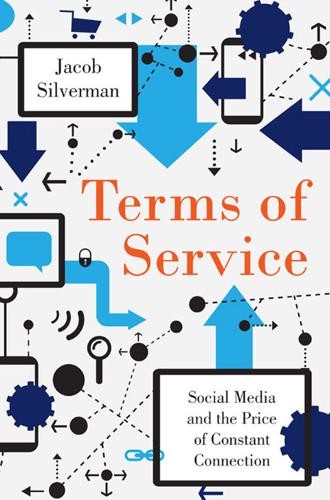
Terms of Service: Social Media and the Price of Constant Connection
by
Jacob Silverman
Published 17 Mar 2015
By this definition, Illich would include self-service gas stations but also domestic housework. This latter idea is particularly important, as cleaning, child care, cooking, and many other domestic tasks that are labor-intensive and time-consuming have long been diminished as not “real” work. That, in turn, helps to hollow support for feminist movements, the rights of homemakers, and a strong social safety net which, for example, would provide child-care services that would allow women to put aside their domestic labor and enter the paid workforce. The sharing economy is loaded with shadow work, which you might discover when you learn you’re required to clean out your Zipcar but not the (similarly priced) rental from Hertz or Enterprise.
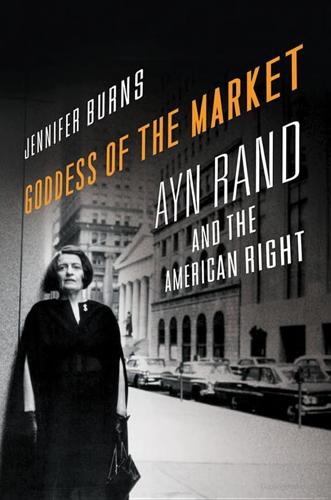
Goddess of the Market: Ayn Rand and the American Right
by
Jennifer Burns
Published 18 Oct 2009
“An embryo has no rights,” she insisted. The principle was basic: restrictions on abortion were immoral because they elevated a potential life over an actual life. It was essential that women be able to choose when, and whether, to become mothers.49 Despite this common political ground, Rand regarded the feminist movement as utterly without legitimacy. In a 1971 article, “The Age of Envy,” she declared, “Every other pressure group has some semi-plausible complaint or pretense at a complaint, as an excuse for existing. Women’s Lib has none.” To Rand, feminism was simply another form of collectivism, a variation on Marxism that replaced the proletariat with women, a newly invented oppressed class.50 The proof was in feminist calls for government to redress discrimination, when it was not government itself that had created the problem.

Turning the Tide
by
Noam Chomsky
Published 14 Sep 2015
The hope that all of this had been put to rest in the “quiescent 70s” was quickly shattered by the popular response to Reagan’s attempt to rekindle the aggressive enthusiasms of Kennedy’s New Frontier. It is, in fact, remarkable that the 70s have so commonly been described as a period when popular movements were tamed. As many people know from their own experience, this allegedly quiescent period was one of wide-ranging activism; it was precisely in this period that the feminist movement became a vital force, with a far reaching impact on social life, along with the environmental movement and much else. The growth of the disarmament and solidarity movements in response to the “Resurgent America” programs of the later Carter and Reagan Administrations should have come as no real surprise.

Lila: An Inquiry Into Morals
by
Robert M. Pirsig
Published 1 Jan 1991
Sidis opted for wisdom, but it seemed to Phædrus there ought to be some way you could have both. The question seemed to imply the stupidity of women but a feminist could turn it around and ask, Is it better to have wisdom or be attractive to men! That’s practically the theme song of the whole feminist movement. Although the feminists and the male Provengal poets would appear to be condemning the opposite sex, they are, in fact, both actually condemning the same thing: not men, not women, but static biological antagonism to social and intellectual Quality. Phædrus began to feel a slow rock of the boat.
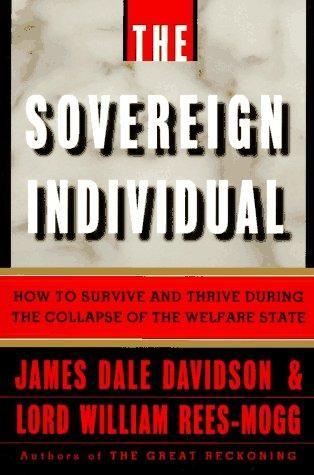
The Sovereign Individual: How to Survive and Thrive During the Collapse of the Welfare State
by
James Dale Davidson
and
William Rees-Mogg
Published 3 Feb 1997
The dominant male culture of the first half of the twentieth century centered on the survival of the nuclear family. This historically gave the husband-father at least a nominal dominance in the home, though in practice the home was often run by the wife-mother with the often meek acceptance of the nominal master. It gave the male boss a real dominance in the workplace, a dominance that the feminist movement has so far challenged but not reversed. The interest of the family, and historic Christian teaching, outlawed abortion. The old morality thought abortion was unlawful killing, was never allowable, and the adherents of the traditional morality still think that. Adherents of the new morality think the opposite.

The State and the Stork: The Population Debate and Policy Making in US History
by
Derek S. Hoff
Published 30 May 2012
ZPG’s primary goal was to reduce the American birthrate to save the environment, not to transform the American family, but its feminist arguments were vital.99 Indeed, sympathetic critics sometimes complained that ZPG overemphasized questions of gender at the cost of the core population–resources discussion. The links between the population and abortion issues have become shrouded over time. To be sure, historians of the feminist movement and of abortion politics have noted the general confluence between the family planning movement and the promotion of abortion liberalization.100 It is well known that in 1959, Planned Parenthood helped the American Law Institute draft a model law subsequently used by the few states that liberalized their abortion laws in the 1960s.101 In addition, scholars have recognized that Garrett Hardin and other population activists worked with leaders of the women’s movement to spur the creation of the National Association for the Repeal of Abortion Laws (NARAL), founded in 1969.102 Historian Suzanne Staggenborg notes in her study Pro-Choice Movement that the national ZPG organization—initially leery of engaging the abortion issue due to the group’s ecological emphasis and the recognition that the full legalization of abortion, though obviously consistent with the group’s mission, would only marginally affect aggregate population—officially endorsed the repeal of abortion restrictions in 1969.
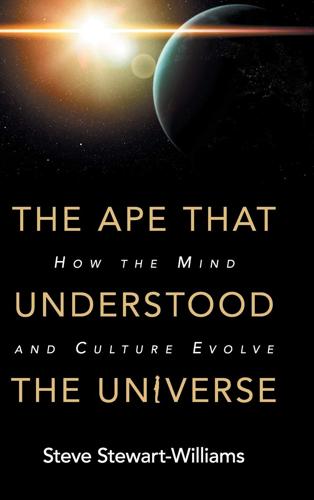
The Ape That Understood the Universe: How the Mind and Culture Evolve
by
Steve Stewart-Williams
Published 12 Sep 2018
The difference appeared in monogamous societies and polygamous ones, in capitalist societies and communist ones, and in every racial group and religious group netted in the study.95 Comparing his findings with earlier research, Buss and his team discovered that, in the United States, women’s stronger preference for financial prospects persisted right through the twentieth century, even surviving the Sexual Revolution and the second wave of the feminist movement in the 1960s and 70s.96 Meanwhile, anthropological research suggests that the sex difference isn’t limited to modern, industrialized nations. Jonathan Gottschall and colleagues, in their analysis of the traditional folk tales of bands, tribes, and preindustrial societies, found that, in every world region without fail, women were depicted as caring more than men about a prospective mate’s wealth and status – presumably because, in every world region without fail, women actually do care more than men about these traits in a mate.97 The evidence for the sex differences is strong.

If Mayors Ruled the World: Dysfunctional Nations, Rising Cities
by
Benjamin R. Barber
Published 5 Nov 2013
Although I cannot give them here the attention they merit, the argument for intercity cooperation and a global mayors parliament rides the momentum these noble experiments in constructive interdependence have quietly realized.31 I cannot complete this very brief survey, of cross-border associations and movements that are not city based but help ground a prospective cities parliament in a robust global civil society, without a word about the Occupy movement. For less than a year between 2011 and 2012, this youth-led movement electrified the media globally by drawing attention to the radical inequalities spawned by the dominion of neoliberal ideology and its current global market practices. As the civil rights and feminist movements as well as the poor peoples’ and welfare rights movements once helped to ground a new politics in social and civic protest, so Occupy Wall Street recently rekindled the ideals of urban political protest, not just within but across cities and countries. Starting in cities like New York and Oakland—fed up with predatory banks, disturbed by the irresponsibility of politicians, and daunted by a media circus wholly detached from the historical obligation of journalism to inform the citizenry—the Occupy movement was a revelation.32 It announced two truths: that America (like the world) was deeply divided with up to 99 percent of the population dominated economically by one percent that controls a preponderance of the wealth, and that as a result democracy is in deep crisis: neither Wall Street nor Washington, D.C., is “what democracy looks like.”

Track Changes
by
Matthew G. Kirschenbaum
Published 1 May 2016
Any promise of upward mobility for women in the workplace would have to contend with the gender politics then on full display in the AMA’s publications and reports. The ad was not without other contradictions as well: a company founded and led by a woman was knowingly playing on working women’s identification with the emerging feminist movement, selling them on a product that, while no doubt genuinely a boon for some, would also doubtless cost others their positions, or else relegate them to the very “dark rooms” (as full-time word processors themselves) from which Steinem was celebrating their collective emergence. But Berezin herself was never much concerned about whether the technologies she helped pioneer and promote would take away jobs: “I didn’t think of this as a problem for women.

Evil Geniuses: The Unmaking of America: A Recent History
by
Kurt Andersen
Published 14 Sep 2020
It tried to exploit popular unease with the culturally new as a way to get a green light for the rollback that Goldwater and the serious right really cared about—a restoration of old-style economic and tax and regulatory policies tilted toward business and the well-to-do. That lashing of cultural fear to political economics was just ahead of its time. Because 1964 was before the proliferation of hippies and marijuana and psychedelics, before a large feminist movement emerged and workplaces started filling with unprecedented numbers of women. It was before U.S. combat forces went to Vietnam, before the antiwar movement blossomed. It was before violent crime really shot up—murders in the United States increased by half during the five years from 1964 to 1969, and in New York City by that much in just two years, from 1966 to 1968.
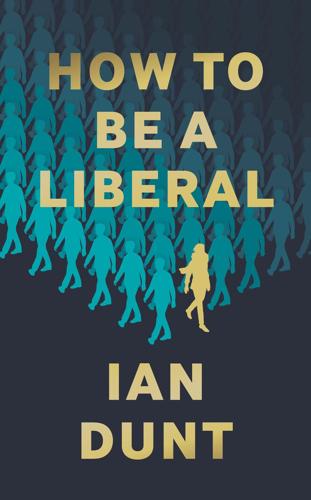
How to Be a Liberal: The Story of Liberalism and the Fight for Its Life
by
Ian Dunt
Published 15 Oct 2020
This was why liberalism had taken so long to apply its critique of power to the restraints faced by women. They had been designated out of pertinence. Liberalism consequently built up a political system that was ostensibly about general freedom, but was in fact about men’s freedom. In order to tear down the system of male domination, women in the radical feminist movement needed to speak out. And they did so with a phrase that was startling in its simplicity and implication: the personal is political. All the things that had previously been ignored as ‘private’ were now primed for discussion: every wolf-whistle in the street, every bit of housework that the wife did instead of her husband, every lazy assumption about male sexual desires.
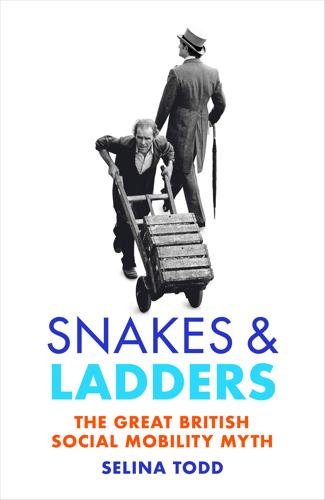
Snakes and Ladders: The Great British Social Mobility Myth
by
Selina Todd
Published 11 Feb 2021
The proportion of women with qualifications increased between 1971 and 1981 by 50 per cent – and many of them were members of the golden generation. The number of married women born in the 1940s who possessed some qualifications more than doubled during the 1970s, and many went on to get teaching and senior administrative posts.94 These women benefited from a new feminist movement they helped to initiate. In 1970, the first national Women’s Liberation conference was held at Ruskin College. Equal rights at work and in education were among the goals of the 600 participants. Jo Stanley was one of many who initiated trade union ‘campaigns against sex discrimination’, lobbying government for the Equal Pay Act of 1970, and then the Sex Discrimination Act of 1975.95 As a result of feminist activism, Labour’s 1974 manifesto acknowledged that ‘not all of our proposals should be judged on economic tests.
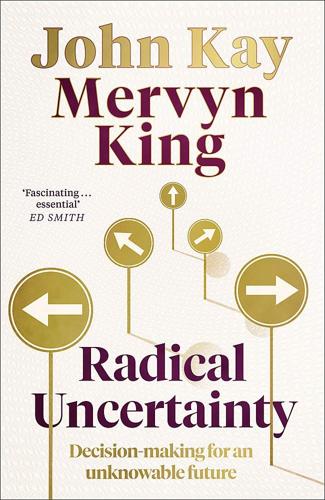
Radical Uncertainty: Decision-Making for an Unknowable Future
by
Mervyn King
and
John Kay
Published 5 Mar 2020
In his bestseller Thinking, Fast and Slow , Daniel Kahneman describes it thus: ‘Linda is thirty-one years old, single, outspoken, and very bright. She majored in philosophy. As a student, she was deeply concerned with issues of discrimination and social justice, and also participated in anti-nuclear demonstrations. Which of the following is more likely? “Linda is a bank teller” or “Linda is a bank teller and is active in the feminist movement”.’ 9 The most common answer (given by 85% to 90% of undergraduates in major universities) 10 is that Linda is more likely to be a feminist bank teller than a bank teller. That answer is wrong in terms of probabilities because the probability of two events A and B occurring together cannot exceed the probability of A occurring alone.

Spies, Lies, and Algorithms: The History and Future of American Intelligence
by
Amy B. Zegart
Published 6 Nov 2021
She majored in philosophy. As a student, she was deeply concerned with the issue of discrimination and social justice, and also participated in antinuclear demonstrations. They were then asked which was more probable: Linda is a bank teller; or Linda is a bank teller and is active in the feminist movement. Between 85 and 90 percent of participants in the study chose (2). Kahneman described this outcome as totally “contrary to logic.” All feminist bank tellers are also bank tellers, so (1) always has a higher probability of being true.35 The math doesn’t lie but the brain often does. Economists and psychologists have discovered so many cognitive biases, Wikipedia currently lists nearly two hundred.36 Seven are especially pervasive and consequential for intelligence analysis.

Riding Rockets: The Outrageous Tales of a Space Shuttle Astronaut
by
Mike Mullane
Published 24 Jan 2006
In November our crew celebrated Hank’s fiftieth birthday at the Monday meeting. Because he wore his political leanings on his sleeve, he was an easy target to lampoon. We presented him outrageously satirical gifts, including a copy ofMs. magazine dedicated and autographed to him by Gloria Steinem, “In recognition of your support of the feminist movement.” (Sally Ride, a friend of Ms. Steinem, had secured the magazine and her autograph, a one-of-the-guys act that shocked me.) We read fake congratulatory messages from Hank’s supporters, including the ACLU, Jane Fonda, and the Nuclear Freeze Movement. There was also a congratulatory card from Yuri Andropov thanking Hank for “promoting global communism,” as well as a card from Senator Ted Kennedy thanking him for his recent donation to the Democratic party.

The Aristocracy of Talent: How Meritocracy Made the Modern World
by
Adrian Wooldridge
Published 2 Jun 2021
He was also one of the most consistent advocates of open competition: in 1869, he moved a resolution demanding that all civil service posts should be open to competition, and in 1880 he took his beliefs to their logical conclusion, opening clerkships in the post office to women as well as men and freeing postmistresses who married from the ancient obligation to re-register their premises in their husband’s name.24 In 1867, he married into one of the first families of the burgeoning feminist movement, first asking Elizabeth Garrett, a pioneering doctor, to marry him and then, when she declined, turning successfully to her younger sister, Millicent. (Today’s Fawcett Society, a charity devoted to women’s rights, is named after Millicent.) The couple determined to give every opportunity to their only child, Philippa, who proved to be a mathematical prodigy.

Dreams and Shadows: The Future of the Middle East
by
Robin Wright
Published 28 Feb 2008
In 2005, Human Rights Watch reported that some 600,000 female children, some as young as five years old, worked as domestic help. Morocco’s labor code did not regulate domestic work, nor did inspectors enter private homes to check.25 The idea of girls assuming control over their lives remained a far-fetched dream. Morocco’s new feminist movement and the Moudawana reforms it produced were a starting point, not an end. The third great compromise is détente with Islamists willing to work within the system and with other parties. It is also a risky step—for both sides. Political Islam, in its disparate forms, will be the most energetic idiom of opposition in the Middle East for at least the next generation.

Peggy Seeger
by
Jean R. Freedman
In the autumn of 1929, she moved to New York, where Blanche Walton's apartment provided the setting for informal meetings with well-known musicians, and where concerts of Ruth's music were performed to critical acclaim. But the most important event of that year was meeting her new teacher, Charles Seeger. Charles's low opinion of women composers had hurt and angered Ruth, and she was determined to prove him wrong. It is unlikely that she did so from any self-consciously feminist position. The U.S. feminist movement had collapsed in exhaustion after its most hard-won victory—the vote—and it remained in this semi-quiescent state for the rest of Ruth's life. Though individuals such as Alice Paul continued to fight for women's rights, most feminist leaders believed that their work was largely done and women should channel their energies into the good of society as a whole.
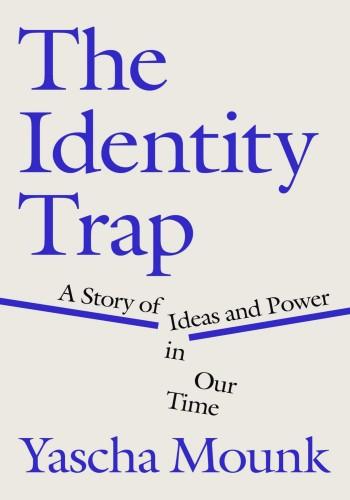
The Identity Trap: A Story of Ideas and Power in Our Time
by
Yascha Mounk
Published 26 Sep 2023
To be intersectional, according to this reading, was to recognize that anybody who is truly committed to the eradication of one form of injustice, like gender discrimination, must also be committed to the eradication of other forms of injustice, like racial or religious discrimination. As the language of intersectionality became popular in activist circles, this tempted some activists to place a very high entry barrier on anybody who wants to participate in a political movement. If somebody wants to join a feminist movement committed to intersectionality, these activists now also expect that person to agree with a set of specific positions about such varied topics as the nature of race discrimination, the injustices suffered by disabled people, and the conflict in Palestine. * * * — In 1996, the journalist Larissa MacFarquhar wrote one of the first profiles of the scholars who had founded critical race theory.

On the Trail of Genghis Khan: An Epic Journey Through the Land of the Nomads
by
Tim Cope
Published 23 Sep 2013
I didn’t believe him, but I did know that many people I had met in the former Soviet Union during my previous trip had had conflicting views about Western women and very rarely had the chance to ask for themselves. The word in rural areas in particular was that either they “wore pants like men” and were highly nonsexual because of the feminist movement or they were all willing to offer themselves at will like in American movies. This was one of hundreds of such frank conversations that I would have with men, often herders in the saddle, right across the steppes. One colorful man later told me that Shymkent was his favorite city because “watermelons are twenty-five kopeks and Uzbek women two hundred.”

White Trash: The 400-Year Untold History of Class in America
by
Nancy Isenberg
Published 20 Jun 2016
—Roy Blount Jr., Crackers (1980) As identity politics rose as a force for good in the last decades of the twentieth century, authenticity was to be achieved by registering, and then heeding, the voices of previously marginalized Americans. Whites could no longer speak for people of color. Men could no long speak for women. The New Left, civil rights, and Black Power movements of the 1960s had helped to jump-start the second-wave feminist movement, yet identity politics was not the possession of the left alone. Richard Nixon rode into office in 1968 by claiming to represent the interests of the “Silent Majority” of Americans who saw themselves as hardworking, middle American homeowners dutifully paying their taxes and demanding little of the federal government.1 One could argue that identity has always been a part of politics, that aspiring people adopt identities the same way that they change their style of dress.

Flight of the WASP
by
Michael Gross
As free men, former slaves would be able to speak for themselves, be counted in full, and run for office—at least briefly. But women of all races, who had been an engine of abolitionism, were left to fend for themselves. Important as those amendments were for civil rights, they also gave momentum to the feminist movement, born at the Seneca Falls Convention of 1848. The House impeached Johnson early in 1868, ostensibly for removing Lincoln’s secretary of war, but really for incompetence and opposition to the agenda of radical Republicans. He was narrowly acquitted by the Senate but hobbled, particularly after the Civil War hero Ulysses Grant resigned as commander of the U.S.

The Platinum Age of Television: From I Love Lucy to the Walking Dead, How TV Became Terrific
by
David Bianculli
Published 15 Nov 2016
Knowing that the audience would be equally enamored and aware of that show, though, eliminated some other possibilities for the new series. “We weren’t going to have her be married again, after being Laura,” Brooks says. “It’d be, like, too weird. So she was a single working woman.” That simple fact, coupled with the concurrent rise of the feminist movement, infused the Mary Richards character, and the entire series, with a heightened sense of relevance. “Not that she was a feminist,” Brooks says of the show’s protagonist, “because she wasn’t. But being surrounded by the cultural change around us did somehow make us important, in a way we wouldn’t have been at any other time doing the same show.”
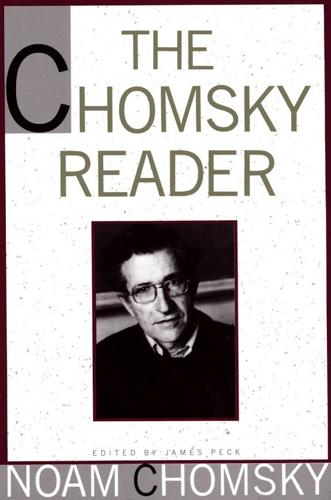
The Chomsky Reader
by
Noam Chomsky
Published 11 Sep 1987
The movement against the war in Vietnam had long-lasting, I hope permanent, effects in raising the general level of insight and understanding among the general public, with an impact on scholarship and journalism as well. The civil rights movement also had significant and I presume permanent effects, as did the feminist movement, the ecological movements, and many other offshoots of the organizing and educational efforts of the 1960s. The universities were opened up quite markedly to ideas and thinking that had been effectively marginalized and suppressed. This is a phenomenon that can hardly escape notice. Despite the intense efforts undertaken in the 1970s to reverse this general cultural progress and enlightenment, much of it remains.
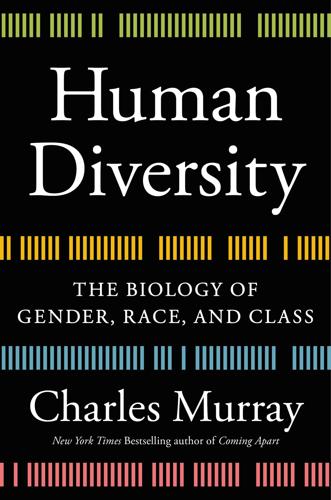
Human Diversity: The Biology of Gender, Race, and Class
by
Charles Murray
Published 28 Jan 2020
The study found that “(a) parents were treating their children differently based not on their child’s gender but apparently rather as a function of their child’s talent; (b) fathers did not appear to be more involved with the mathematically talented students than with the verbally talented; and (c) the majority of students, especially females, were not strongly sex typed.”9 Despite their parents’ support, it might be argued that the girls who entered SMPY’s Cohort 2 were still socialized to traditional pre-feminist norms. The modern feminist movement was in its first decade when they were born in the mid-1960s. It should be assumed that as little girls the SMPY women had gotten a full dose of socialization to female roles in a country that was still traditional on matters regarding gender roles. If the girls who entered SMPY had typically come from small towns or from middle-class suburban neighborhoods in the Midwest or South, that argument would have merit.

Cultural Backlash: Trump, Brexit, and Authoritarian Populism
by
Pippa Norris
and
Ronald Inglehart
Published 31 Dec 2018
The Impact of Values. New York: Oxford University Press; Johannes Bergh. 2006. ‘Gender attitudes and modernization processes.’ International Journal of Public Opinion Research 19 (1): 5–23; Rosalind Shorrocks. 2016. ‘A feminist generation? Cohort change in gender-role attitudes and the second-wave feminist movement.’ International Journal of Public Opinion Research 42: 237–248. 2. Pippa Norris and Ronald Inglehart. 2011. Sacred and Secular. 2nd edn. New York: Cambridge University Press. 3. Pippa Norris and Ronald Inglehart. 2013. Cosmopolitan Communica tions. New York: Cambridge University Press. For details, see www .worldvaluessurvey.org/. 4.

Hard Landing
by
Thomas Petzinger
and
Thomas Petzinger Jr.
Published 1 Jan 1995
In 1965 Braniff Airways introduced a ritual called the “air strip,” in which stewardesses peeled away layers of their designer uniforms during the course of a flight, down to their blouses and skirts. (“Does your wife know you’re flying with us?” Braniff’s ads asked.) For the first time body language was an explicit part of airline marketing. By the early 1970s the sexual revolution was in full swing (with the feminist movement trailing slightly behind). Continental adopted the degrading motto, “We really move our tails for you!” Perhaps most infamously, National Airlines launched its “Fly Me” campaign, as in “I’m Debbie! Fly me!” Where sexiness in the seventies was concerned, however, nobody pushed it to the extreme of Southwest Airlines.

The Empathic Civilization: The Race to Global Consciousness in a World in Crisis
by
Jeremy Rifkin
Published 31 Dec 2009
The shift to psychological consciousness resulted in the greatest single empathic surge in history—a phenomenon that swept the world in the 1960s and 1970s at the demographic peak of the post-World War II baby boom. The anticolonial struggles, the civil rights movement, the antiwar movement, the antinuclear movement, the peace movement, the feminist movement, the gay movement, the disability movement, and the ecology and animal rights movements are all testimonials (at least in part) to the new psychological emphasis on intimate relationships, introspection, multicultural perspectives, and unconditional acceptance of others. Virtually every facet of modern life was turned inside out as the first generation weaned on psychological consciousness began to share their innermost feelings, vulnerabilities, hopes, and aspirations among relatives, friends, neighbors, and even complete strangers.

The Rise and Fall of the British Nation: A Twentieth-Century History
by
David Edgerton
Published 27 Jun 2018
The issue of war, nuclear war especially, animated large chunks of the left, at least as much as unemployment. There were demonstrations in London, and on Greenham Common, a United States Air Force base (one of many) which was to house cruise missiles. A permanent camp of women stood outside it, a powerful instance of a strengthening feminist movement. The Campaign for Nuclear Disarmament produced much more thoughtful and engaged research than the first CND. The warfare state, and its relations to the USA, was becoming a little more visible. One of the enlighteners was the historian E. P. Thompson, who threw himself into this campaign as he had earlier against the new secret state.

Global Catastrophic Risks
by
Nick Bostrom
and
Milan M. Cirkovic
Published 2 Jul 2008
Perhaps subjects think that by 'probable' is meant the probability of Linda's description given statements (6) and (8), rather than the probability of (6) and (8) given Linda's description. It could also be that subjects interpret (6) to mean 'Linda is a bank teller and is not active in the feminist movement'. Although many creative alternative hypotheses have been invented to explain away the conjunction fallacy, the conjunction fallacy has survived all experimental tests meant to disprove it; see, for example, Sides et a!. (2002) for a summary. For example, the following experiment excludes both of the alternative hypotheses proposed earlier.

A History of the Bible: The Story of the World's Most Influential Book
by
John Barton
Published 3 Jun 2019
Until the later years of the twentieth century, writers in many languages with grammatical gender tended to use words such as ‘men’, ‘brothers’ and ‘he’ as including women unless it was clear that they did not: so it was not felt odd that Paul should address his congregations as ‘brothers’, even though they obviously contained many women. But the feminist movement highlighted the fact that, whatever a writer’s or translator’s intentions, many women felt excluded by such discourse. In the case of ‘brothers’ the simple solution was to render ‘brothers and sisters’ (or ‘sisters and brothers’): this was not to change the meaning of the text but rather to translate it more accurately.

The Rough Guide to Chile
by
Melissa Graham
and
Andrew Benson
Published 11 May 2003
Outside Santiago – with the minor exceptions of some northern cities such as La Serena and Antofagasta – there are no gay venues, and it is advisable for same-sex couples to do as the locals do and remain discreet, especially in public. Machismo is deeply ingrained and mostly unchallenged by women, despite a growing feminist movement. That said, gay-bashing and other homophobic acts are rare and the government has passed anti-discrimination legislation. It has also been considering legalizing civil unions (without full marriage status or adoption rights) for homosexuals. | Travel Essentials Chile is a fairly risk-free country to travel in as far as health problems are concerned.
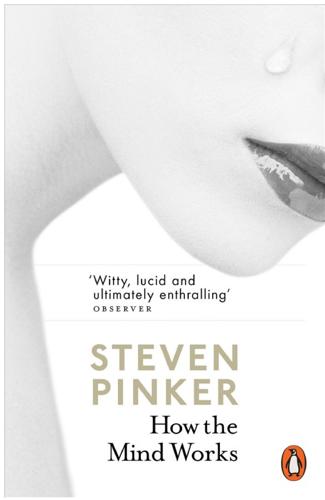
How the Mind Works
by
Steven Pinker
Published 1 Jan 1997
She majored in philosophy. As a student, she was deeply concerned with issues of discrimination and social justice, and also participated in antinuclear demonstrations. What is the probability that Linda is a bankteller? What is the probability that Linda is a bankteller and is active in the feminist movement?” People sometimes give a higher estimate to the probability that she is a feminist bankteller than to the probability that she is a bankteller. But it’s impossible for “A and B” to be more likely than “A” alone. When I presented these findings in class, a student cried out, “I’m ashamed for my species!”
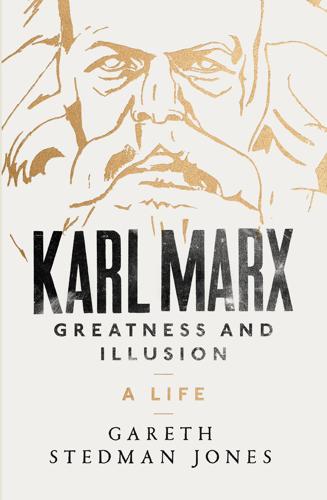
Karl Marx: Greatness and Illusion
by
Gareth Stedman Jones
Published 24 Aug 2016
At the close of the 1850s, a new politics had begun to emerge, in which the radical and socialist ideas of the 1840s reappeared in a more modest and practical form. Ideals of cooperation had been reformulated; trade unionism was expanding and was seeking a more secure legal basis. Liberals and radicals had begun to collaborate in reform-minded suffrage movements, and there were signs of the renewal of a feminist movement which had first appeared in Britain and France in the 1830s. It is perhaps not surprising that, in comparison with earlier texts, the Grundrisse had so little to say about working-class movements. These were developments which Karl did his best to ignore. Karl’s condescension towards developments in political economy seems also to have been misplaced, especially when the defects of his own core arguments in the Grundrisse are considered.

State of Emergency: The Way We Were
by
Dominic Sandbrook
Published 29 Sep 2010
We often think of the Heath years as the inevitable hangover after the wild party of the 1960s, a ‘prolonged “morning after” ’, in Booker’s words. Yet many of the things we associate with the 1960s only gathered momentum in the first half of the following decade. It was in the early 1970s, not the 1960s, that young single women began taking the Pill, the feminist movement really got off the ground, gay liberation first made the headlines and progressive education took hold in many schools. And to complicate matters further, many of the things we habitually associate with the 1970s actually had much deeper roots. Strikes had been a major political issue since the late 1950s, while inflation was already running out of control in the late 1960s.

Ashes to Ashes: America's Hundred-Year Cigarette War, the Public Health, and the Unabashed Triumph of Philip Morris
by
Richard Kluger
Published 1 Jan 1996
From the first, frank words were spoken, led by conference chairman LeMaistre’s introductory remarks: “Many of us have been critical of the lack of concerted action to decrease illness and death from smoking. Many of us have been critical of the agencies sponsoring this conference for failure to unite in a common cause … . Never before have we been afforded collectively such an opportunity … !” Former Surgeon General Luther Terry was equally pointed in criticizing the feminist movement for failing to protest the tobacco industry’s splurge of brands and advertising aimed at women. Perhaps the most stinging remarks delivered at the conference were those jointly authored by a pair of the smartest and best-informed activists on smoking in the public-health community—former Surgeon General Jesse Steinfeld and pulmonologist David Burns, then serving as the senior consulting editor on the Surgeon General’s annual reports to Congress.

Lonely Planet Brazil
by
Lonely Planet
The flip side of this trait is saudade, that woeful manifestation of longing or deep regret, given much play on old bossa nova records. Benedita da Silva: An Afro-Brazilian Woman’s Story of Politics and Love (1997) is the memoir of Brazil’s first Afro-Brazilian female senator, detailing her rise from the favelas to becoming an important political voice. WOMEN IN BRAZIL Brazil had one of the earliest feminist movements in Latin America, and women were among the first in the region to gain the right to vote, in 1932. Today there is a growing number of feminist NGOs, dedicated to educating women about their legal rights and family planning, while also training police how to handle cases of domestic violence.

The Rough Guide to France (Travel Guide eBook)
by
Rough Guides
Published 1 Aug 2019
Mobile en Ville Francemobileenville.org. Information on getting around, mainly in Paris Mobility International USA US miusa.org. Provides information and referral services and international exchange programmes. Tourism for All UK tourismforall.org.uk. Masses of useful information. Women travellers Despite a relatively strong feminist movement, France can still feel like a very male-dominated country, with many men still holding rather strong chauvinist ideas. While change is in the air, with female politicians starting to take a higher profile and giving the male ruling class a run for their money, for the moment many women still suffer the double burden of being housewife and earner.

USA Travel Guide
by
Lonely, Planet
Harvey Milk (1930–78) California’s first openly gay public servant was a tireless advocate in the fight against discrimination, encouraging gays and lesbians to ‘come out, stand up and let the world know. Only that way will we start to achieve our rights’. Milk, along with San Francisco mayor George Moscone, was assassinated in 1978. Betty Friedan (1921–2006) Founder of the National Organization of Women (NOW), Friedan was instrumental in leading the feminist movement of the 1960s. Friedan’s groundbreaking book The Feminine Mystique inspired millions of women to envision a life beyond mere ‘homemaker’. Ralph Nader (1934–) The frequent presidential contender (in 2008, Nader received 738,000 votes) is one of America’s staunchest consumer watchdogs. The Harvard-trained lawyer has played a major role in insuring Americans have safer cars, cheaper medicines and cleaner air and water.